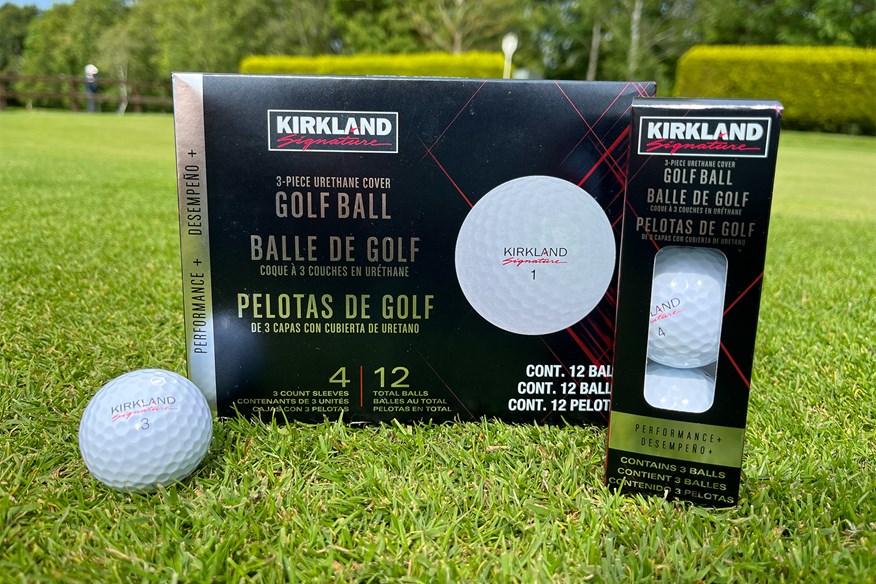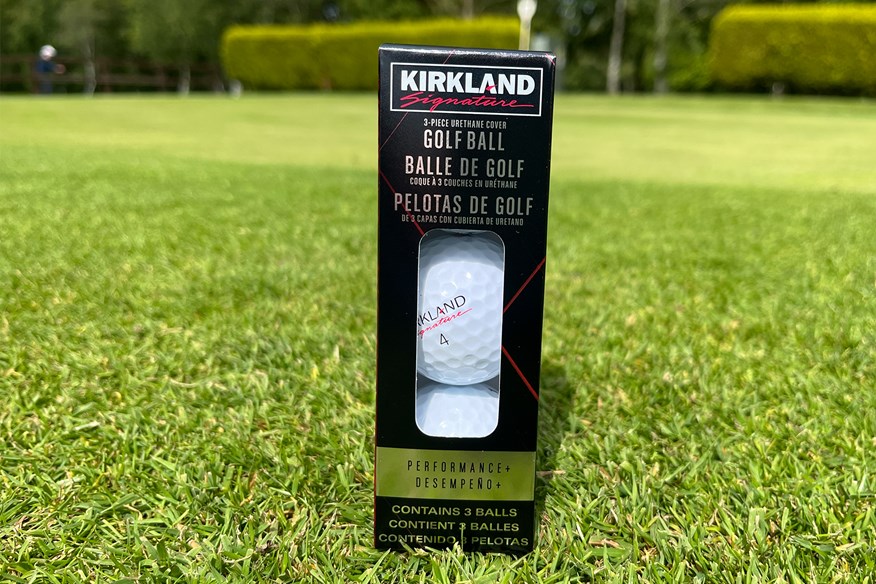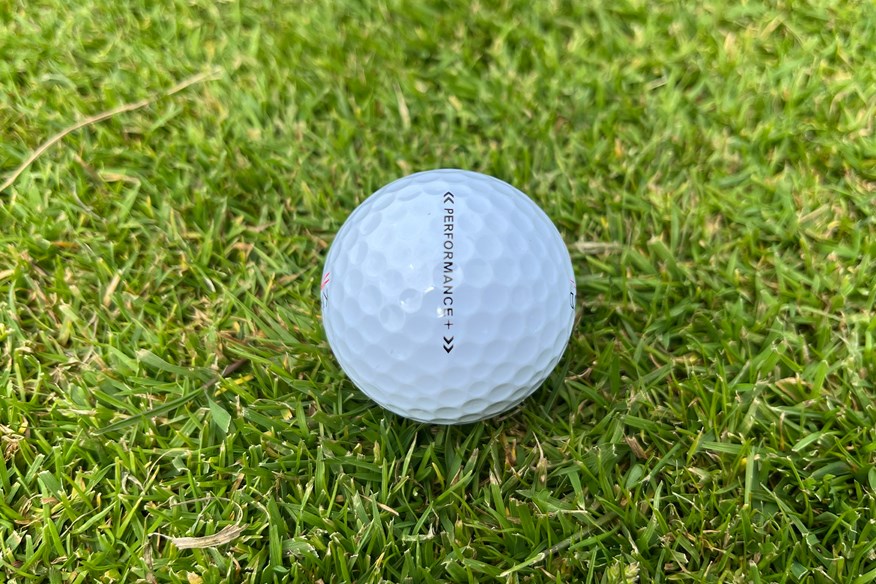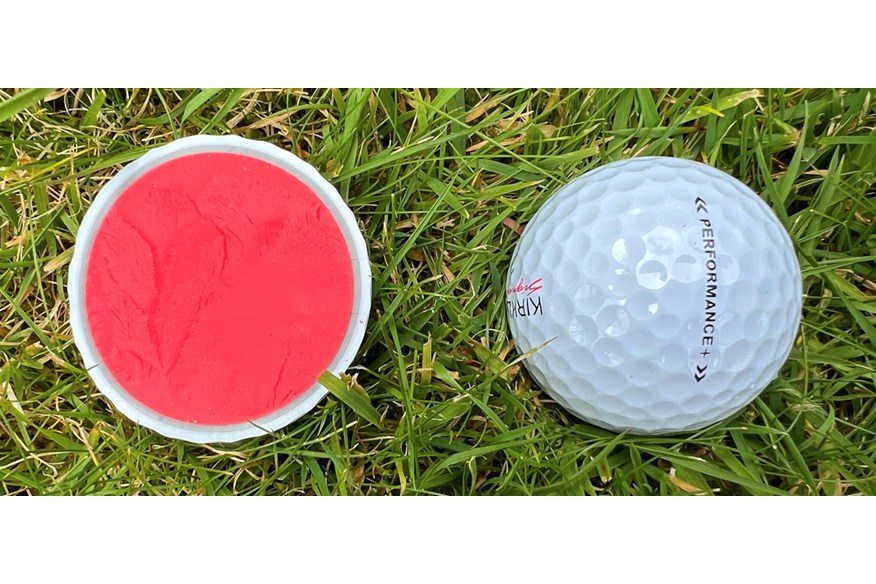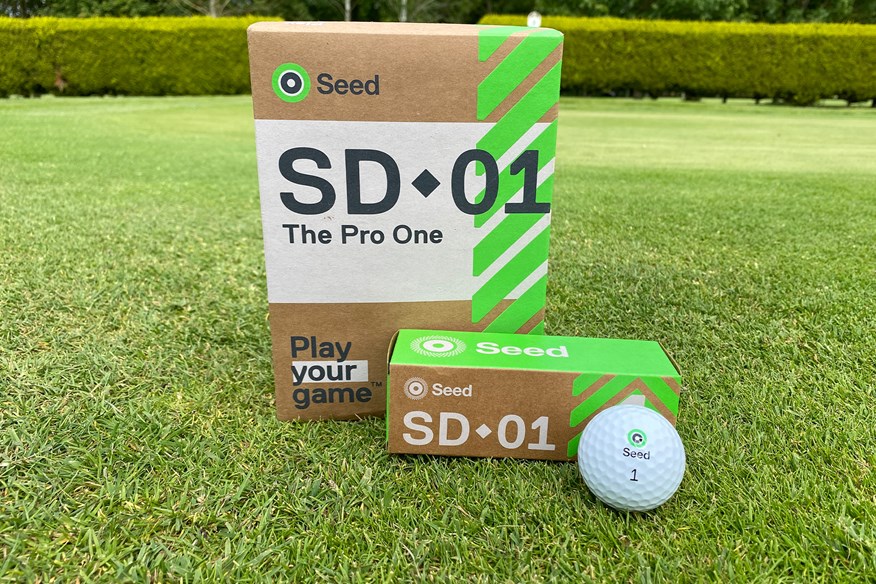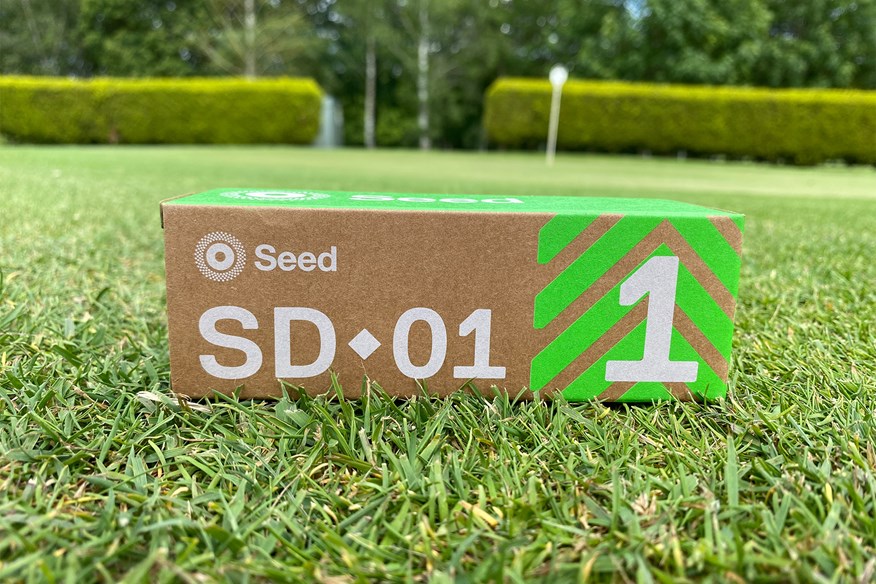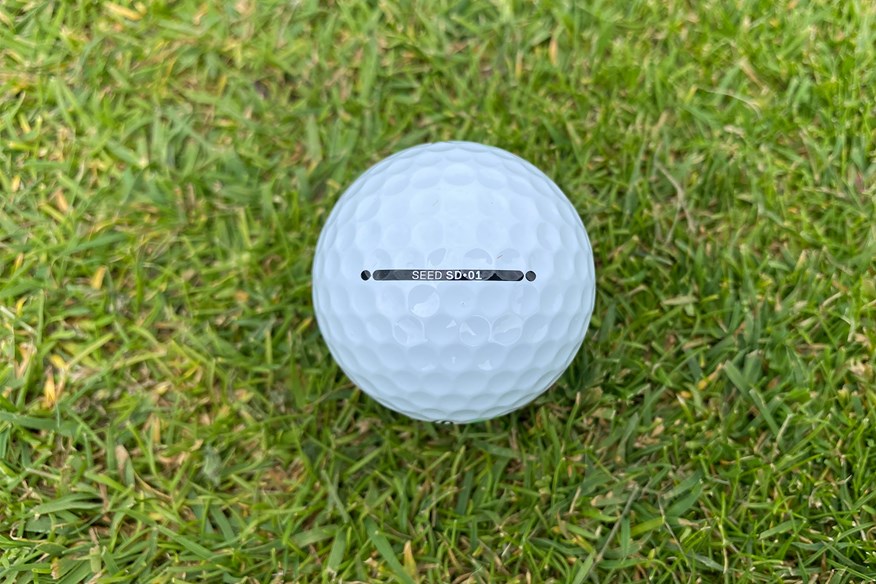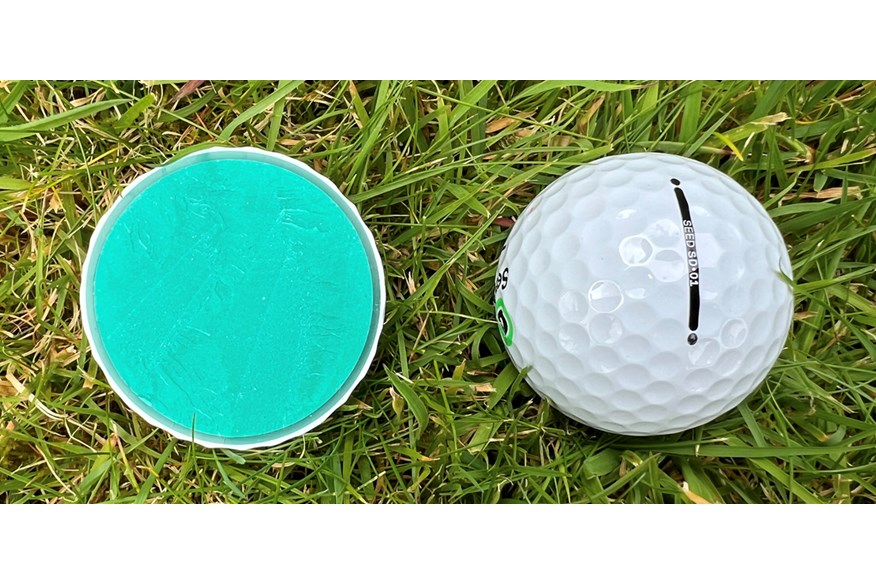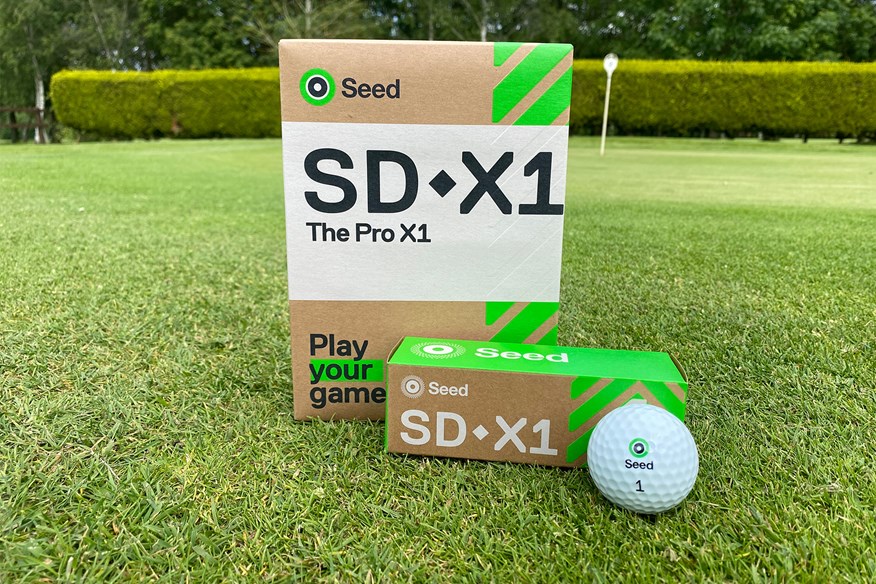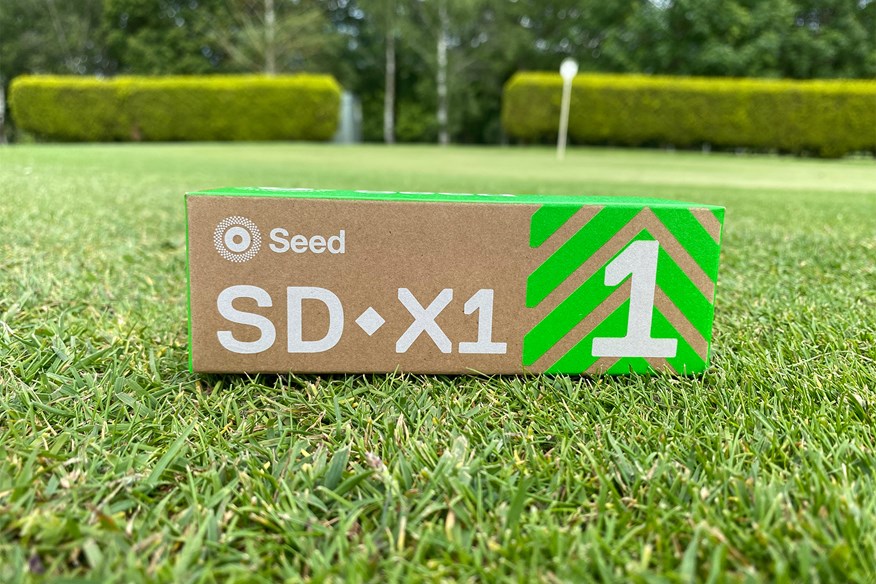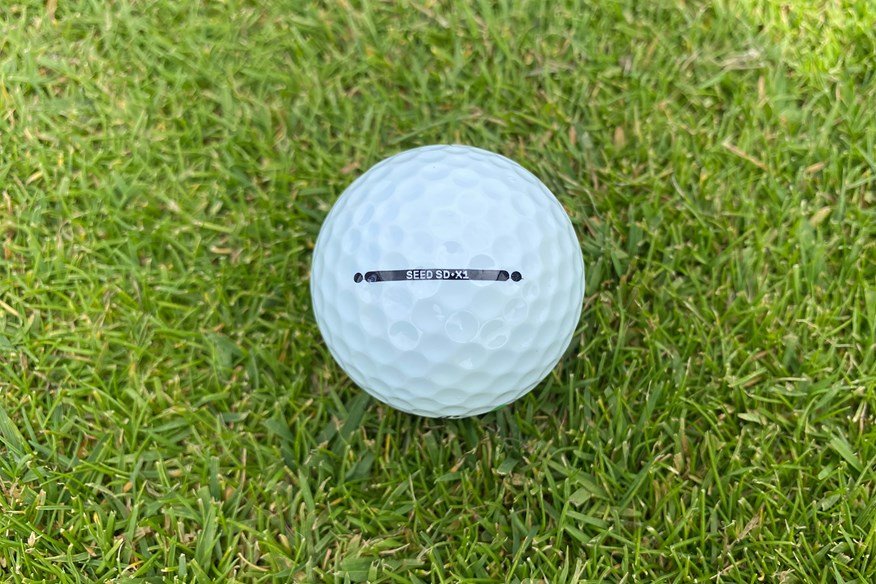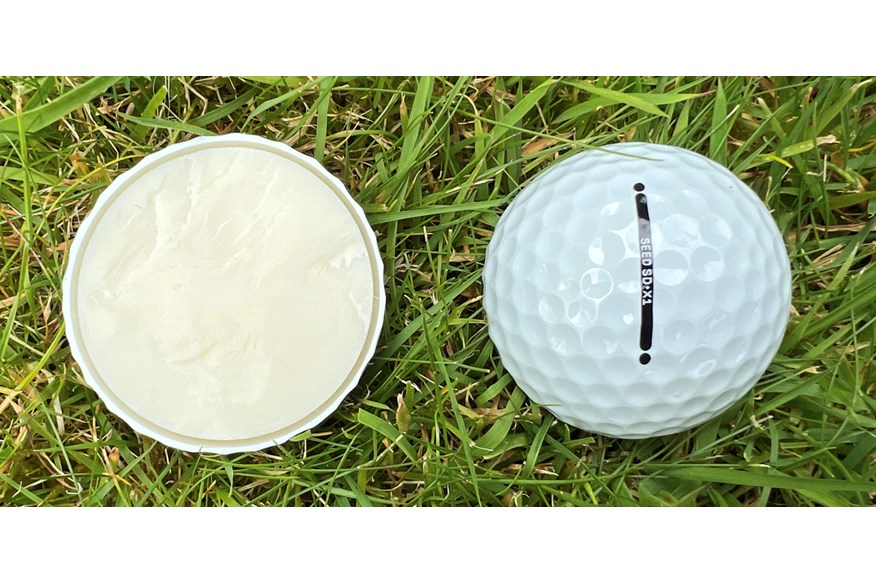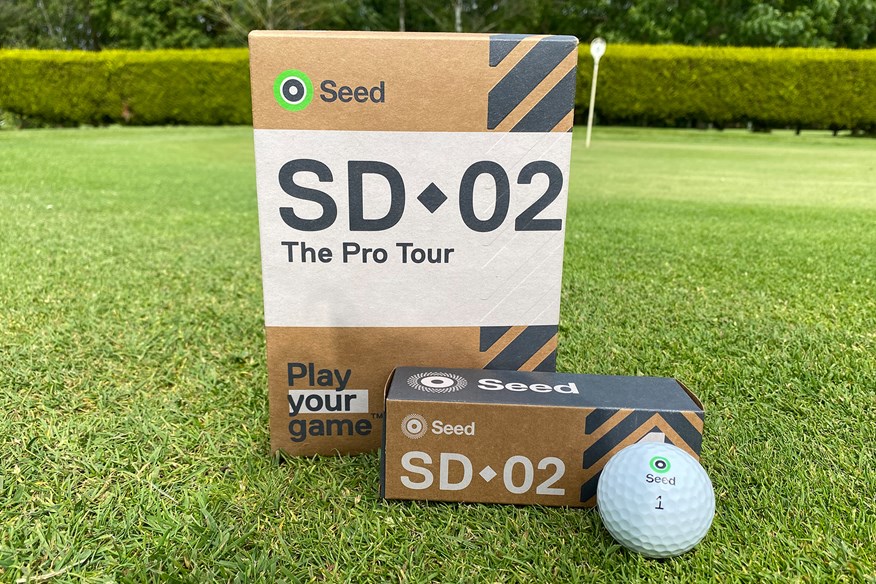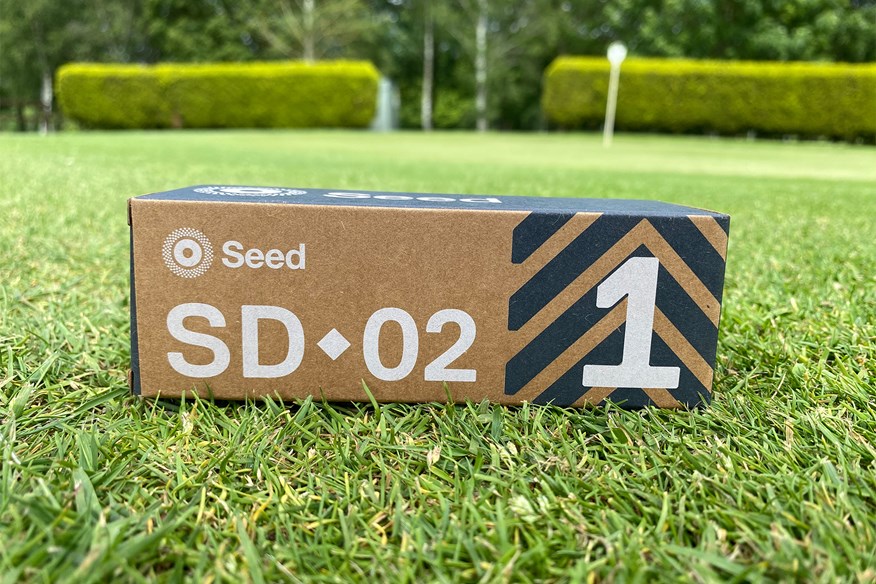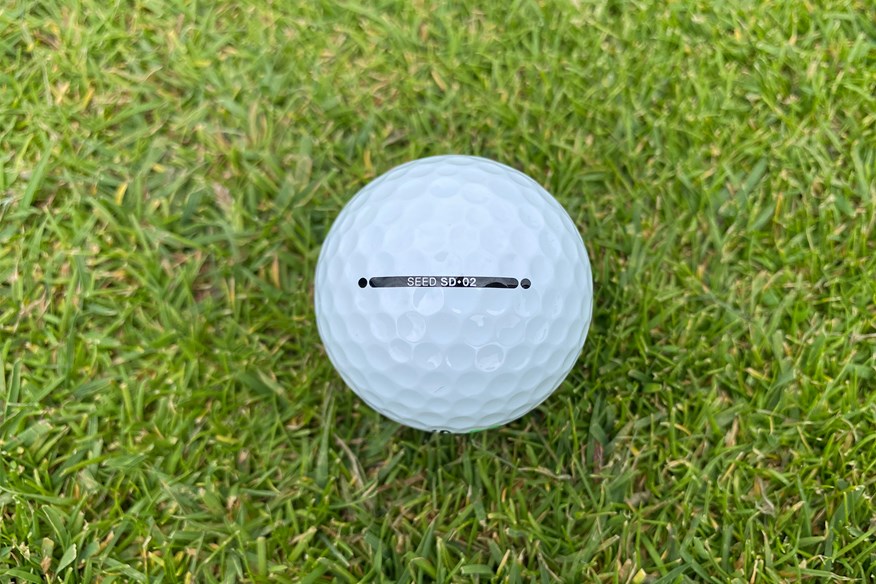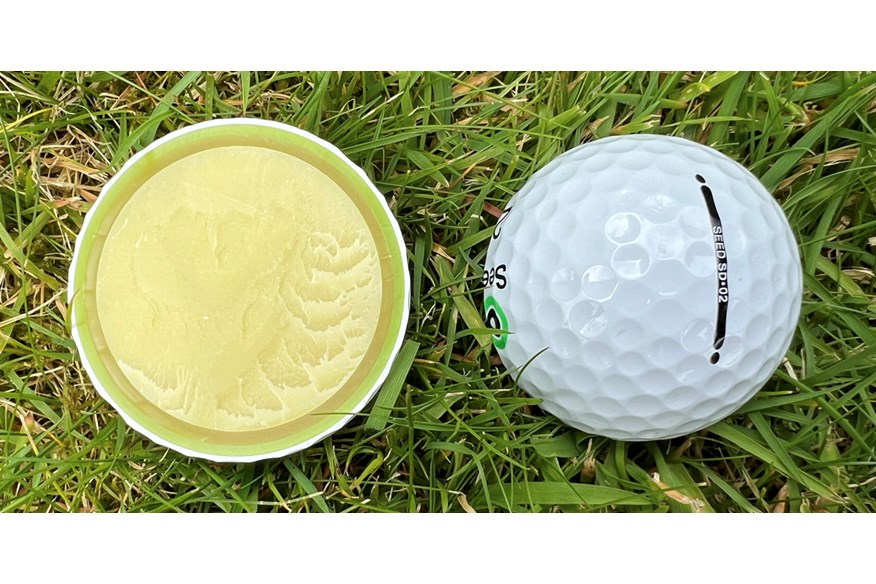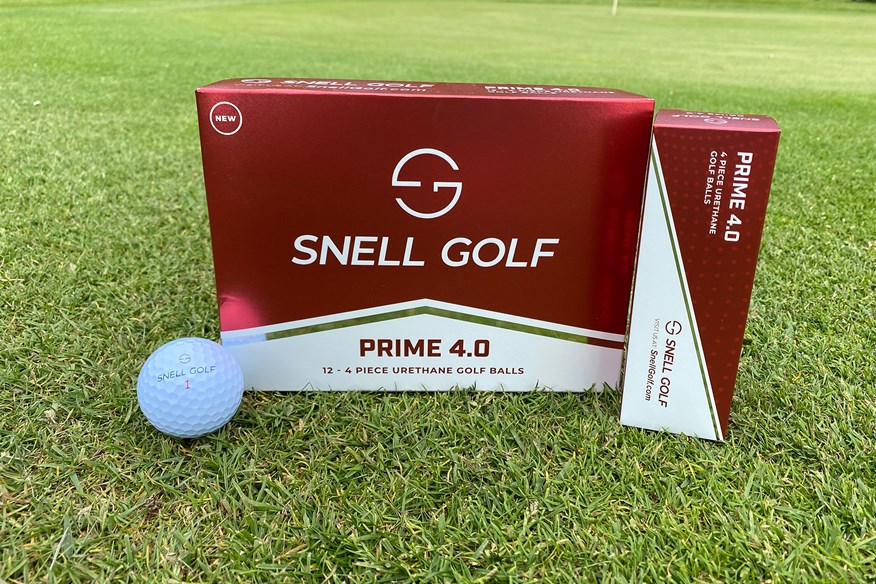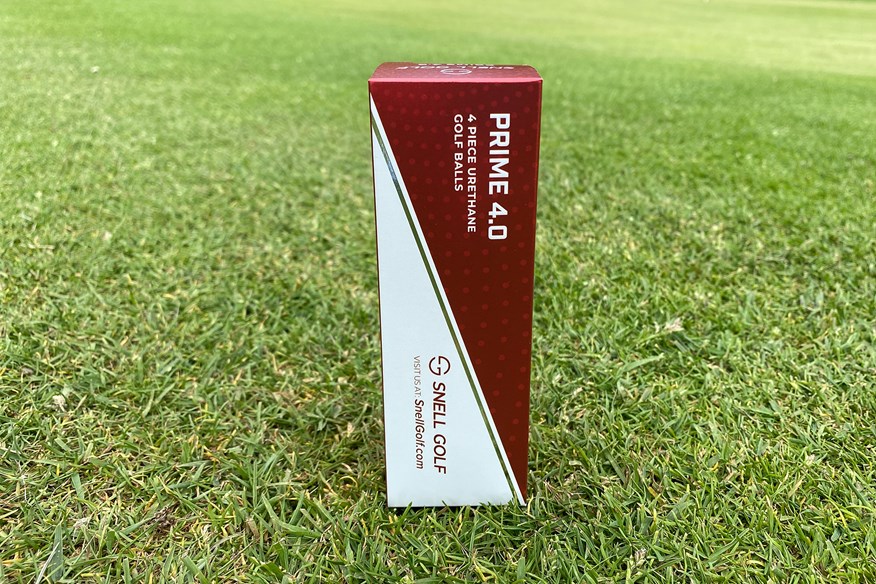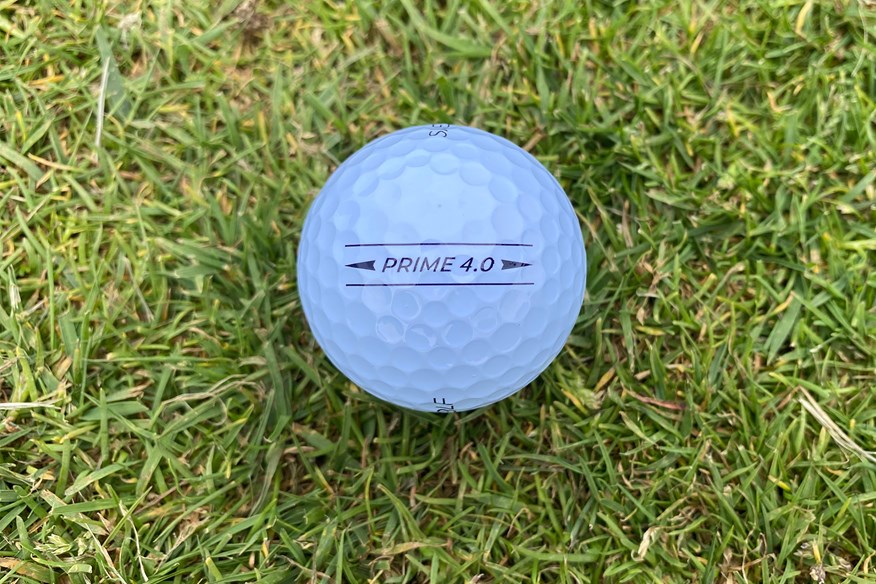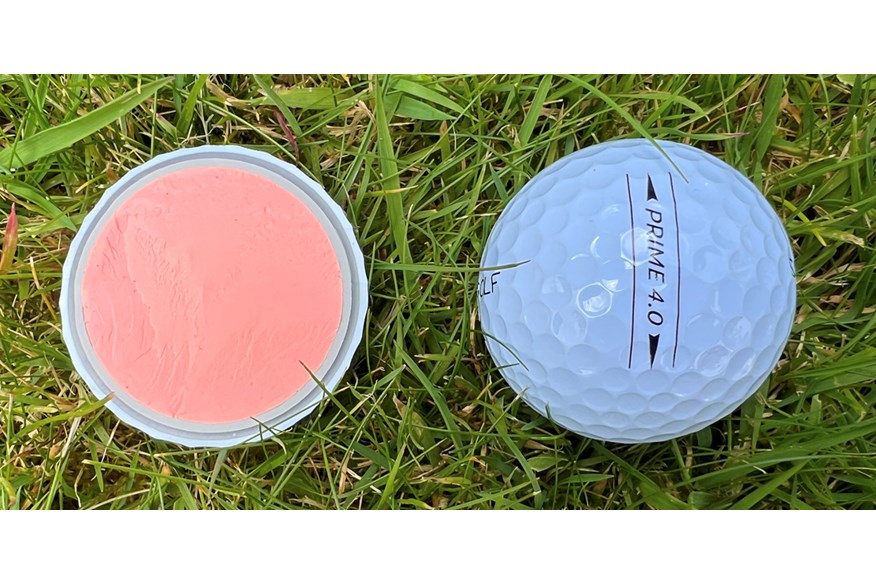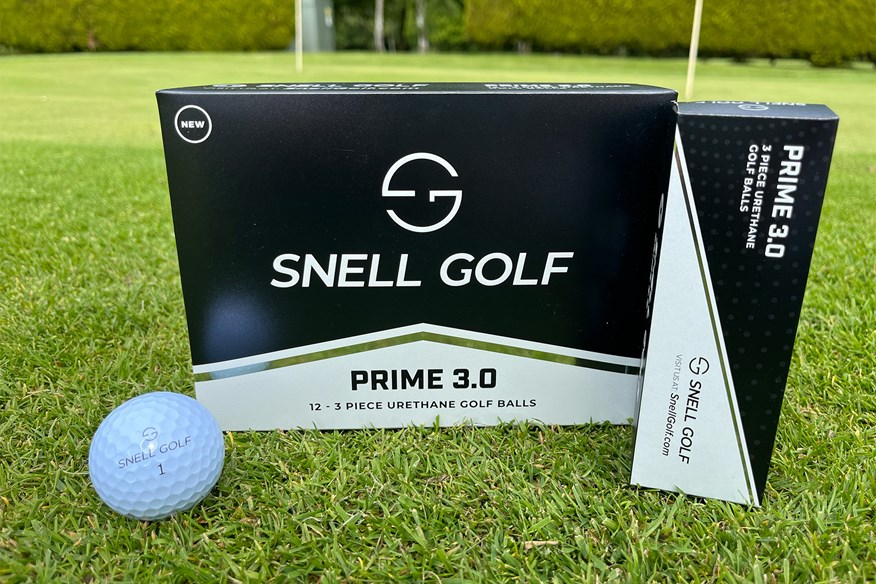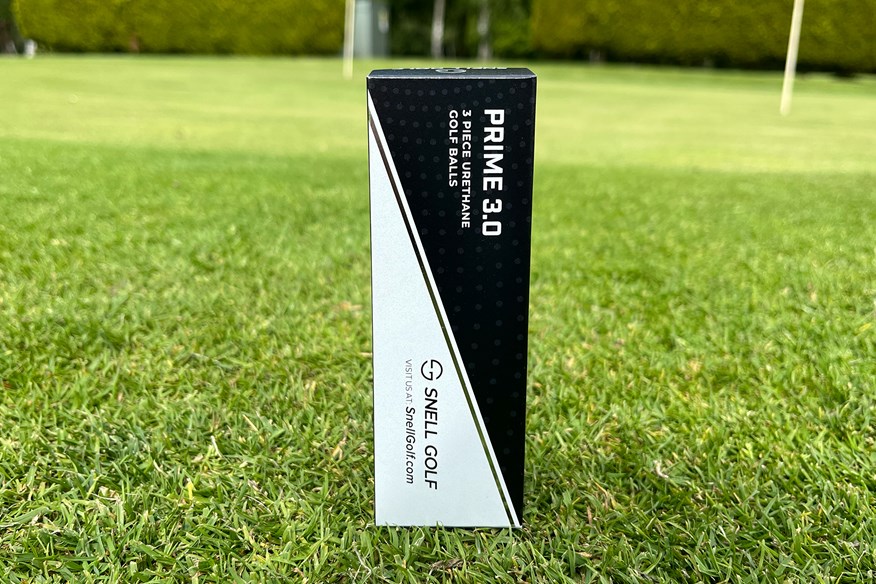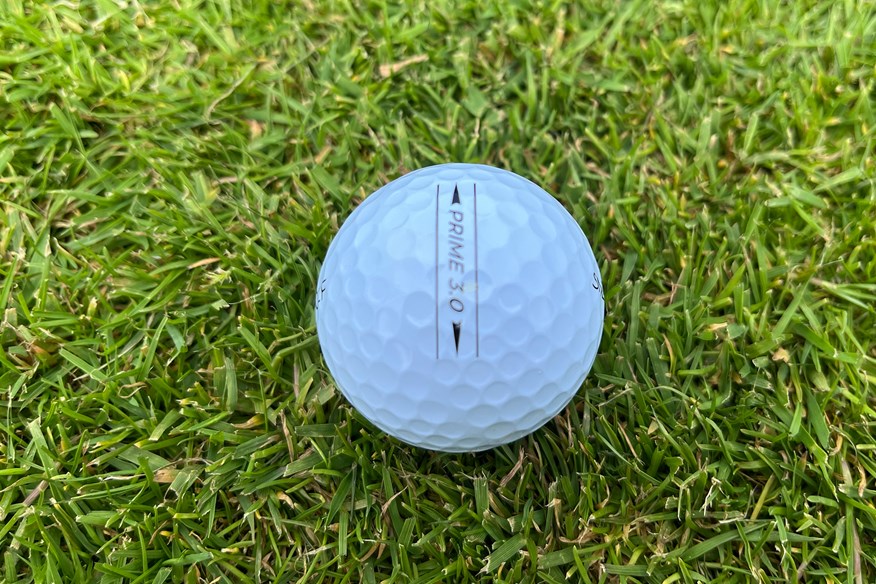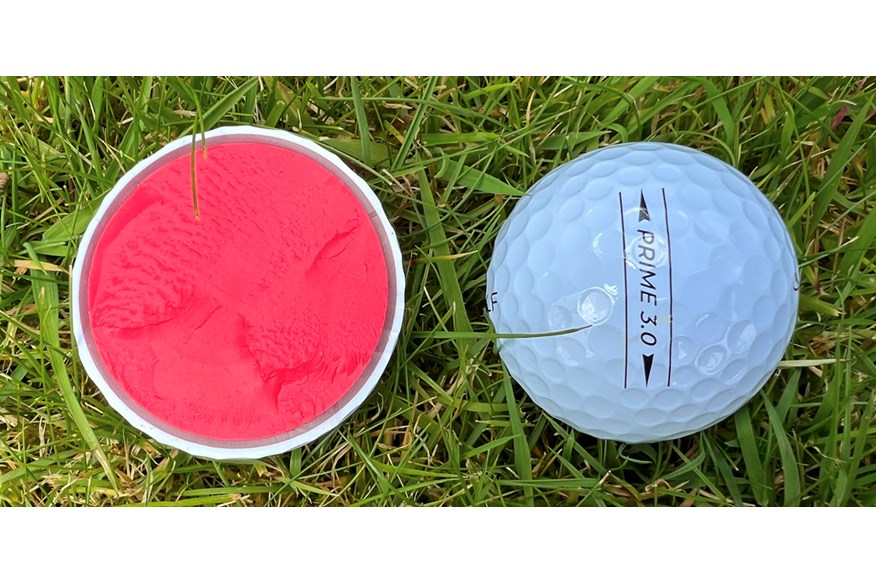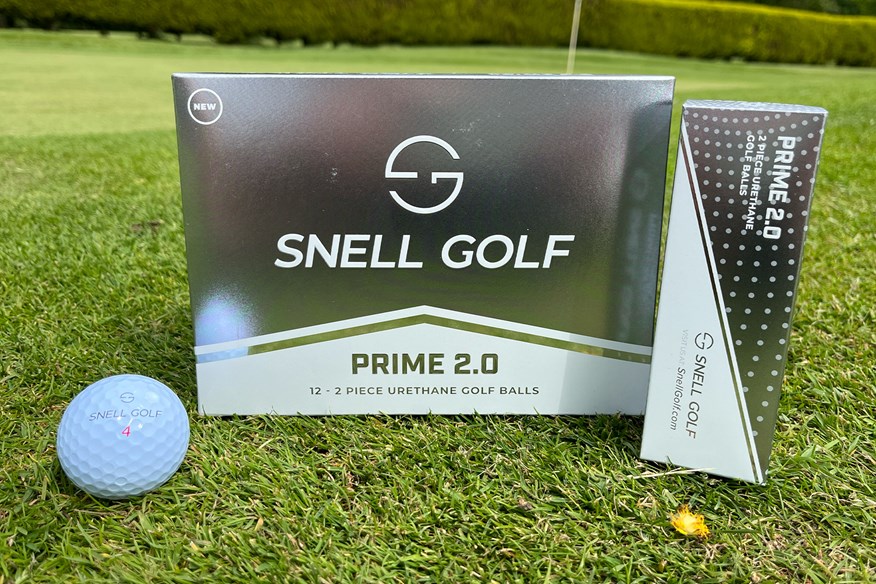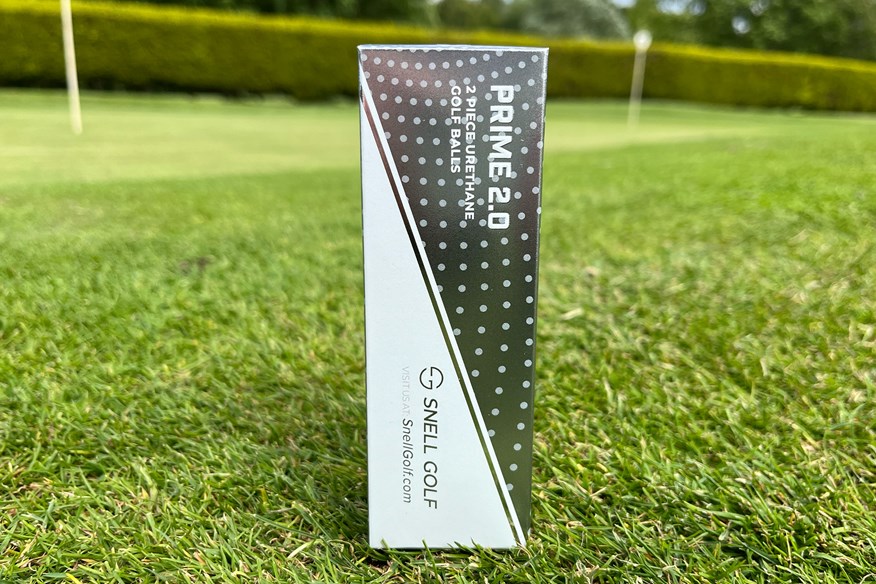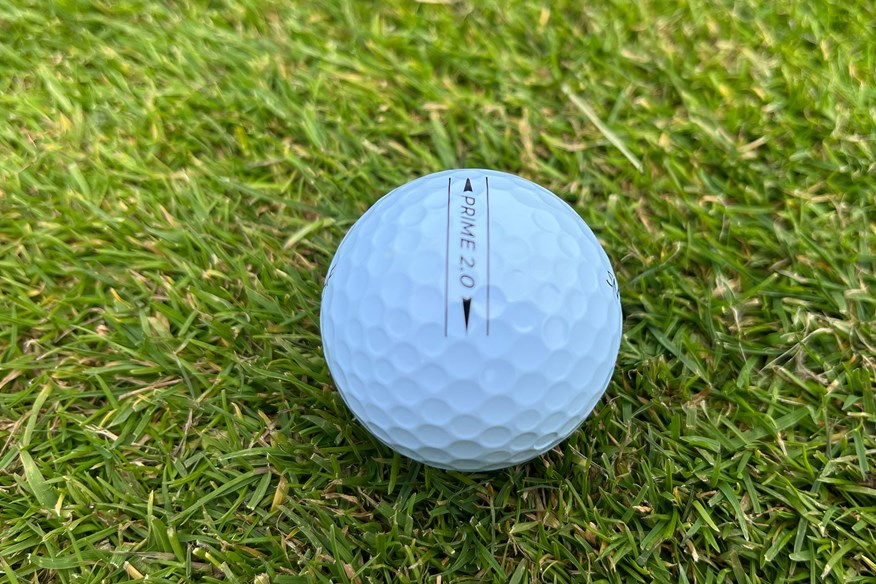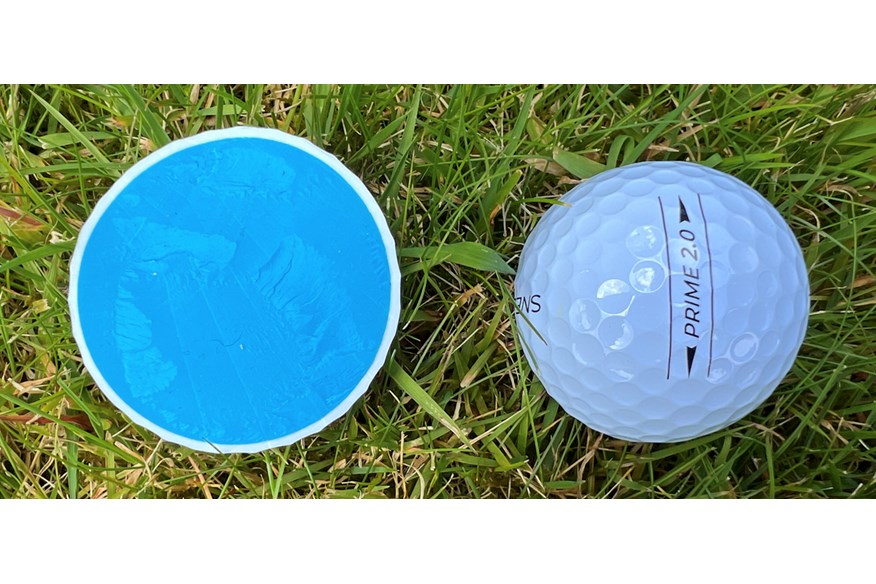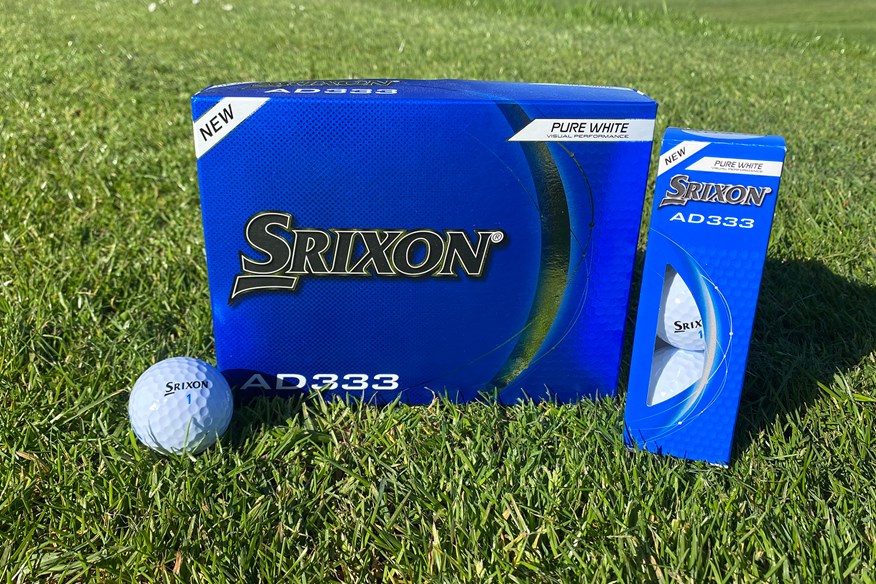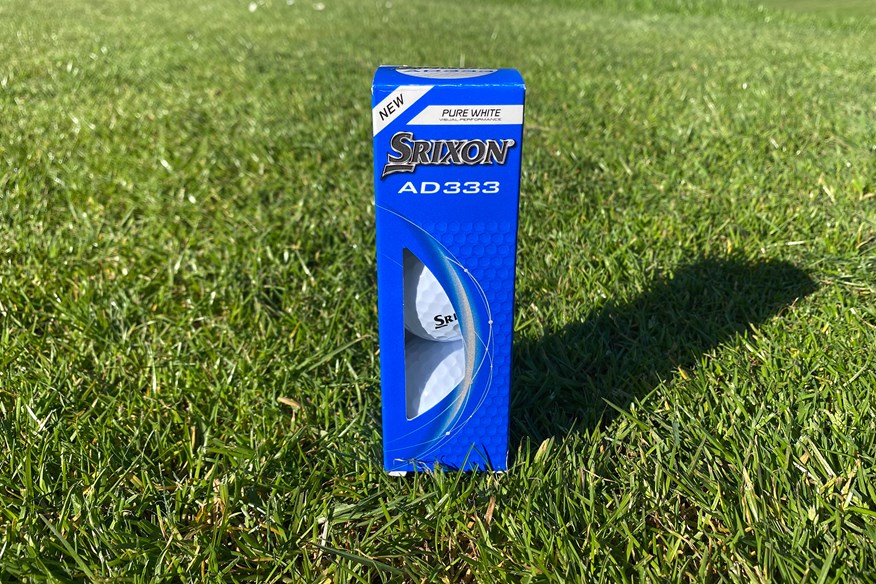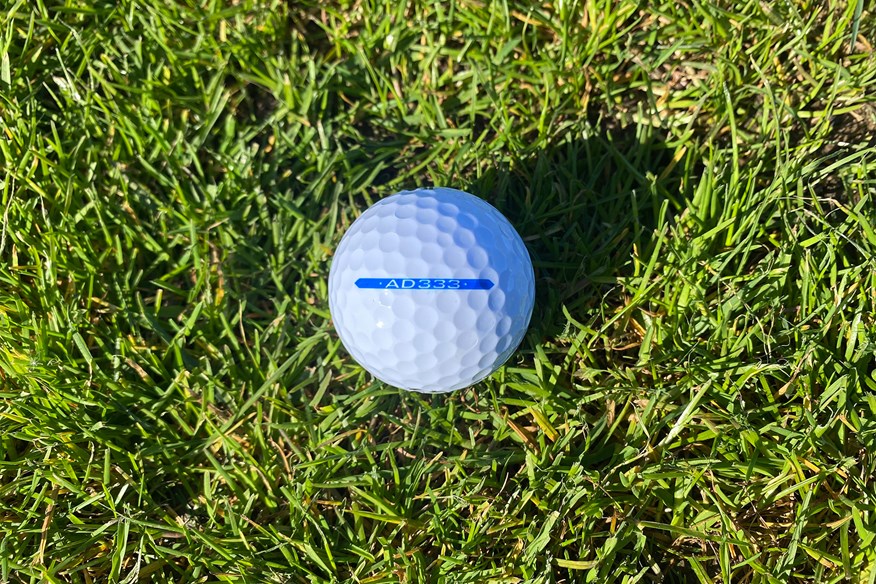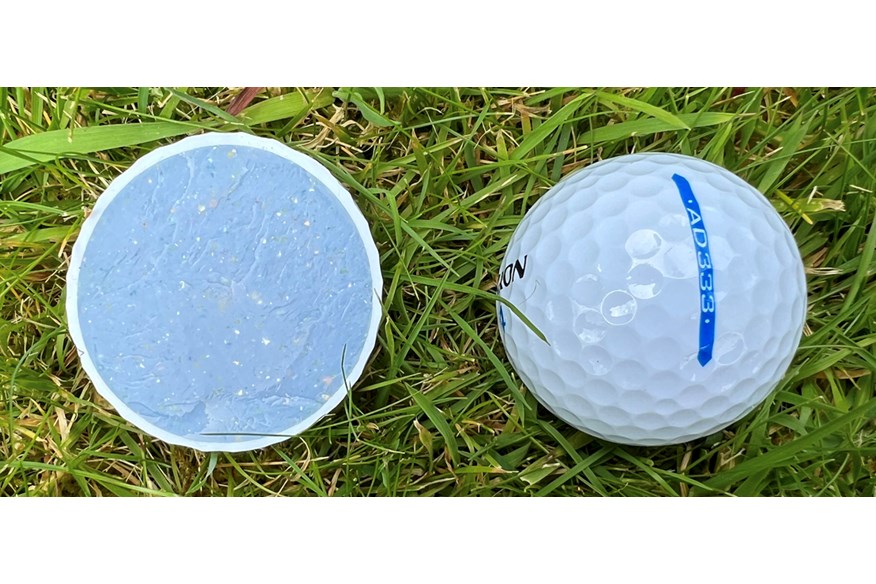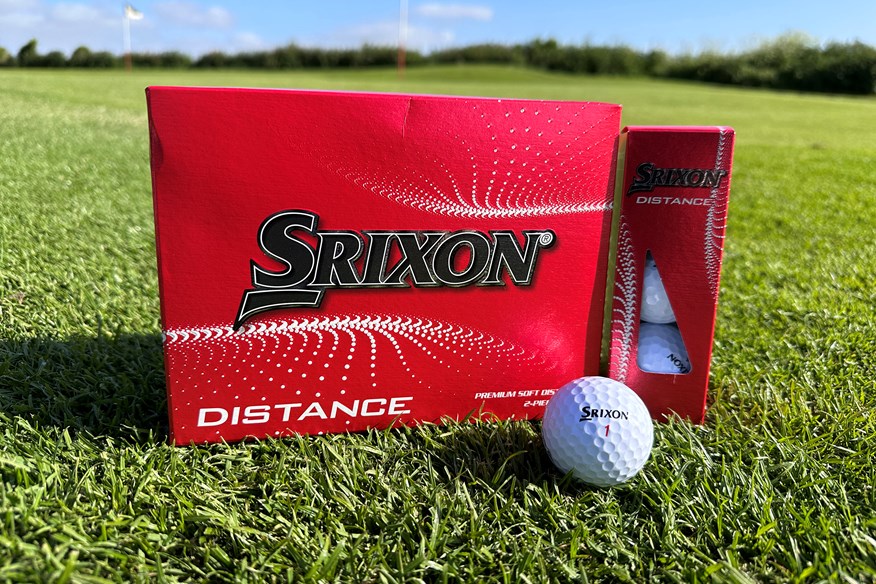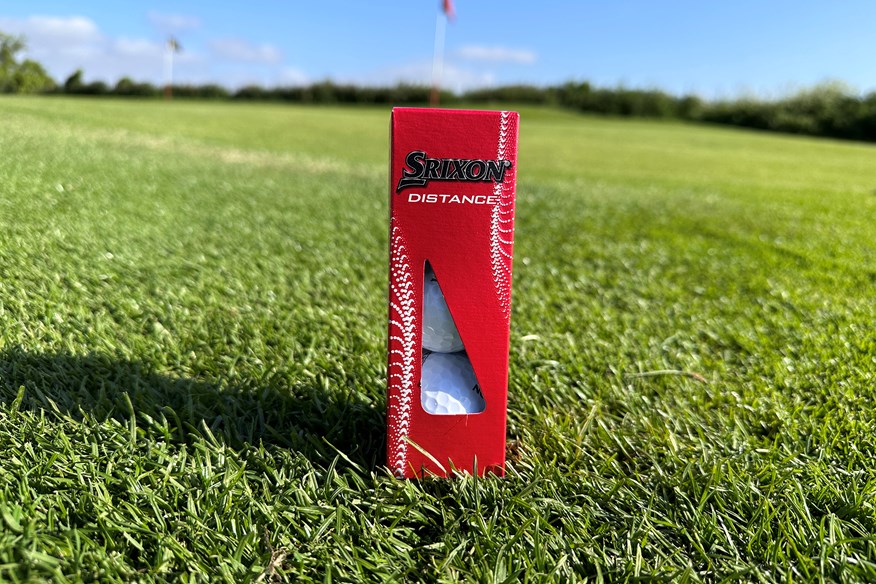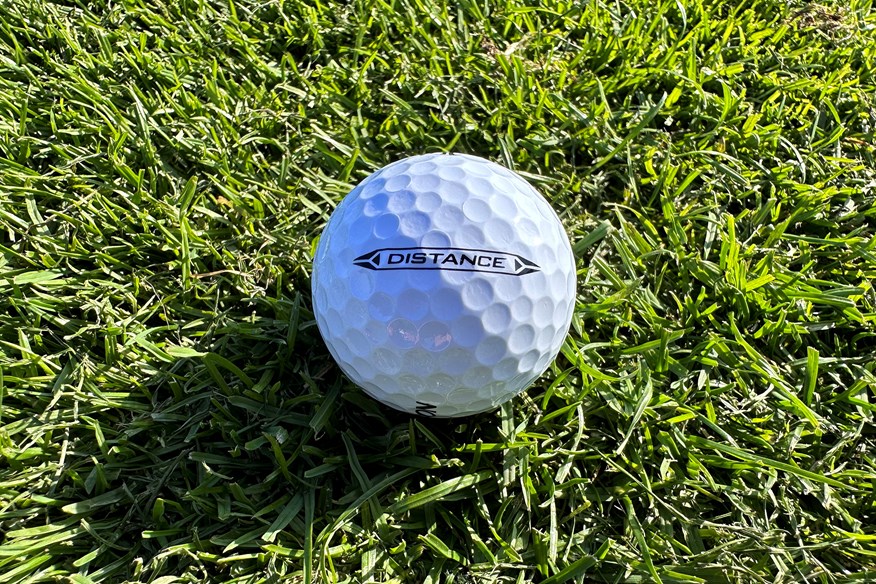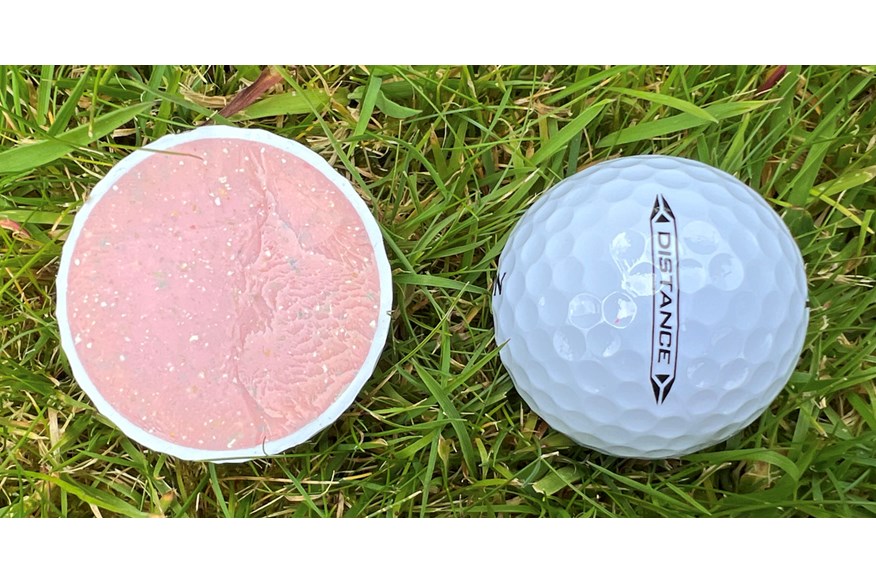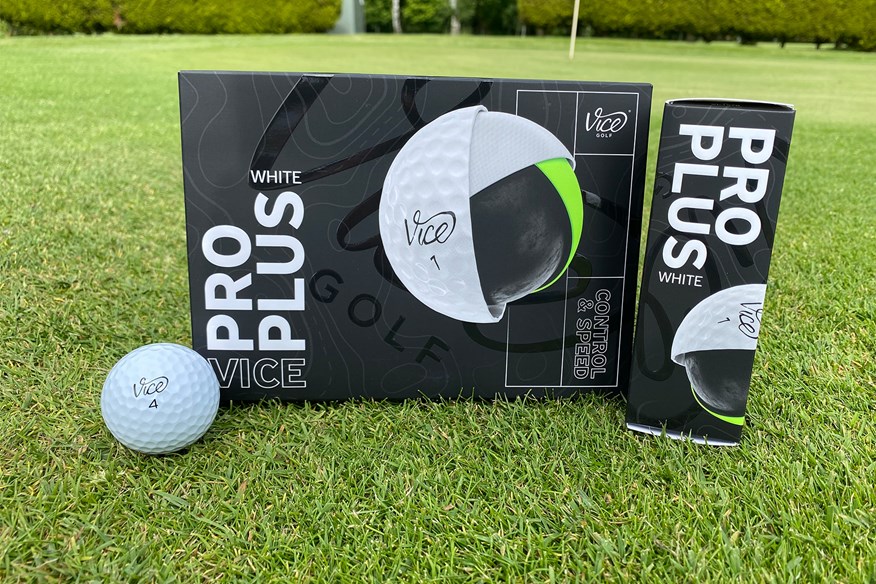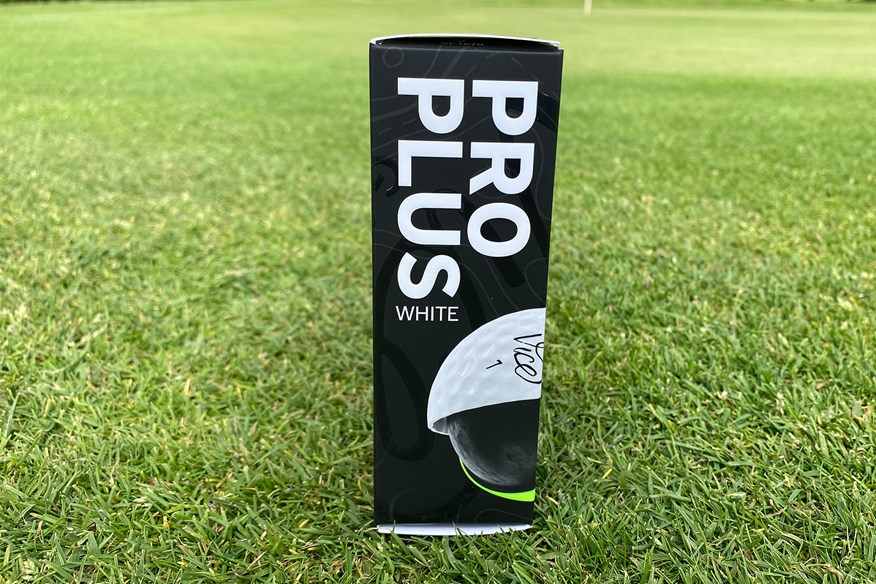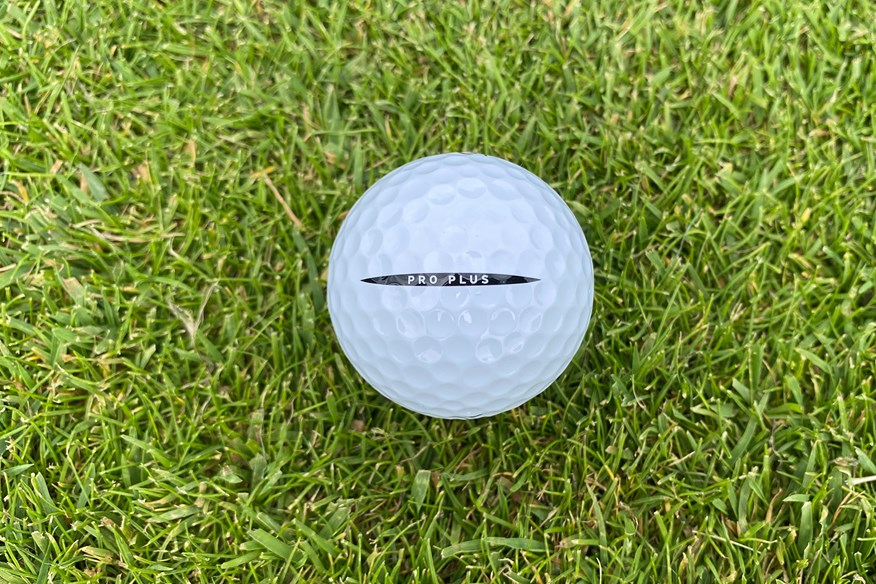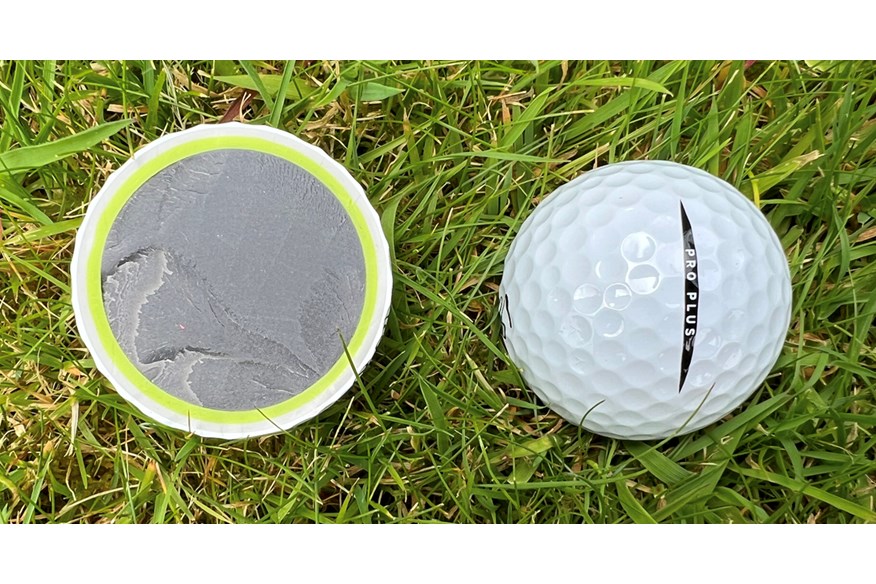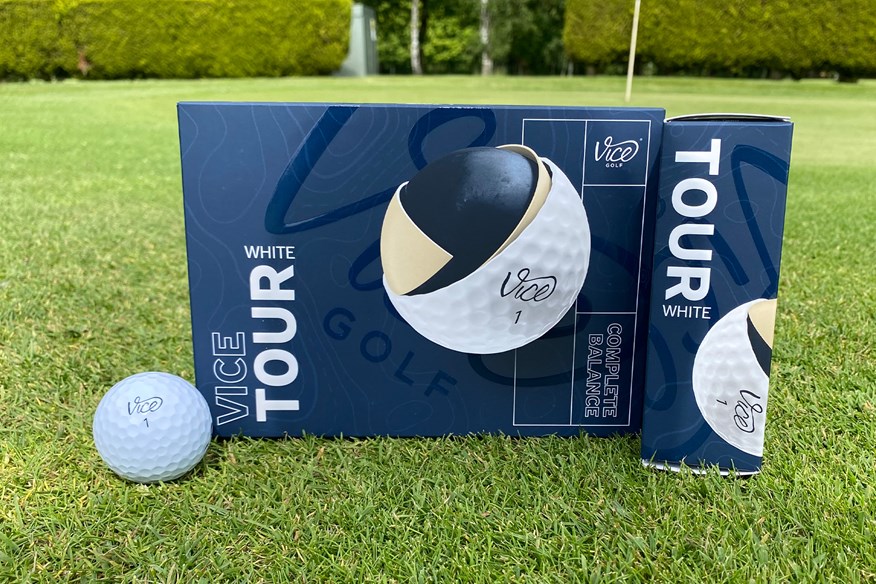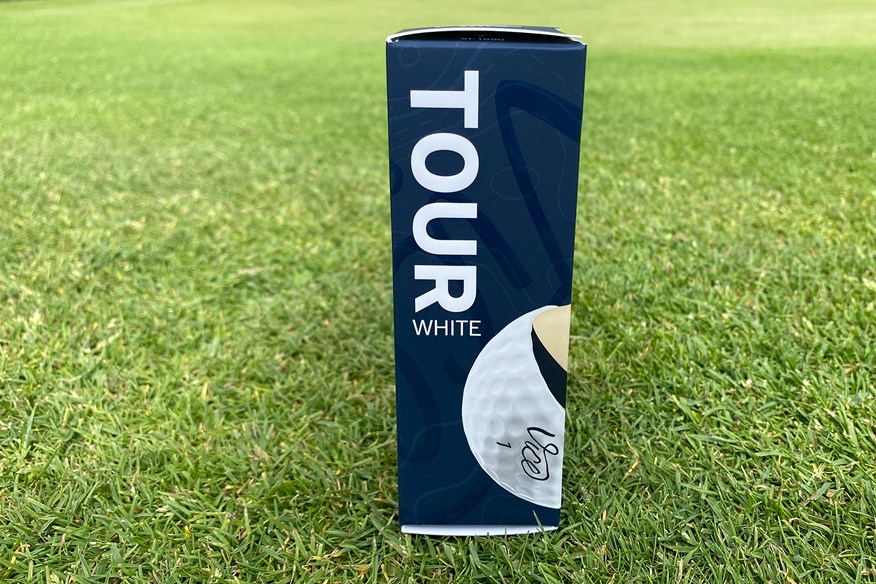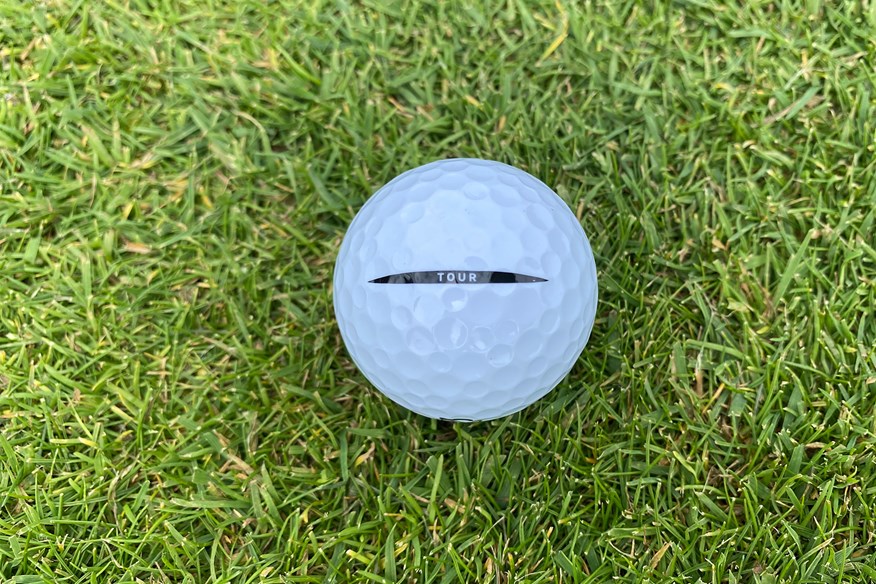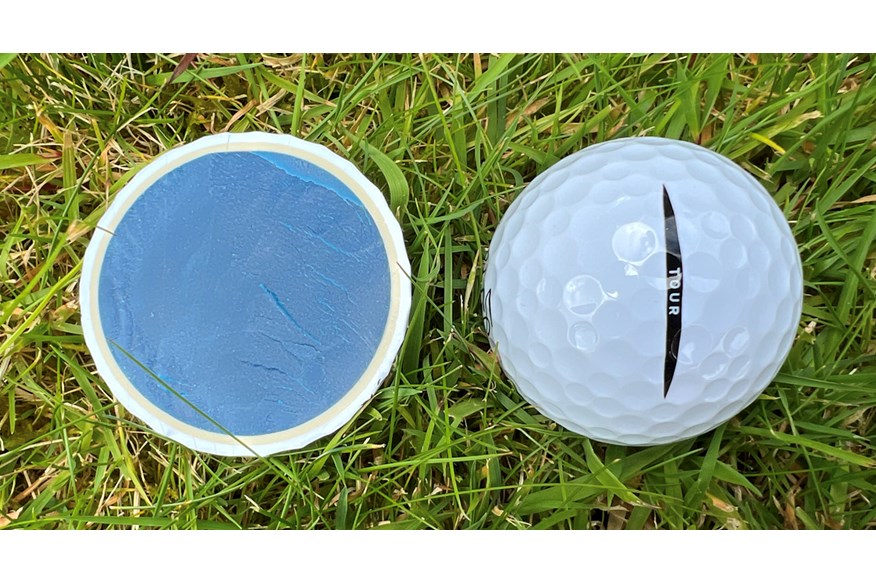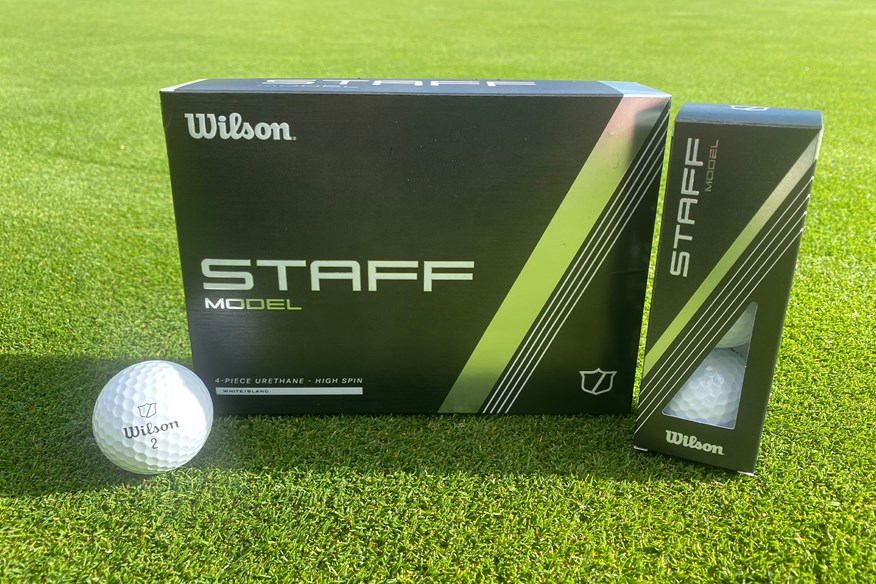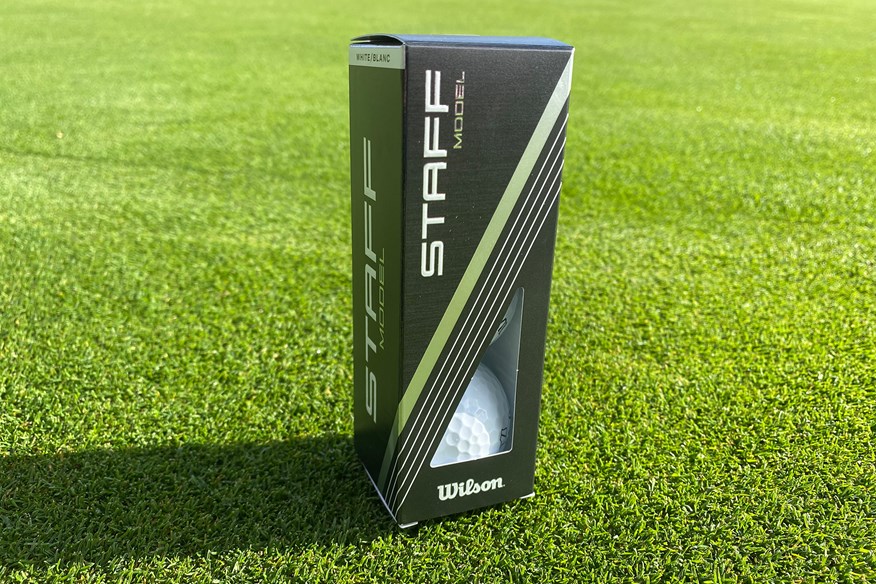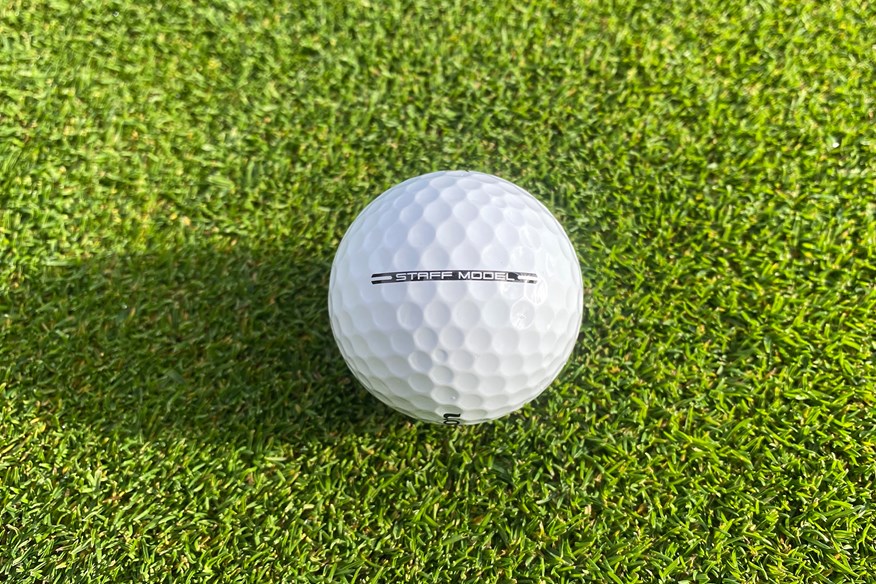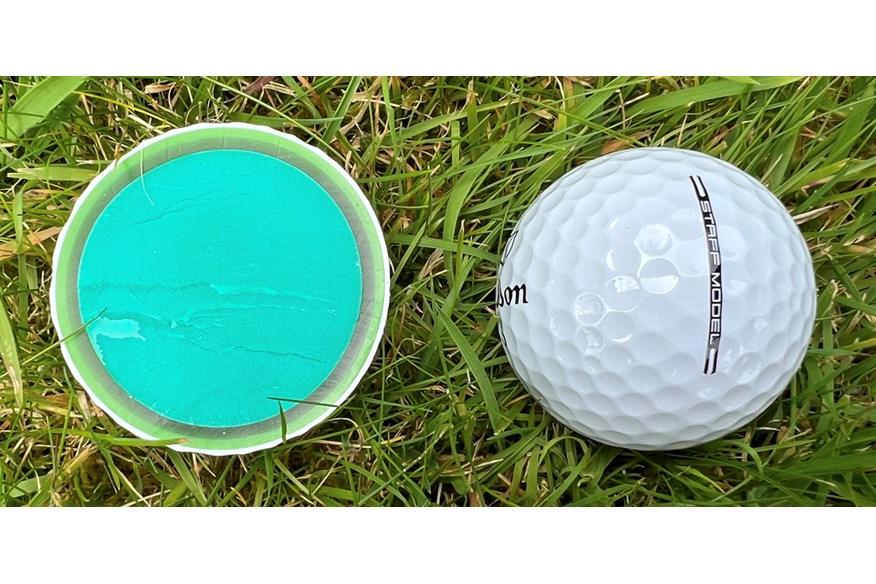I’ve found THE best golf ball for your game in 2025… and used a robot to prove it!
Last updated:
Whether you swing it fast or slow, want maximum distance, increased spin, or are just looking for the best value ball available, our robot test will identify the best golf ball for you…
All golfers want to play the best golf balls for their game, no matter whether you’re an elite player, mid-handicapper, or a beginner.
Unfortunately, finding the best golf ball for your game isn’t always easy. With myriad brands offering a multitude of different models, it can be hard to know where to start. And independent, reliable comparison data that help golfers identify their best golf ball is scarce because it’s incredibly time-consuming and expensive to create, because an R&D robot is needed to for an accurate test.
We’ve been robot-testing golf balls since 2018 and it has become one of the most popular pieces of content we create, helping golfers compare golf ball performance and choose the model that suits them best.
So, with the support of Ping and the Sports Technology Institute at Loughborough University, we did it all again with the latest golf ball models for 2024.
Rather than repeat our 2023 robot golf ball test, which you can read here, we decided to test 22 new models for 2024, as well as including the Titleist Pro V1 and Titleist Pro V1x again. We decided to include these two models again in 2024 because they are the most popular golf balls on Tour and serve as a good benchmark for testing purposes.
With 24 balls tested in total, whether you’re a fast-swinging low handicapper or slow-swinging senior, the results will highlight the best ball for your game.
Robot Tested Golf Balls: Jump To
- Meet the robot
- Meet the experts
- How we did it
- Which golf balls are included?
- Will a 2, 3, 4, or 5-piece golf ball best help your game?
- Ball-by-ball analysis
- The top-performing golf balls
- Data analysis
- What we learned
Why we used a robot for testing
After running such a successful robot golf ball test with the Sports Technology Institute at Loughborough University last year it made perfect sense for us to partner with the leading sports science university in the world once again.
We don’t regularly use robots for testing, because they’re expensive to get access to and, unlike golfers, they don’t mishit shots. But to accurately gauge performance differences between golf balls you absolutely have to test on a robot. Human testing is crucial for intangibles like feel and looks, but no golfer on the planet has the consistency or stamina to hit shots at the same speed and from the same location again and again as a robot can.
Thanks to Loughborough’s indoor test lab we created a controlled test environment without the interference of weather conditions, which is a huge concern when hitting thousands of shots down a range over five days. It also meant we could easily retrieve any ball that presented abnormal flight behaviors and slice it open to see if there were any deficiencies in its construction.
You can read more about how we test golf equipment here.
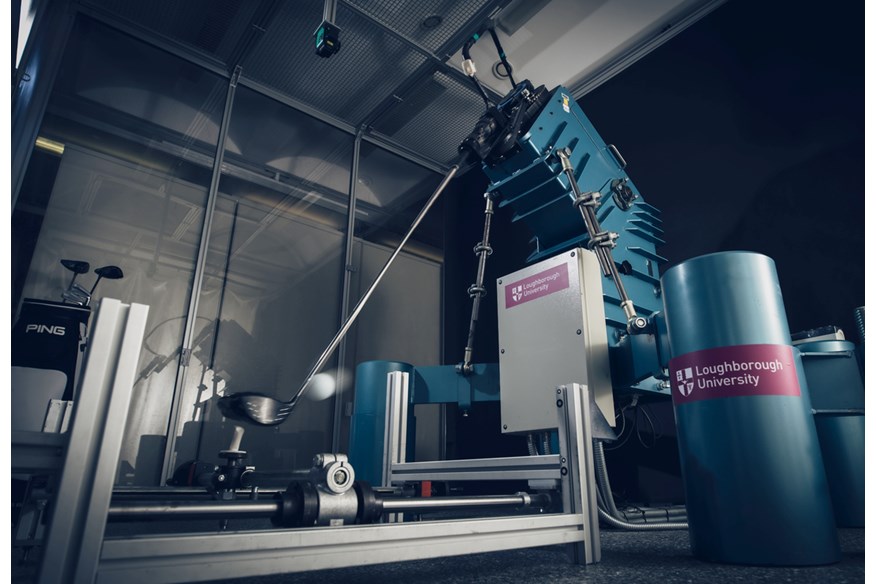
This is no ordinary robot
Loughborough’s main research robot is the Miyamae Shot V (they also have an older ex-Dunlop Slazenger model that produces a repeatable but much cruder swing). The Miyamae was made in Japan and cost $100,000 nearly 20 years ago when the university bought it. Unlike the Golf Labs robot used by others, which is pretty much standard in most major golf brands’ R&D labs, the Miyamae works on three axes so it can be set up to mimic a real golfer’s swing. Over the years the boffins at Loughborough have stripped the robot back, replacing the mechanics and redesigning the interface used to set it up. To put it lightly, this is no ordinary off-the-rack R&D golf robot.
Dr Jonathan Roberts, Senior Lecturer at the Sports Technology Institute, wanted to see if the robot could better replicate a real golfer swing, rather than simply swinging a golf club consistently and repetitively like engineers usually want when comparing golf equipment. With some tinkering from his team, the Miyamae robot has three independently controllable axes that allow sufficient tailoring of club delivery so the university can replicate any golfer’s swing on the planet.
The Miyamae swings around a central hub, like a golfer’s chest. It allows cocking of the wrists and rotation around the shaft axis to replicate how the golfer’s hands rotate and square up the face coming into impact. All three axes are independently controlled.
Setting up the robot
With so much adjustability it takes time to set the robot up to deliver the club in the way you want, and additional time to check the machine is consistently hitting these parameters. For us to best replicate how human golfers launch drives into the air, we wanted shots to be hit with a neutral path, and be neither up nor down onto the ball for driver shots. For irons and wedges, a golfer’s typical attack is down onto the back of the ball, all characteristics we could dial in through the robot’s setup.
Although the robot can hit a couple of shots a minute once set up, getting the set-up correct can take an hour or more, particularly when switching from drivers to irons, or irons to wedges.
At Loughborough, Dr Jonathan Roberts has worked on the biomechanical analysis of golfers, using motion capture for the past few years. It’s next-generation stuff and is for a new analysis system Ping are creating to allow them to better understand how different swings are more suited to different types of equipment. This motion capture data was used to program the robot for our test, so real swing characteristics have influenced how every shot has been hit.
Dr. Roberts told us: “The transition at the top of the backswing feels important, but most R&D robots start swinging from parallel to the ground (so not in the usual address position) and have a pause at the top of the backswing.
“Our robot can recreate how somebody loads the shaft in a certain way, we also get a natural transition from backswing to downswing and can look at how the shaft deforms and so on.”
Meet the experts
Dr Jonathan Roberts
Senior Lecturer, Loughborough University, Sports Technology Institute
Dr Roberts (below left) has worked at Loughborough University for over 25 years. He’s completed a Callaway-sponsored PhD on the feel of golf shots, as well as completing golf ball consultancy work for Nike, and more recently collaborating with Ping.
His knowledge isn’t limited to golf; he works as part of a research group for Adidas and has been involved in the design of the World Cup football for the last 20+ years.

James Morris
Research Associate
James (above right) attended Loughborough University as a student, he’s completed a PhD for Adidas and developed a new measurement system for recording how clothing and skin move relative to each other. James teaches undergraduate modules on the robot and has recently played a role in looking at the effect spray on impact paint has when testing golf clubs.
As part of his research backed by Adidas he’s worked on the 2024 and 2026 European Championship footballs looking at how cosmetic designs impact aerodynamics. He’s not much of a football fan though, he prefers cycling, and his dream job is doing exactly what he does at the Sports Technology Institute but of course with greater financial reward.
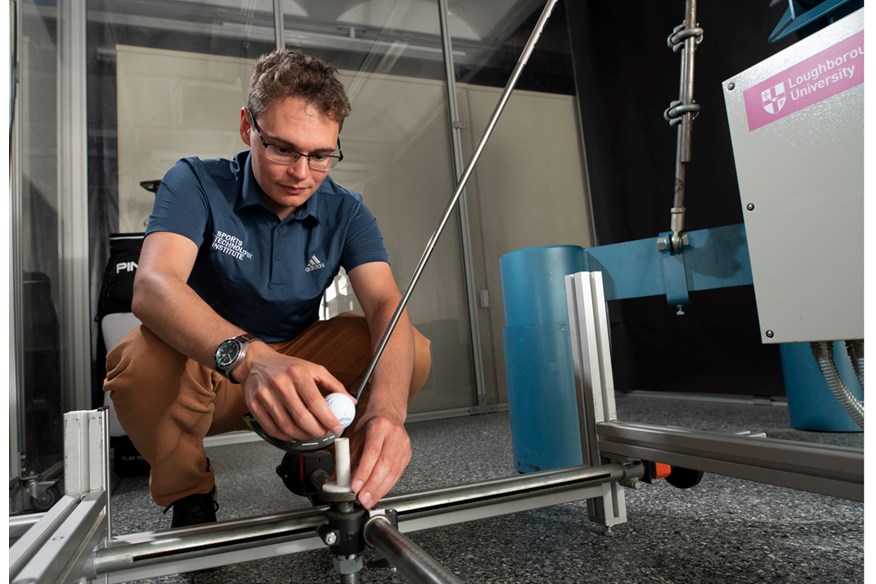
How we did it
Some will argue golfers aren’t robots and there’s no element of ‘feel’ within this test. But experience tells me the only true way to see the difference between each ball’s performance is a repeatable swing and consistently accurate impact location, which no human tester can reproduce. Certainly not across different swing speeds and various club categories, especially when 24 different golf ball models need testing.
Our test took well over a week to complete, we spent six months behind the scenes planning how to make it happen again, and I spent a week crunching the numbers to come up with our top-performing golf balls of 2024. Here’s how we did it…
Why we used Loughborough University
With the costs of buying an R&D golf robot running to $100,000+, there aren’t too many options around. And the brands that have them also make golf balls, which obviously presents a conflict of interest should we use one to perform a golf ball test against competitor models.
Loughborough University, though, is often referred to as the best sports science university in the world, and thanks to Ping’s (who have invested in an R&D lab on campus) introduction a couple of years ago it made perfect sense to explore the opportunity to collaborate again in 2024.
It’s taken months of setting up, but with Senior Lecturer Jonathan Roberts being a golfer and understanding our cause, and with Loughborough and Ping having no vested interest in golf balls, our partnership made perfect sense.
Why we test using different clubs and swing speeds
We have always been about the club golfer here at TG, so it was vitally important to us to test each golf ball at different swing speeds to show how each model will perform for you. So, no matter what your speed, you’ll find plenty of useful information within this test tailored to your own game.
Our driver shots were hit at speeds of 85, 100, and 115 mph (moderate, mid, and fast). For 7-iron we used a mid-80 mph speed. Pitching wedge was hit at 74 mph. To ensure our results reflect real-world golfers we’ve also used the Ping clubs most suited to these speeds.
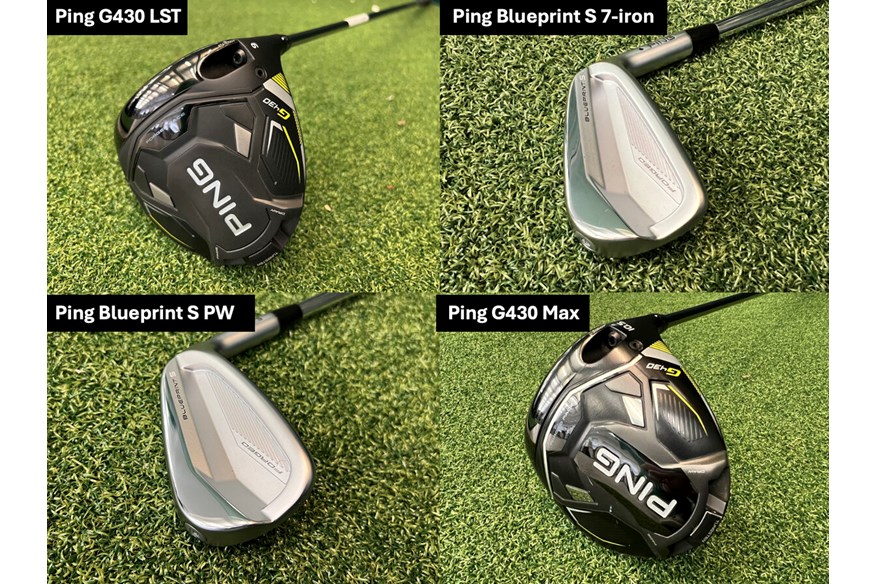
A 9° Ping G430 LST driver (with X flex Tour 2.0 Chrome shaft) at 115 mph. A 10.5° Ping G430 Max driver (with S flex Tour 2.0 Chrome shaft) at 100 mph. And a 12° Ping G430 Max (with R flex Alta CB Black) at 85 mph. We took the same approach for irons and wedges using the Ping Blueprint S 7-iron and pitching wedge (with S flex Dynamic Gold 120 shafts).
How we picked which balls to include
In order to test a good range of balls, from the most popular premium balls to lower compression club golfer balls and some of the best budget golf balls, we drew up a shortlist of 22 new models we hadn’t tested before. With so many golf balls claiming to offer Titleist Pro V1-like performance, we also wanted to include this benchmark model along with the firmer Titleist Pro V1x to see how competitors measure up against these iconic two balls.
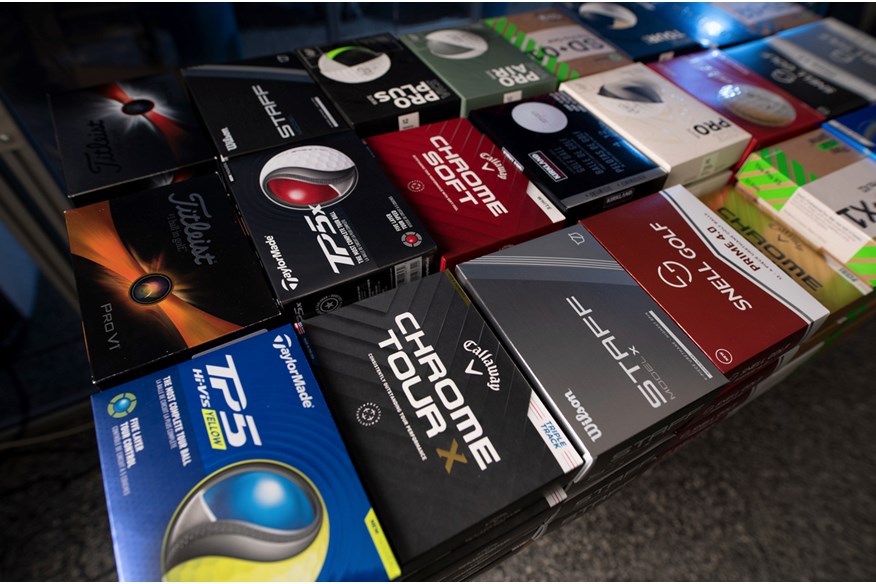
Unlike last year, when we took the bold decision to leave out the leading Direct-To-Consumer golf balls, this year we wanted them included. The likes of Snell, Vice, and Seed all claim their balls deliver Titleist Pro V1 or Pro V1x-type performance at a fraction of the cost, so we wanted to put that to the test.
Apart from the Titleist Pro V1 and Pro V1x, all the golf balls from the major brands (Callaway, TaylorMade, Srixon, and Wilson) are new models for 2024. These are models that have not appeared in previous robot tests by us. Even though we’ve used the Titleist Pro V1 as a control ball to set the robot up to launch shots in the same way as last year, I would strongly suggest not comparing the results of this year’s test with those from 2023, or any other year.
To ensure you also get a good idea of how lower-budget balls compare to their most expensive cousins I’ve also included the Srixon Distance (one of the best-selling distance golf balls in the UK), the Vice Tour, and the interesting new Snell Prime 2.0 which is the only 2-piece ball I’m aware of that comes with a urethane cover.
We’ve also bought the Kirkland Signature V3 from Costco, which at $1.67 is the least expensive ball featured within this test. So everything is geared towards equipping you with the best, most relevant information to help you establish which golf ball best suits your game and pocket.
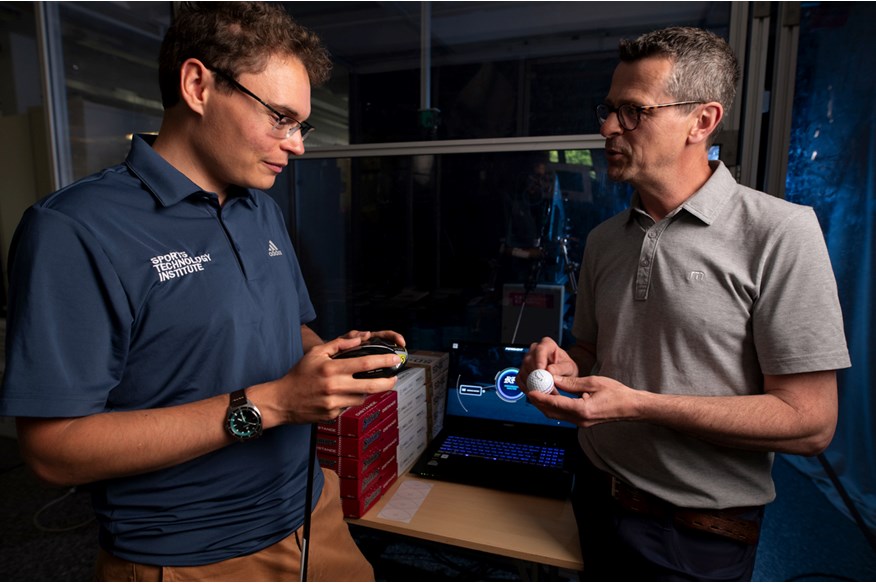
Why we tested indoors,
It wasn’t too long ago the golf industry thought outdoor testing and fitting was the only way to go, as it gave the opportunity to see a shot’s entire flight. Since Foresight and their camera-based launch monitors have arrived on the scene, though, thinking has changed dramatically. Foresight’s GC Quad is now recognized by players, instructors, and brands as a leading launch monitor, and regularly features in most brands’ R&D test labs. And because it measures everything you need to know about a golf shot within 18 inches of the ball leaving the clubface, the Quad makes it possible to accurately test indoors.
The added benefit of testing indoors is it’s possible to create a controlled lab environment, so weather conditions – whether they be cooler or warmer temperatures, wind, or rain – play no part in the data created, which isn’t the case when testing outdoors and tracking the whole of a golf ball flight.
For 2024, I also contacted the leading golf ball brands and the R&A and tried to get hold of the drag coefficient for each golf ball. With this information Loughborough University could calculate individual ball flights, rather than using the same aerodynamic model Foresight apply to every shot hit. Essentially a small detail that would have created a more personalized test between the elite brands that provide this information.
All of the data from our previous robot golf ball tests has come from a Foresight GC Quad launch monitor, and it made perfect sense to use the same system again.
Why each ball was only hit once
We wanted to create the cleanest most accurate data possible, so we only hit each golf ball once. Our reasoning behind this is that if there’s ever a ‘rogue’ ball among our test samples it only affects one of the five situations we test from, not all of them. It also means if any ball is damaged during the hitting process, it doesn’t get reused, so it can’t skew our data on subsequent shots.
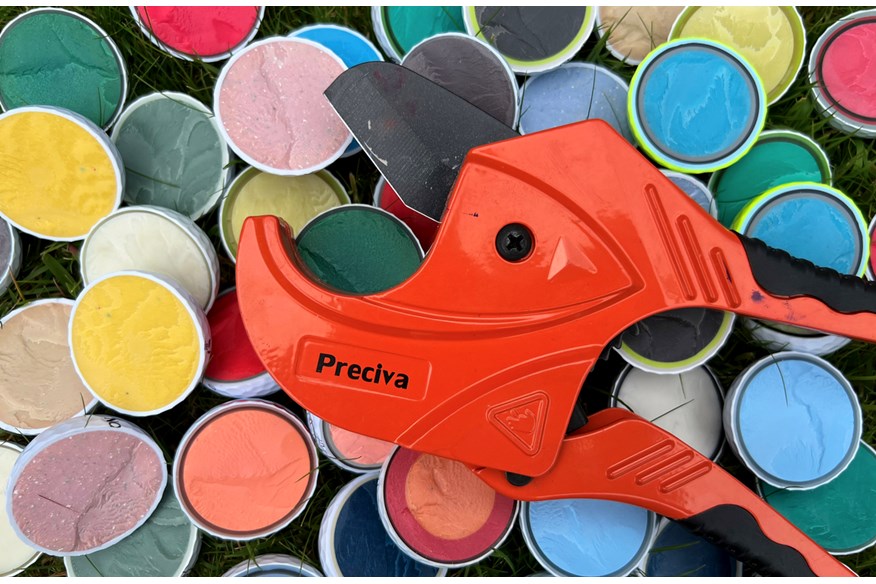
I asked brands to supply us with five dozen boxes of each ball selected for testing, which allowed 12 shots to be hit from each of the three driver swing speeds, as well as a dozen of each ball with the 7-iron and pitching wedge. In total, that’s 1,440 robot shots during the week!
Each of the five individual test orders were randomized and split into sets of three balls at a time. This way we ensured there wasn’t a 4 – 5 hour gap between testing the first dozen and the final dozen, just in case there were any temperature swings inside the laboratory.
How much data did we create?
By tracking head and ball data through the launch monitor we created thousands of data points (looking just at basic ball and club data there are 19 different metrics for every shot hit) which gave us a mountain of data to analyze. It took the best part of a week to sift through it. I worked out the averages for the longest, fastest, and spinniest balls, and determined our recommendations within each product category.
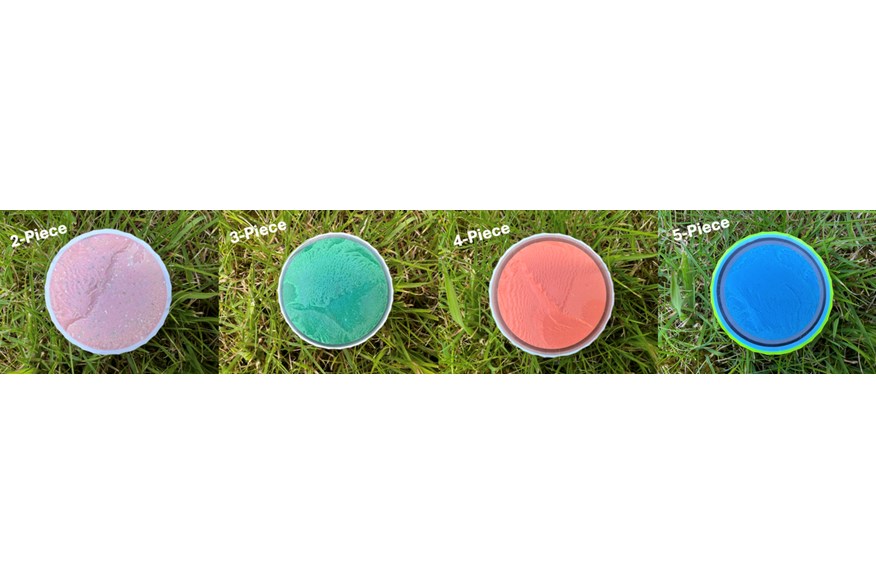
Will a two, three, four, or five-piece golf ball best suit your game?
What you need to know about two-piece golf balls
Two-piece golf balls are always the least expensive. Typically they have a huge core under a thick ionomer or surlyn cover. For 2024 the Snell Prime 2.0 is the first 2-piece ball I’ve ever seen to be clad in premium urethane. For many club golfers two-piece models represent an excellent blend of reasonable performance and value, particularly if they’re prone to losing a few.
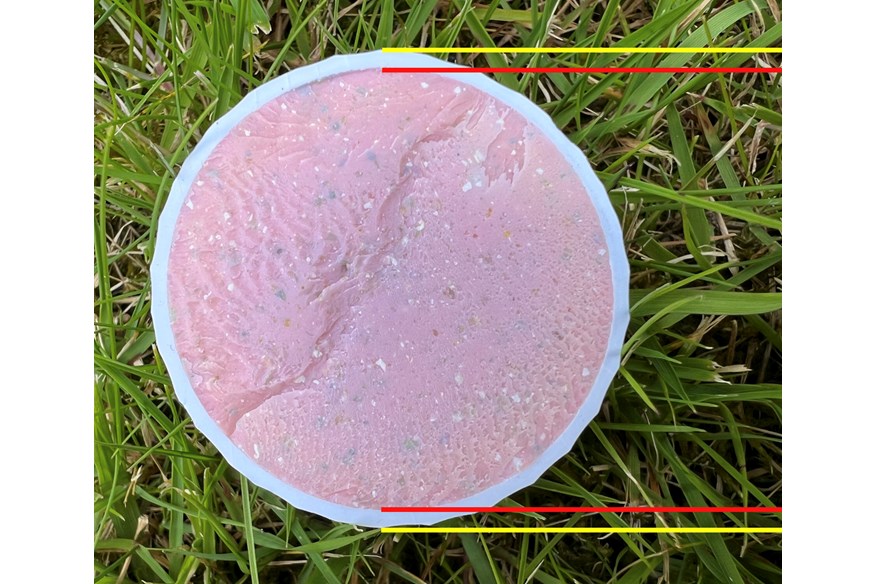
Even though these are the least expensive balls on the market, it’s not uncommon to find a choice between a softer feel, longer distance, or a blend of both in a single ball. I’ll highlight the difference between this category and others so you can weigh up if it’s really worth paying more for tour-level performance or urethane-cover club golfer balls.
Here are the two-piece golf balls in this test.
| Ball | Cover | Category |
| TaylorMade SpeedSoft | Ionomer | Under $25 ($24.99) |
| Srixon AD333 (2024) | Ionomer | Under $25 ($17.95) |
| Srixon Distance | Ionomer | Under $25 ($10.39) |
| Snell Prime 2.0 | Urethane | Under $25 ($24.99) |
What you need to know about three-piece golf balls
42% of the balls in this test are three-piece models, which means this is a very popular construction method for both tour and club golfer balls. The core size is shrunk to allow a mantle layer to sit between the core and outer cover, which allows engineers to dial in different characteristics based on the wants and needs of the target player.

Tour-level three-piece balls have urethane covers to maximize wedge spin and greenside control. In comparison, club golfer models will have a softer compression for additional feel. Gone are the days when three-piece tour balls were just softer, higher spinning versions of firmer four-piece ‘X’ style balls, as models like the Pro V1 are now lower flying and lower spinning than their 4-piece siblings.
For the purpose of this test, I’ve included the direct-to-consumer golf balls in the categories they attack. This means the Seed SD-01 The Pro 1 appears in the same ‘Premium tour level’ category as the Titleist Pro V1, even though you won’t find this model or a Snell/Vice in play on the PGA Tour. Models that come with a lower compression like the Vice Pro Air sit in the ‘Club golfer (urethane cover)’ category as it’s a direct competitor to the Callaway Chrome Soft and Srixon Q-star Tour.
Here are the three-piece golf balls in this test.
| Ball | Cover | Category |
| Titleist Pro V1 (2023) | Urethane | Premium tour level |
| Seed SD-01 The Pro 1 | Urethane | DTC Tour level |
| Seed SD-X1 The Pro X1 | Urethane | DTC Tour level |
| Vice Pro | Urethane | DTC Tour level |
| Snell Prime 3.0 | Urethane | Club golfer |
| Kirkland Signature V3 | Urethane | Club golfer |
| Callaway Chrome Soft (2024) | Urethane | Club golfer |
| Srixon Q-Star Tour (2024) | Urethane | Club golfer |
| Vice Pro Air | Urethane | Club golfer |
| Vice Tour | Surlyn | Budget |
What you need to know about four-piece golf balls
Traditionally, four-piece golf balls were firmer ‘X’ style, lower spin, lower flying models; but things have changed.
The most recent Pro V1x (four-piece) is said to have higher long-game spin and higher ball flight compared to the Pro V1 (three-piece). Both the Wilson Staff Model balls contain four pieces, yet the standard model can drive down spin and give a lower, more penetrating ball flight. My advice would be to be aware if you’re choosing between 4-piece and 3-piece golf balls – the decision might not be quite as clear cut as it once was.
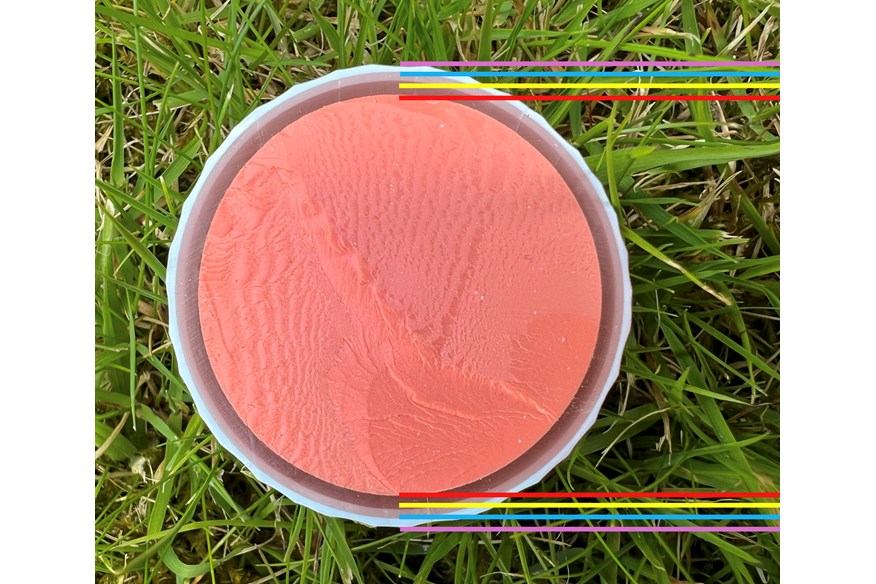
Bear in mind firmer balls are generally faster and longer, irrespective of swing speed. We’ve also seen they don’t always spin less with a wedge than their softer siblings. Use our test data to identify the fast and long models with the driver and iron, but can also spin with a wedge.
Here are the four-piece golf balls in the test.
| Ball | Cover | Category |
| Titleist Pro V1x | Urethane | Premium tour level |
| Callaway Chrome Tour | Urethane | Premium tour level |
| Callaway Chrome Tour X | Urethane | Premium tour level |
| Wilson Staff Model (2024) | Urethane | Premium tour level |
| Wilson Staff Model X (2024) | Urethane | Premium tour level |
| Seed SD-02 The Pro Tour | Urethane | DTC Tour level |
| Vice Pro Plus | Urethane | DTC Tour level |
| Snell Prime 4.0 | Urethane | DTC Tour level |
What you need to know about five-piece golf balls
TaylorMade are the only major brand making five-piece balls. The TP5 and TP5x are played by Rory McIlroy, Nelly Korda, Collin Morikawa, Dustin Johnson, Brooke Henderson, Tommy Fleetwood, and a whole host of other TaylorMade Tour players.
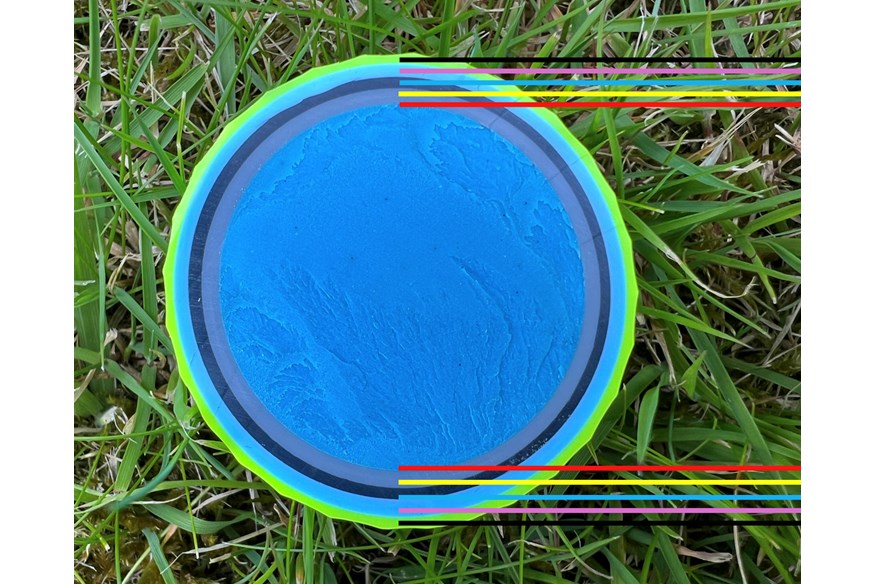
With three layers between the core and cover, the brand have more knobs and levers to tweak to dial down driver spin, up launch, or maximize wedge spin. The firmer feeling TP5x is faster, longer, and launches higher, whereas the TP5 offers a little extra wedge spin, more feel, and some extra shot-shaping potential.
Here are the five-piece golf balls in this test.
| Ball | Cover | Category |
| TaylorMade TP5 (2024) | Urethane | Premium tour level |
| TaylorMade TP5x (2024) | Urethane | Premium tour level |
Why do urethane balls spin more in the short game?
Urethane is a softer material than the ionomer or surlyn cover used on lower-priced golf balls, it’s also more pliable, so it can stretch and move, especially when it’s used to cover a stiffer mantle layer underneath. At impact, that movement means urethane likes to bite into the grooves of a wedge, which imparts more spin.
Research has shown urethane can offer up to 50% more backspin from 45 yards out than a non-urethane ball. More spin means golfers can be more aggressive with their short-game strategy.
Are firmer golf balls faster?
Yes, higher-compression golf balls are widely proven to be faster golf balls, but softer golf balls aren’t always shorter in the hands of the golfers they are designed for. Some very famous lower-compression golf balls like the Callaway Chrome Soft are well known for being low-spinning, which maximizes carry distance and aids accuracy.
If you want the fastest golf ball you can buy it will need to be a firm golf ball, but just because it is fast doesn’t mean it will be the longest, especially if you swing at average or slower speeds.
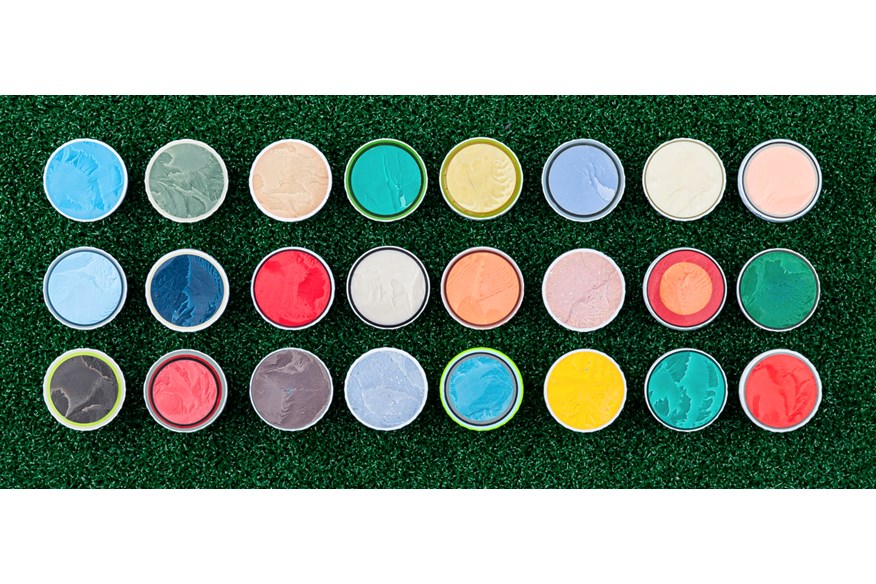
The results
JUMP TO:
Callaway
Price per ball $4.58 / 0.23c per yard
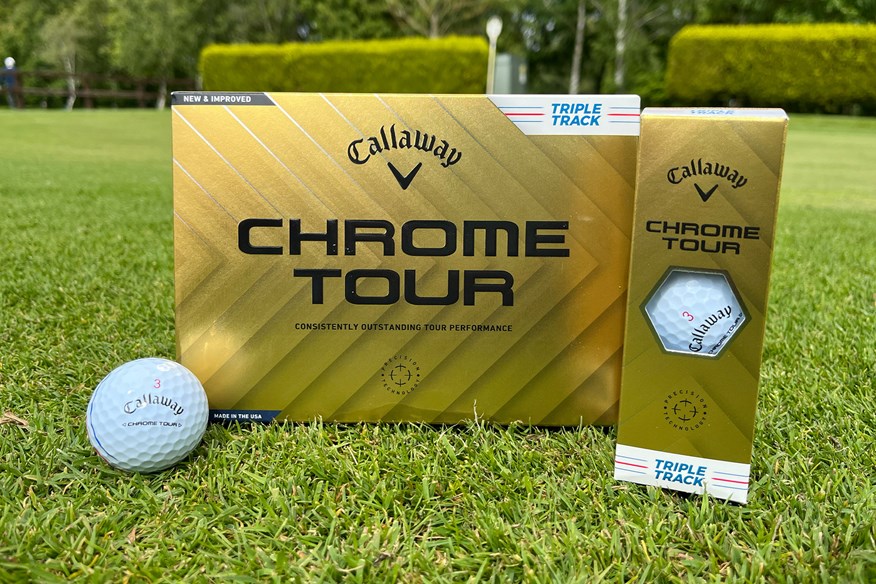

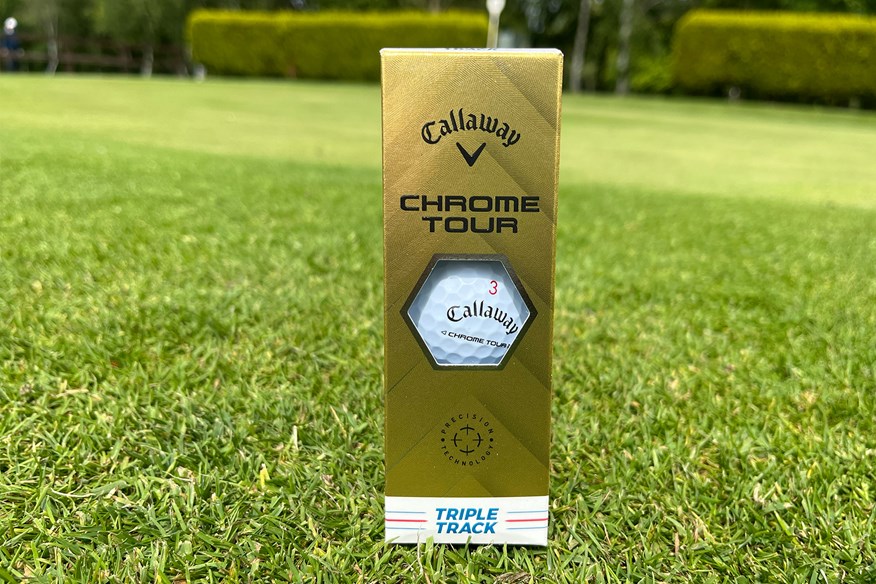
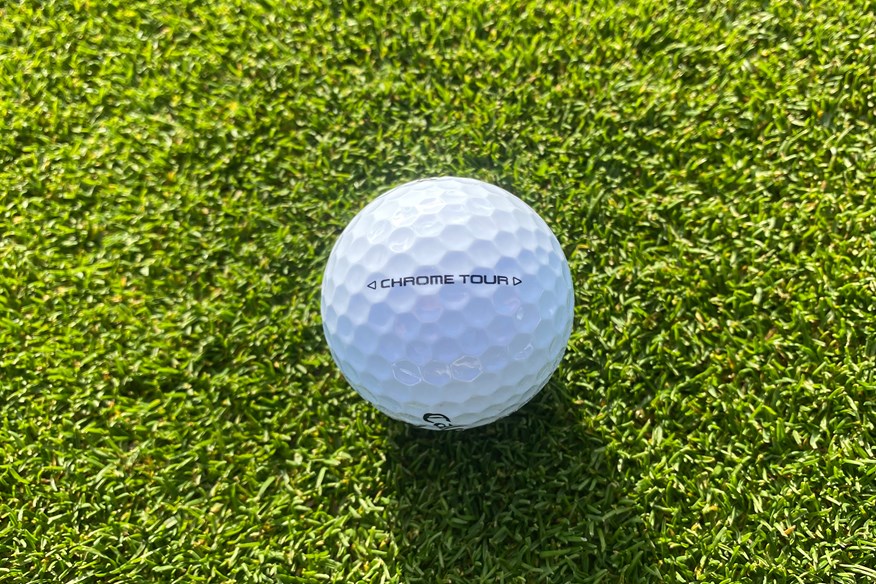
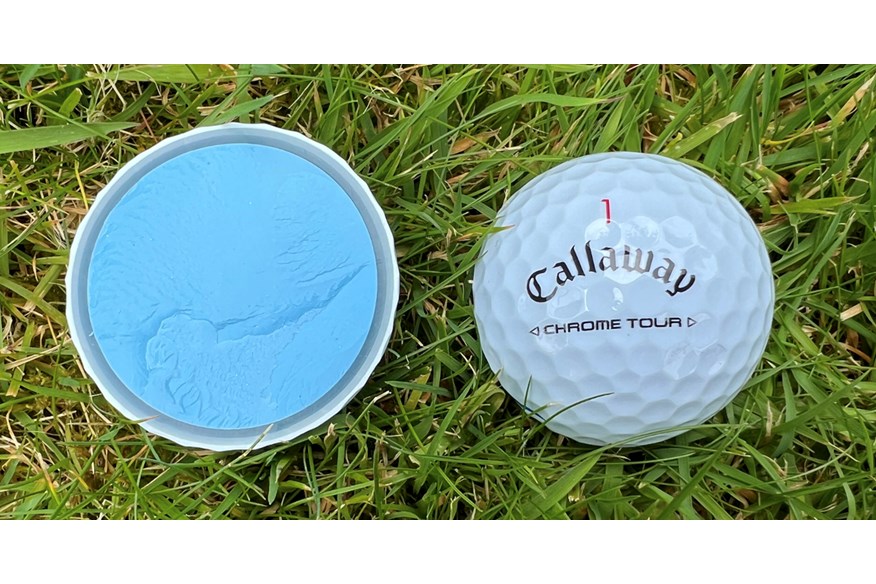
Unlike previous Callaway tour-level balls, this model is designed to be a direct alternative to the Titleist Pro V1. But Callaway says the model outperforms the market leader on ball speed and distance.
Nine new areas of circular-shaped dimples on the cover (Callaway historically has only ever used HEX geometries) give a higher ball flight than the firmer and lower-spinning Chrome Tour X.
Read our full Callaway Chrome Tour (2024) golf ball review.
Pros
- A direct rival to the Titleist Pro V1
- Faster and longer than the Titleist Pro V1 (at 100 and 115 mph with the driver)
Cons
- In 2024 Callaway is an expensive tour ball choice
| Construction | 4-Piece |
| Cover | Urethane |
| Cost per ball | $6.11 |
Test data and verdict: Callaway Chrome Tour
| Driver 85mph Swing | Callaway Chrome Tour |
| Ball speed (MPH) / Launch angle (º) | 123.9 / 13.2 |
| Backspin (RPM) | 2,633 |
| Carry (YDS) | 190.8 |
| Driver 100mph Swing | |
| Ball speed (MPH) / Launch angle (º) | 145.1 / 13.6 (T3) |
| Backspin (RPM) | 2,567 |
| Carry (YDS) | 244.8 (3) |
| Driver 115mph Swing | |
| Ball speed (MPH) / Launch angle (º) | 166.5 / 11.3 |
| Backspin (RPM) | 2,140 |
| Carry (YDS) | 281 |
| 7-Iron | |
| Ball speed (MPH) / Launch angle (º) | 107.7 / 20.8 |
| Backspin (RPM) | 5,384 |
| Height (YDS) | 31.5 |
| Descent angle (º) | 44.7 |
| Carry (YDS) | 154 |
| Wedge | |
| Backspin (RPM) | 7,481 |
| Shot area (SQ YDS) | 6.4 |
| Carry (YDS) | 106 |
| Average Shot Area | |
| Averaged over driver, 7-iron and PW | 24.4 SQ YDS |
VERDICT: Callaway Chrome Tour (2024)
The Chrome Tour is the golf ball Callaway hasn’t made before 2024, as essentially it is a slightly softer feeling ball (for them) that’s designed to go head-to-head against the Titleist Pro V1. Where before the Chrome Soft X was firmer and the Chrome Soft was softer.
Our data has the model down as a faster and longer option than the Pro V1 at 100 (0.3 mph/5 yds) and 115 mph (0.6 mph/2.9 yds) driver speeds which are the categories of players most likely to buy within the tour level ball category. With 210 rpm of iron and wedge spin difference between the pair, there’s not huge amounts to choose between the two when it comes to approaching the green.
Our accuracy data has the Pro V1 producing an average shot area 27.9% tighter than the Chrome Tour across five situations, yet in terms of ball speed, backspin and carry distance consistency this model ranked 7th (on average) out of 24 models, whereas the Pro V1 was 14th.
You cannot buy this ball without first considering the Chrome Tour X, its numbers are beastly good on a spreadsheet even if it is a slightly firmer option.
Price per ball $6.11 / 0.30c per yard
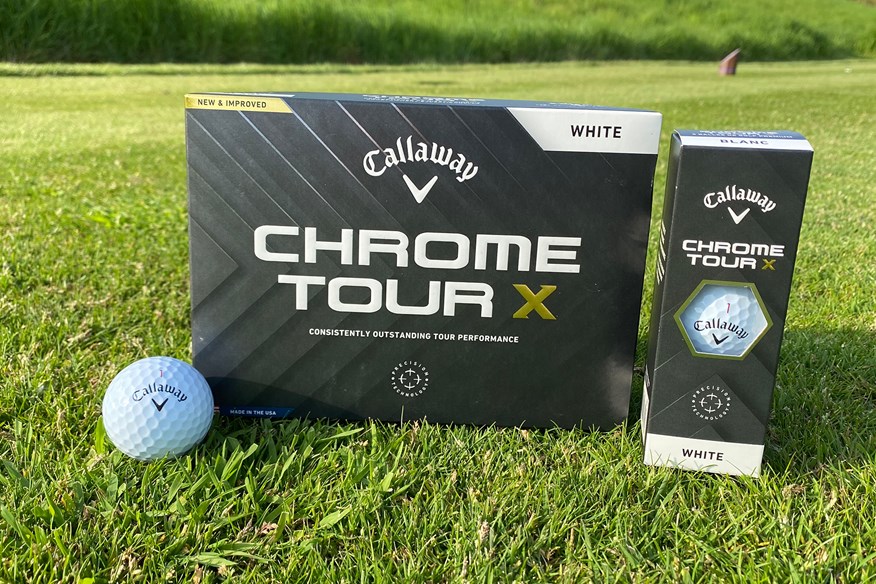

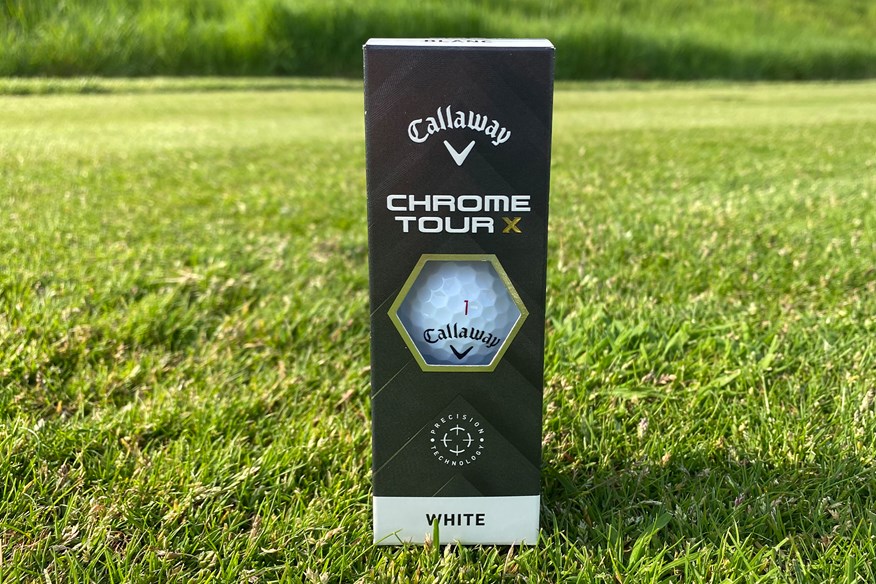
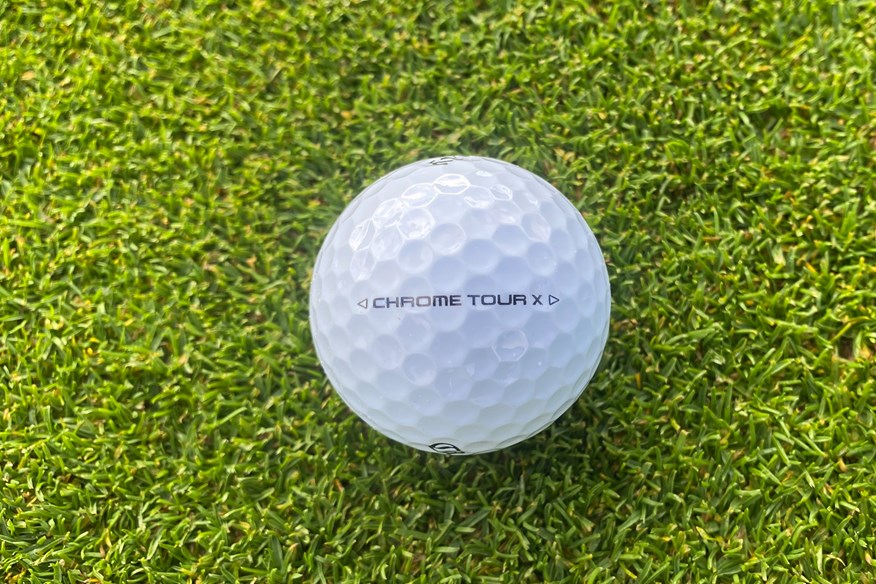
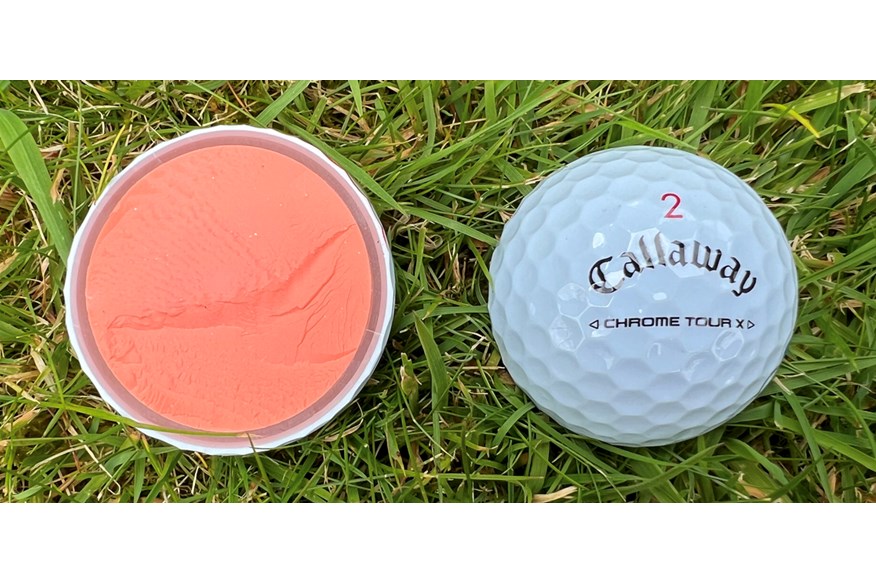
The Chrome Tour X has a compression of 98 and the company reports seeing ball speed gains of 1.5 – 3mph during internal testing with this model. Interestingly the speed gains don’t come from a firmer compression, as this model is the same compression as the previous Chrome Soft X.
Golfers should expect 300 RPM more backspin up to 50 yards from the surface of the green, the all-important scoring zone for the very good players.
Read our full Callaway Chrome Tour X (2024) golf ball review.
Pros
- Long off the driver
- High spin with the irons and wedges
- Produced our third smallest shot area average
Cons
- In 2024 Callaway is an expensive tour ball option
| Construction | 4-Piece |
| Cover | Urethane |
| Cost per ball | $6.11 |
Test data and verdict: Callaway Chrome Tour X
| Driver 85mph Swing | Callaway Chrome Tour X |
| Ball speed (MPH) / Launch angle (º) | 124.2 / 13 (T3) |
| Backspin (RPM) | 2,838 |
| Carry (YDS) | 192.1 (3) |
| Driver 100mph Swing | |
| Ball speed (MPH) / Launch angle (º) | 145.4 / 13 (2) |
| Backspin (RPM) | 2,832 |
| Carry (YDS) | 245.1 (2) |
| Driver 115mph Swing | |
| Ball speed (MPH) / Launch angle (º) | 166.6 / 11.6 |
| Backspin (RPM) | 2,155 |
| Carry (YDS) | 283.2 (1) |
| 7-Iron | |
| Ball speed (MPH) / Launch angle (º) | 107.6 / 20.1 |
| Backspin (RPM) | 6,193 (Highest) |
| Height (YDS) | 31 |
| Descent angle (º) | 44.9 |
| Carry (YDS) | 150.5 |
| Wedge | |
| Backspin (RPM) | 8,080 (1) |
| Shot area (SQ YDS) | 2 (1) |
| Carry (YDS) | 104.9 |
| Average Shot Area | |
| Averaged over driver, 7-iron and PW | 19.2 SQ YDS (3) |
VERDICT: Callaway Chrome Tour X (2024)
In many instances, a 1st, 2nd, and 3rd place ranking for carry distance across our three driver speeds would say everything you need to know about the Callaway Chrome Tour X. But this golf ball is so much more than just a firm, fast, and long driver model.
The X was either highest or tied highest for shot height across the three driver speeds (and somehow posted a lower-than-average ball flight with the 7-iron) while also producing more iron spin (which means it’s not the longest) and wedge stopping power than any other ball in this test. That’s some serious across-the-board performance but the model wasn’t quite finished there.
Callaway golf balls have taken some stick for manufacturing inconsistencies before yet by posting our third smallest shot area (averaged across five test situations) as well as a minuscule 2 sq yds shot area (the smallest on test) with a wedge our data is a ringing endorsement the company is now making some seriously impressive tour level golf balls.
If there is a slight fly in the ointment it has to be the new 2024 $54.99 a dozen price tag, which now makes Callaway the most expensive mass-market tour ball out there. If you want to buy in make sure you do when these beastly good balls are on offer.
Price per ball $4.17 / 0.21c per yard
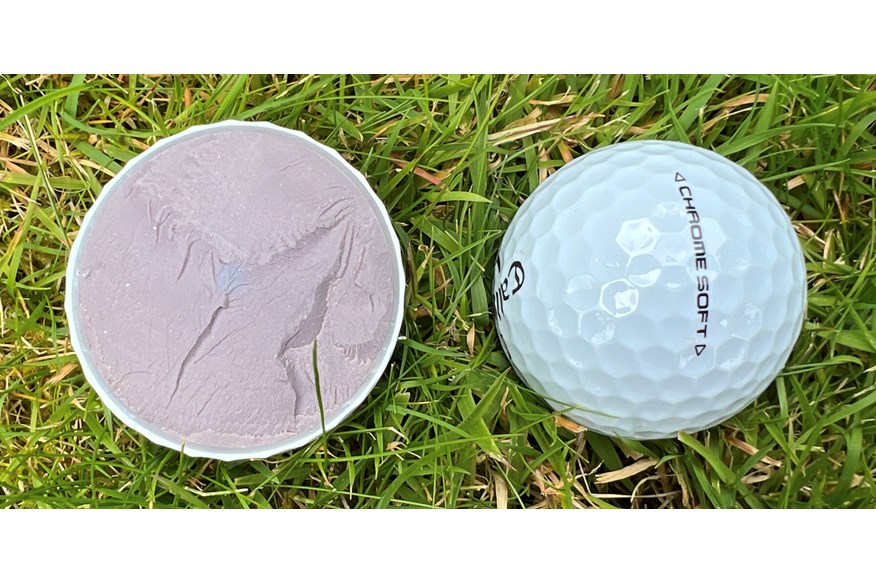

Yet thanks to the soft urethane cover golfers got guaranteed greenside spin and control to boost scoring potential in much the same way as when using a market-leading tour ball.
The new 2024 Chrome Soft is still a low spin ball just like the original, which helps with distance and accuracy. Yet thanks to a new aerodynamic package Callaway says golfers will get more lift to ensure shots hit a greater apex height which helps shots stop upon hitting the green, maximizing playability for mid and slower-speed players.
Interestingly over the last two generations, the Chrome Soft has morphed from a four-piece ball to three primarily as the soft core construction is easier to create consistently.
Pros
- Club golfers will like the softer feel
Cons
- Produced the largest shot area of the entire test
- A low-spin choice with irons and wedges
- Not the longest option
| Construction | 3-Piece |
| Cover | Urethane |
| Cost per ball | $5.55 |
Test data and verdict: Callaway Chrome Soft
| Driver 85mph Swing | Callaway Chrome Soft |
| Ball speed (MPH) / Launch angle (º) | 123.3 / 13.2 |
| Backspin (RPM) | 2,623 |
| Carry (YDS) | 189 |
| Driver 100mph Swing | |
| Ball speed (MPH) / Launch angle (º) | 143.7 / 13.3 |
| Backspin (RPM) | 2,514 |
| Carry (YDS) | 240.3 |
| Driver 115mph Swing | |
| Ball speed (MPH) / Launch angle (º) | 163.9 / 11.8 |
| Backspin (RPM) | 2,079 |
| Carry (YDS) | 276 |
| 7-Iron | |
| Ball speed (MPH) / Launch angle (º) | 107.2 / 21.2 |
| Backspin (RPM) | 5,173 |
| Height (YDS) | 31.4 |
| Descent angle (º) | 44.7 |
| Carry (YDS) | 154.1 |
| Wedge | |
| Backspin (RPM) | 7,040 |
| Shot area (SQ YDS) | 3.5 |
| Carry (YDS) | 106.1 |
| Average Shot Area | |
| Averaged over driver, 7-iron and PW | 51.4 SQ YDS (Highest) |
VERDICT: Callaway Chrome Soft (2024)
Back in 2014 the original Chrome Soft undoubtedly was ‘the ball that changed the ball’, as it came at designing golf balls from a strokes gained perspective rather than focusing on pure launch monitor numbers. The model gave golfers the softer feel they craved, which meant it was a huge success and the Chrome Soft sparked a whole new low-compression trend that has become popular among club golfers and still booms today.
But if you haven’t noticed the Chrome Soft franchise never quite hit the spot with decent golfers, hence why this year the balls aimed at tour players by Callaway have traded the ‘Soft’ marquee for ‘Tour’. As the Chrome Soft is aimed at more average club golfers, they’re inevitably compared to models like the TaylorMade Tour Response and Wilson Triad, yet at $49.98 a dozen Callaway would argue the Chrome Soft is a much higher spec golf ball. The issue is our data doesn’t quite support the model being a better choice.
Thanks to its lower compression the Chrome Soft has always been a low-spin golf ball. The thinking was its low spin traits helped maximize distance and improve accuracy, but also meant golfers got less spin on approaches with irons and wedges, which for many lower speed players isn’t the ideal setup.
Our data has the Chrome Soft down as the 17th and 16th longest ball at 85 mph and 100mph with the driver, it was also 11th longest with the 7-iron. Throw in below-average iron and wedge spin and we start building a picture of how there are better club golfer balls out there for less dosh.
Perhaps unfairly the Chrome Soft posted the largest average total shot area for our entire test (51.41 sq yds), as at 115mph with the driver (a speed it’s not really designed for) we saw 9.5 yds of carry distance drop off (the average was 4.76) and 18.4yds of left to right dispersion (the average was 12.7 yds) which is sizeable when using a repeatable and consistent robot tester.
Kirkland
For several years the Kirkland has been a regular golfer favorite as the lower cost means you don’t have to be too bothered about losing one here and there, yet thanks to the 3-piece construction and urethane cover this model historically has been incredibly high spin.
Our data below shows how the model compares against the latest balls of 2024, highlighting whether or not their low price actually represents a good value-for-money investment for you.
Pros
- A very high spin option
- The cheapest ball option in this entire test and it has a urethane cover
- Shorter but more spinny than a Titleist Pro V1
Cons
- Don't expect optimal carry distance
| Construction | 3-Piece |
| Cover | Urethane |
| Cost per ball | $1.67 |
Test data and verdict: Kirkland Signature V3
| Driver 85mph Swing | Kirkland Signature V3 |
| Ball speed (MPH) / Launch angle (º) | 122.3 / 12.9 |
| Backspin (RPM) | 2,822 |
| Carry (YDS) | 186.9 |
| Driver 100mph Swing | |
| Ball speed (MPH) / Launch angle (º) | 142.7 / 13.2 |
| Backspin (RPM) | 2,806 |
| Carry (YDS) | 238.9 |
| Driver 115mph Swing | |
| Ball speed (MPH) / Launch angle (º) | 164.8 / 10.5 |
| Backspin (RPM) | 2,296 (Highest) |
| Carry (YDS) | 276.6 |
| 7-Iron | |
| Ball speed (MPH) / Launch angle (º) | 106 / 19.7 |
| Backspin (RPM) | 6,109 |
| Height (YDS) | 30.4 |
| Descent angle (º) | 43.9 |
| Carry (YDS) | 147.8 |
| Wedge | |
| Backspin (RPM) | 8,043 |
| Shot area (SQ YDS) | 4.1 |
| Carry (YDS) | 103.4 |
| Average Shot Area | |
| Averaged over driver, 7-iron and PW | 22.7 SQ YDS |
VERDICT: Kirkland Signature V3
Kirkland has really upset the urethane golf ball apple cart since entering the market in 2016, although simple their single-ball approach has also caused some serious confusion. With many YouTubers and influencers referring to the Kirkland as a Pro V1 killer, many golfers believe this model is a direct alternative to the Pro V1, but our data shows that isn’t really the case.
I completely understand why golfers have flocked to this model, firstly at $1.67 a ball or 0.08c a yard it’s the cheapest ball in this entire test, which isn’t half bad considering it comes with a urethane cover. Golfers love being able to spin and stop approaches with wedges and irons and pretty much more so than with any other ball they can do just that with the Kirkland.
But as a ball that ranked 2nd best for iron and 3rd best for wedge spin you have to accept this ball is not set up for optimal distance. This a point that’s reinforced when you realize the model was our highest spin driver ball too (averaged over 100 mph and 115mph speeds).
Compared to the Pro V1 our data shows the V3 giving up an average of 2.2 yds across three drivers speeds to the market leader, which extends to 4.3 yds with the 7-iron which for many will mean needing an extra half a club for approaches into the green.
That said, thanks to generating so much stopping power the Kirkland out-spins the Pro V1 by 515rpm with an iron and 352 rpm with a wedge, so you’ll never have to worry about nestling shots down on the greens surface with a longer iron.
I’m absolutely not saying you should not buy this ball as it’s too high spin. I understand that many golfers love its high spin traits. I am saying though is go into it with your eyes open and understand where the ball’s strengths and weaknesses lie as very few golfers like leaving distance on the table.
If you do and so long as your game benefits from the model’s high spin traits and you enjoy saving a bunch of cash our accuracy and consistency data suggest with a mid-table performance the V3 is not going to let you down.
Seed
To ensure you know exactly which ball the SD-01 targets Seed spell out on their website how the model's 3-piece construction is like a Titleist Pro V1. Compared to previous versions this generation has a softer urethane cover.
So long as you buy at the least expensive price it’s possible to save $25 a dozen over the Pro V1, our results highlight whether that’s a sound investment or not.
Pros
- The most accurate golf ball in this test
- A consistent golf ball choice
- Good value for money so long as you buy on subscription or in multiples
Cons
- Gives up a little bit of iron and wedge spin versus a Titleist Pro V1
| Construction | 3-Piece |
| Cover | Urethane |
| Cost per ball | $2.92 |
Test data and verdict: Seed SD-01
| Driver 85mph Swing | Seed SD-01 |
| Ball speed (MPH) / Launch angle (º) | 123.9 / 13.5 |
| Backspin (RPM) | 2,583 |
| Carry (YDS) | 191.7 |
| Driver 100mph Swing | |
| Ball speed (MPH) / Launch angle (º) | 143.8 / 13.6 |
| Backspin (RPM) | 2,597 |
| Carry (YDS) | 241.9 |
| Driver 115mph Swing | |
| Ball speed (MPH) / Launch angle (º) | 165.4 / 11.5 |
| Backspin (RPM) | 2,125 |
| Carry (YDS) | 279.5 |
| 7-Iron | |
| Ball speed (MPH) / Launch angle (º) | 108.5 / 21 (2) |
| Backspin (RPM) | 5,314 |
| Height (YDS) | 31.9 |
| Descent angle (º) | 45.1 |
| Carry (YDS) | 155.8 |
| Wedge | |
| Backspin (RPM) | 7,275 |
| Shot area (SQ YDS) | 4.2 |
| Carry (YDS) | 106.3 |
| Average Shot Area | |
| Averaged over driver, 7-iron and PW | 15.5 SQ YDS (1) |
VERDICT: Seed SD-01 The Pro 1
The goal of the SD-01 was always to compete against the Titleist Pro V1 on performance and beat it on price, and our data shows it does a great job of delivering on each of those key objectives.
Across the board, the SD01 was longer than the Pro V1 in all five test situations, albeit with miniscule margins, which in anyone’s book has to be a great start against the market leader. With the 7-iron the Seed was faster (1 mph) and 3.8 yds longer (the biggest difference from any situation) while giving up just 5% backspin (280 rpm), which in no way should be a deal breaker.
For wedge play the SD01 spun 5.4% (416 rpm) less than the Pro V1 but we’re talking levels that will have a negligible impact on the golf course, and the SD01 story doesn’t quite end there.
Thanks to tracking shot area for accuracy numbers and drop-offs for consistency we can see the SD01 is a really consistent golf ball choice. Averaged across all five test situations the SD produced our smallest shot area, 15.5 sq yds, which is 12.7 sq yds tighter than the test average and 2.1 sq yds smaller than the 2nd placed Titleist Pro V1.
Some may argue we just happened to test five dozen Seed SD01 balls that were well-made, hence the small dispersion figures. But our consistency data backs up the shot-to-shot consistency and reliability on the golf course. Incredibly this model produced the smallest amount of carry distance drop off of any of the balls tested, it also ranked 11th for ball speed variation and 7th for backspin difference giving an average consistency ranking of 5th from a field of 24.
All in that’s a really impressive overall performance, just make sure you buy on Seed’s keenest terms to get the best possible price if you buy in.
This model focuses on producing a more penetrating less rainbow-shaped ball flight, expect it to offer a soft feel and high short-game spin, but if your game involves putting a premium on maximum short-game spin you may want to consider the company's SD-02 instead.
Pros
- Good for those who are less worried about distance
- Good iron and wedge spin
Cons
- Expect less distance than the Seed SD-01
| Construction | 3-Piece |
| Cover | Urethane |
| Cost per ball | $2.92 |
Test data and verdict: Seed SD-X1
| Driver 85mph Swing | Seed SD-X1 |
| Ball speed (MPH) / Launch angle (º) | 123.3 / 12.9 |
| Backspin (RPM) | 2,707 |
| Carry (YDS) | 188.9 |
| Driver 100mph Swing | |
| Ball speed (MPH) / Launch angle (º) | 144.1 / 13.1 |
| Backspin (RPM) | 2,675 |
| Carry (YDS) | 241.7 |
| Driver 115mph Swing | |
| Ball speed (MPH) / Launch angle (º) | 164.7 / 11.3 |
| Backspin (RPM) | 2,124 |
| Carry (YDS) | 277 |
| 7-Iron | |
| Ball speed (MPH) / Launch angle (º) | 107.1 / 20.4 |
| Backspin (RPM) | 5,771 |
| Height (YDS) | 31.1 |
| Descent angle (º) | 44.7 |
| Carry (YDS) | 151.3 |
| Wedge | |
| Backspin (RPM) | 7,692 |
| Shot area (SQ YDS) | 4.6 |
| Carry (YDS) | 105.2 |
| Average Shot Area | |
| Averaged over driver, 7-iron and PW | 19.3 SQ YDS |
VERDICT: Seed SD-X1 The Pro X1
Don’t be put off by Seed’s array of different urethane cover golf balls that on the surface can appear a little confusing as there’s a degree of overlap between the models. Our data spells out really clearly that the SD-X1 is the right ball for you if you’re a slightly higher-speed player (so you’re less concerned about distance) who wants to focus on wedge and iron spin much more so than raw distance.
At all three driver speeds Seed’s SD-01 is a longer ball choice, and with the 7-iron the SD-X1 gives up 4.5 yds of carry distance, which to many will be half a club on approaches into the green. But for that distance trade-off, you get 457 rpm more iron spin and 417 rpm more wedge-stopping power, which some golfers will really appreciate.
Compared to the Pro V1 our data has the SD-X1 down as offering up more wedge and iron spin, which should be serious food for thought.
In my eyes the SD-02 should appeal to speed demons and distance freaks, those who are swinging out of their boots for maximum power, if that’s you, less spin from the driver will help maximize carry distance.
So long as you’re prepared to order multiple dozens at a time or sign up for a one, two, or three-month subscription you could save yourself $25 a dozen versus the Titleist Pro V1x.
Pros
- Longer than the Titleist Pro V1x with a driver and iron
- Great value for money
Cons
- Significantly lower spinning than the Titleist Pro V1x with an iron and wedge
| Construction | 4-Piece |
| Cover | Urethane |
| Cost per ball | $2.92 |
Test data and verdict: Seed SD-02
| Driver 85mph Swing | Seed SD-02 |
| Ball speed (MPH) / Launch angle (º) | 124.2 / 13.3 (T3) |
| Backspin (RPM) | 2,615 |
| Carry (YDS) | 191.8 |
| Driver 100mph Swing | |
| Ball speed (MPH) / Launch angle (º) | 144.3 / 13.6 |
| Backspin (RPM) | 2,536 |
| Carry (YDS) | 242.7 |
| Driver 115mph Swing | |
| Ball speed (MPH) / Launch angle (º) | 165.8 / 11.4 |
| Backspin (RPM) | 2,137 |
| Carry (YDS) | 280.4 |
| 7-Iron | |
| Ball speed (MPH) / Launch angle (º) | 108.2 / 21.1 (T3) |
| Backspin (RPM) | 5,188 |
| Height (YDS) | 31.9 |
| Descent angle (º) | 45 |
| Carry (YDS) | 155.8 |
| Wedge | |
| Backspin (RPM) | 7,175 |
| Shot area (SQ YDS) | 8.2 |
| Carry (YDS) | 106.1 |
| Average Shot Area | |
| Averaged over driver, 7-iron and PW | 39.8 SQ YDS |
VERDICT: Seed SD-02 The Pro Tour
Titleist get annoyed when YouTubers and influencers title up golf ball review videos as ‘Seed: Titleist Pro V1/Pro V1x killer?’ when hitting balls like the SD-02, and based on our results I completely understand why. Of course, brands like Seed, Vice, and Snell have come about thanks to producing balls that can compete with the very best at a lower price, but many like the SD-02 ask golfers to make a compromise somewhere along the line, which really irks the top brass at Titleist towers, especially when the difference isn’t explained.
Looking at our driver data we can legitimately say the 4-piece SD-02 is longer than the Pro V1x it is designed to compete with, it’s also 4.8 yards longer with the 7-iron, metrics that golfers notice and favor on the golf course. Yet dig down into spin numbers with wedges and irons, which are much more difficult to access unless you own a launch monitor, and there are some significant differences between the two balls.
If your game is about control and precise shot-making you will notice a difference in performance between the Pro V1x and SD-02, as our numbers show a 647 rpm spin difference with a 7-iron and 871 rpm variation when hit with a wedge. Both are decent amounts, which YouTubers and influencers rarely highlight, but these numbers represent the difference between premium tour-level balls and models bought from a DTC brand.
If you find yourself looking for a Pro V1x alternative I’d suggest the Vice Pro Plus is a better option, as it squeezes out a fraction more spin.
Snell
Snell says the Prime 4.0 is for mid to fast-swing-speed players, its 4-piece construction delivers low long-game spin, higher iron spin, and a mid-trajectory.
With an 85 – 90 compression, golfers should expect a slightly firmer feel, along with excellent short-game control thanks to the premium XV3 urethane cover.
Pros
- Good driver distance compared to the Titleist Pro V1 and V1x
Cons
- Low iron and wedge spin
| Construction | 4-Piece |
| Cover | Urethane |
| Cost per ball | $2.91 |
Test data and verdict: Snell Prime 4.0
| Driver 85mph Swing | Snell Prime 4.0 |
| Ball speed (MPH) / Launch angle (º) | 122.9 / 13.3 |
| Backspin (RPM) | 2,476 |
| Carry (YDS) | 187.4 |
| Driver 100mph Swing | |
| Ball speed (MPH) / Launch angle (º) | 144 / 13.7 |
| Backspin (RPM) | 2,473 |
| Carry (YDS) | 241.8 |
| Driver 115mph Swing | |
| Ball speed (MPH) / Launch angle (º) | 165.3 / 11.3 |
| Backspin (RPM) | 2,111 |
| Carry (YDS) | 277.8 |
| 7-Iron | |
| Ball speed (MPH) / Launch angle (º) | 107.2 / 21.1 |
| Backspin (RPM) | 4,973 |
| Height (YDS) | 31.6 |
| Descent angle (º) | 44.3 |
| Carry (YDS) | 154.8 |
| Wedge | |
| Backspin (RPM) | 6,685 |
| Shot area (SQ YDS) | 7.9 |
| Carry (YDS) | 105.9 |
| Average Shot Area | |
| Averaged over driver, 7-iron and PW | 26.2 SQ YDS |
VERDICT: Snell Prime 4.0
Like so many balls in this test, the Snell Prime 4.0 posted really strong numbers with the driver against the Titleist Pro V1 and Pro V1x it’s designed to compete with. However, when it gets to the 7-iron and wedge it’s a completely different story.
The Prime 4.0 is one of only four balls in the entire test to dip below the 5K rpm spin threshold with an iron. It’s the only 4-piece ball to do so which means you can expect good carry distance, but when the Pro V1 and Pro V1x are posting 5594 rpm and 5835 rpm of spin respectively you simply can’t expect the same results when this model hits the green.
Likewise, the 4.0 was one of only four balls to dip below the 7K rpm spin barrier with a wedge. It was the only 4-piece ball to do so and the model gave up 1006 rpm and 1361 rpm against the Pro V1 and Pro V1x respectively.
My conclusion has to be if your game would benefit from a firmer X-style ball that doesn’t come with a premium price tag the Vice Pro Plus is as good as it gets in 2025.
The Prime 2.0, 3.0, and 4.0 names refer to how many layers each ball has, with costs increasing as you move up the scale.
The Prime 3.0 has a compression of 80 – 85 which makes it attractive to the wide audience of golfers who aren’t fans of firmer X-styled golf balls. A new core delivers high ball speeds with lower spin for good distance along with a mid-flight trajectory.
The mantle layer between the core and cover has been specifically designed to generate mid to high levels of iron spin to allow golfers to hit every shot in the bag, while a urethane cover ensures you get great short-game control and precision.
Pros
- The urethane cover is beneficial in the short-game
- Reasonable value for money
Cons
- Not an outstanding performer in any area of the bag
- Expect significantly less iron and wedge spin than a Titleist Pro V1
| Construction | 3-Piece |
| Cover | Urethane |
| Cost per ball | $2.74 |
Test data and verdict: Snell Prime 3.0
| Driver 85mph Swing | Snell Prime 3.0 |
| Ball speed (MPH) / Launch angle (º) | 123.2 / 13.2 |
| Backspin (RPM) | 2,644 |
| Carry (YDS) | 189.2 |
| Driver 100mph Swing | |
| Ball speed (MPH) / Launch angle (º) | 143.4 / 13.8 |
| Backspin (RPM) | 2,462 |
| Carry (YDS) | 240.4 |
| Driver 115mph Swing | |
| Ball speed (MPH) / Launch angle (º) | 165.4 / 11.5 |
| Backspin (RPM) | 2,024 |
| Carry (YDS) | 277.5 |
| 7-Iron | |
| Ball speed (MPH) / Launch angle (º) | 106.9 / 21 |
| Backspin (RPM) | 5,145 |
| Height (YDS) | 31.3 |
| Descent angle (º) | 44.4 |
| Carry (YDS) | 153.5 |
| Wedge | |
| Backspin (RPM) | 6,947 |
| Shot area (SQ YDS) | 11.7 |
| Carry (YDS) | 105.1 |
| Average Shot Area | |
| Averaged over driver, 7-iron and PW | 48.7 SQ YDS |
VERDICT: Snell Prime 3.0
The urethane cover club golfer golf ball category is crowded with various different options right now, but where others typically target distance through low spin or chase high levels of stopping power that cost distance the 3.0 like the Vice Tour tries to hit a middle ground between two opposite ends of the scale.
Compared to the surlyn covered Vice Tour the Prime 3.0 adds an extra 178 rpm of backspin with the 7-iron nudging it just above the 5K threshold, which might be useful if you’re particularly concerned about cutting too close to the wire in terms of stopping power. Interestingly with a wedge the 3.0 gives up 979 rpm of backspin to the Vice Tour but only 744 rpm to the Titleist Pro V1 which might just make this model a viable middle-of-the-road option.
It’s really important to not write off the 3.0’s urethane cover which will come into play and be better at generating control from the greenside than the Vice Tour.
2-piece golf balls usually come with less expensive ionomer or surlyn covers that are widely accepted to trade-off a little short game spin and control for an affordable price, so that just isn’t the case with the 2.0. By incorporating a urethane cover on a golf ball selling for $24.99 Snell is creating a unique golf ball (with a compression of 80 – 85) that tons of club golfers are likely to enjoy as the price is keen and the performance for many will likely be hard to distinguish from a much more expensive ball.
Our test results below showcase whether the model delivers on its promise of potential. See the prime 2.0 as a potential alternative to the Srixon AD333 (2-piece), TaylorMade Tour Response (3-piece), and Callaway ERC Soft (3-piece) and you’ll be thinking exactly along the right lines.
Pros
- Putting a urethane cover on a 2-piece ball is genius thinking
- Similar iron and wedge spin to the Titleist Pro V1
- Fantastic value for money
Cons
- Not the very longest
| Construction | 2-Piece |
| Cover | Urethane |
| Cost per ball | $2.08 |
Test data and verdict: Snell Prime 2.0
| Driver 85mph Swing | Snell Prime 2.0 |
| Ball speed (MPH) / Launch angle (º) | 122.3 / 13.2 |
| Backspin (RPM) | 2,671 |
| Carry (YDS) | 186.9 |
| Driver 100mph Swing | |
| Ball speed (MPH) / Launch angle (º) | 141.9 / 13.5 |
| Backspin (RPM) | 2,638 |
| Carry (YDS) | 237.5 |
| Driver 115mph Swing | |
| Ball speed (MPH) / Launch angle (º) | 163.5 / 11.3 |
| Backspin (RPM) | 2,226 |
| Carry (YDS) | 275.7 |
| 7-Iron | |
| Ball speed (MPH) / Launch angle (º) | 106.5 / 20.7 |
| Backspin (RPM) | 5,461 |
| Height (YDS) | 31 |
| Descent angle (º) | 44.4 |
| Carry (YDS) | 151.4 |
| Wedge | |
| Backspin (RPM) | 7,617 |
| Shot area (SQ YDS) | 12 |
| Carry (YDS) | 104.3 |
| Average Shot Area | |
| Averaged over driver, 7-iron and PW | 38.8 SQ YDS |
VERDICT: Snell Prime 2.0
There isn’t a ball in this test that I was more excited to see the results from than the Prime 2.0 as it’s virtually unheard of to put a urethane cover on a 2-piece ball and sell it for $24.99 a dozen. The idea is a master stroke from Dean Snell and the clever thinking combines a competitive price in an area of the market that masses of golfers shop within, along with the short game zip and control that golfers would typically expect from a much more premium ball.
Averaged over the 85 mph and 100 mph driver speeds the 2.0 at 212.2 yards was the joint longest carrying ball (tied with the Srixon Distance) in the 2-piece ball category. Ok with the 7-iron it dropped 2.7 yds against the longest (the TaylorMade Speedsoft in the 2-piece category) but crucially it produced more iron spin than any other 2-piece ball and was only bettered by 19 rpm for wedge spin by the Srixon Distance. Both should be really attractive traits to club golfers.
In my mind, the Prime 2.0 is well worth evaluating outside the 2-piece golf ball market too. Up against the lower compression urethane club golfer balls that are so popular today with a premium cover and keen price point this ball brings together so many of the traits everyday golfers look for in one great package.
Our data has the model giving up between 0.7 – 3.5 yds of driver carry distance (when averaged over the 85 mph and 100 mph speeds) and no more than 5.1 yds with the 7-iron versus models like the Srixon Q-Star Tour and Callaway Chrome Soft, but unlike those models, the 2.0 doesn’t drop iron and wedge spin.
In fact bar the high spin but short hitting Kirkland Signature V3 the 2.0 produced more iron spin than any urethane club golfer ball in this test. It pulled off a similar feat with the wedge, out-spinning four of the six balls in the club golfer category, all of which are significantly more expensive.
If score-ability and value for money come higher up your list of golf ball priorities than every yard you can get your hands on the Prime 2.0 is a fantastic choice. With this construction offering just 133 rpm less iron and 74 rpm less wedge spin than a Titleist Pro V1 surely it’s only a matter of time before other brands start introducing urethane covers to their 2-piece golf balls.
Srixon
Price per ball $3.33 / 0.17c per yard
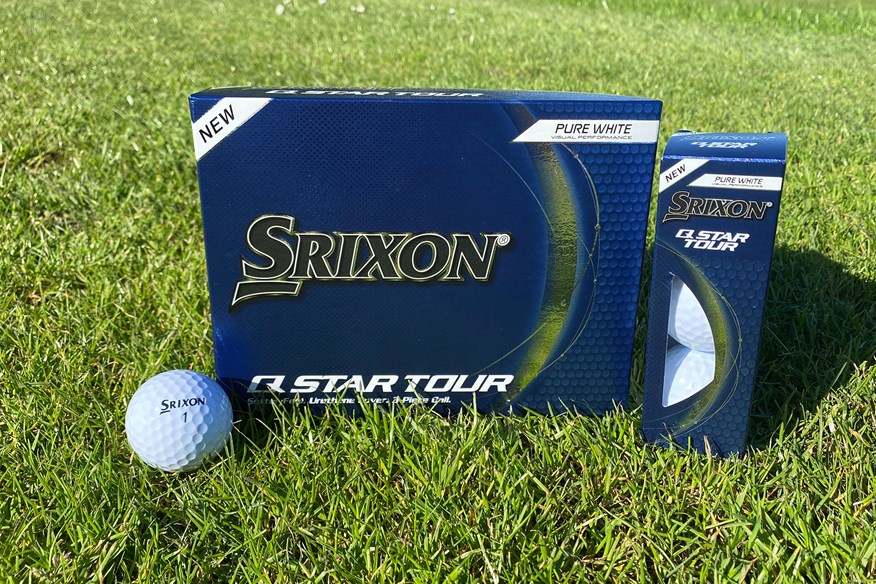

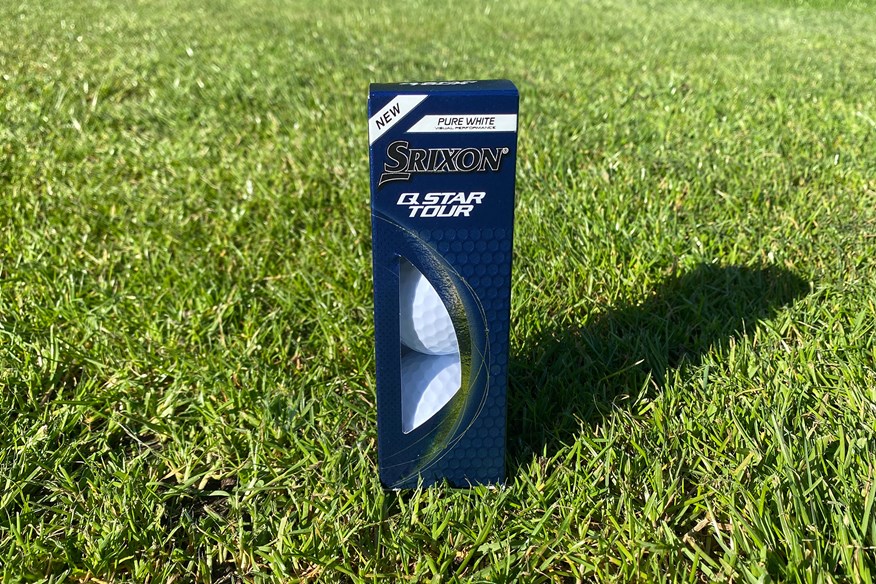
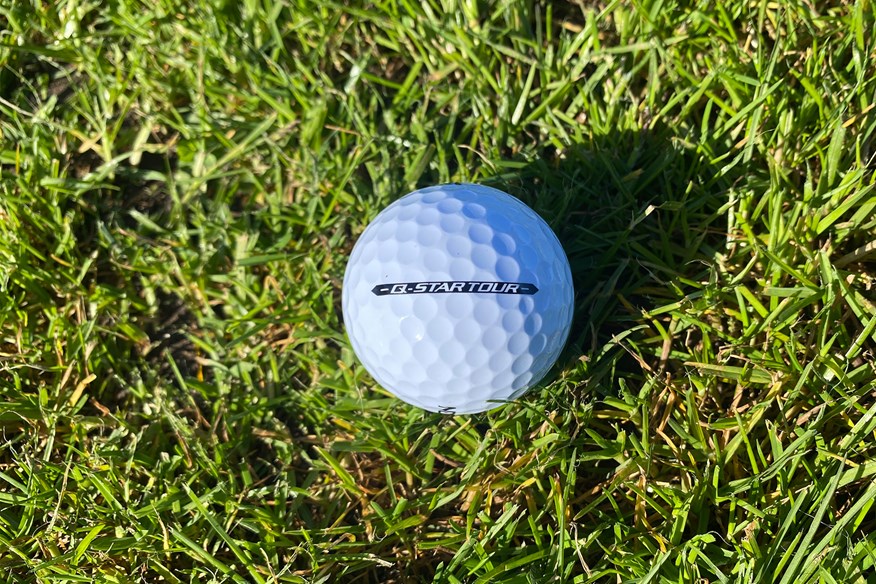
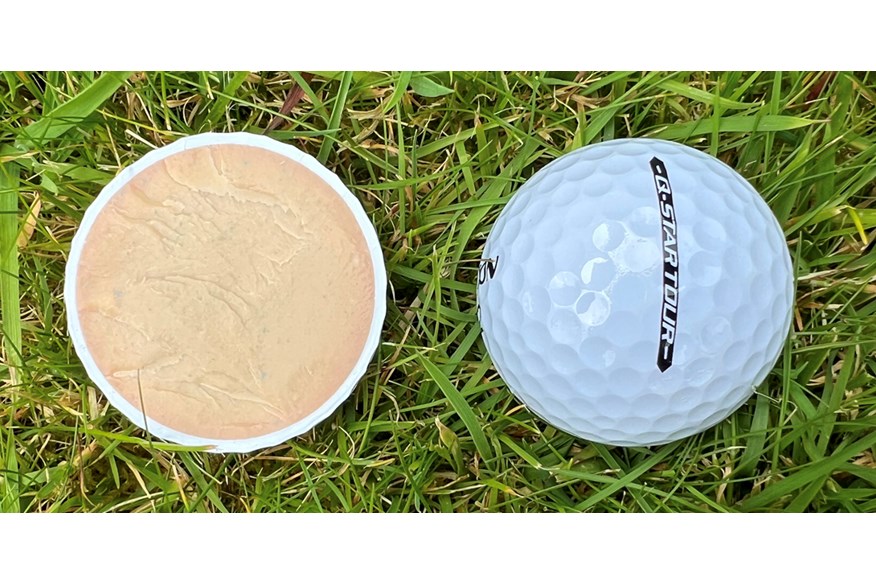
Essentially the idea gives club golfers the softer feel they often enjoy but also thanks to a urethane cover there’s no trading-off of shot control and stopping power close to the green.
Softer feeling, lower compression golf balls typically spin less so they’re often more accurate, and so long as you can launch them high enough, they will go further too. The 2024 Q-Star Tour is 5th generation its core moves from a softer center to a firmer outer while Srixon’s SpinSkin with SeRM helps the cover bite into the grooves of a wedge to amplify short-distance control.
To ensure you're thinking in the right ballpark see the Q-Star Tour as a rival to the TaylorMade Tour Response, Callaway Chrome Soft, and Vice Pro Air.
Read our full Srixon Q-Star Tour golf ball review.
Pros
- Long and high ball flight with the iron
- The shot height and a steep descent angle will help shots nestle a little on the green
Cons
- Low spin with the iron and wedge
| Construction | 3-Piece |
| Cover | Urethane |
| Cost per ball | $3.33 |
Test data and verdict: Srixon Q-Star Tour
| Driver 85mph Swing | Srixon Q-Star Tour |
| Ball speed (MPH) / Launch angle (º) | 123.4 / 13.6 |
| Backspin (RPM) | 2,442 |
| Carry (YDS) | 189 |
| Driver 100mph Swing | |
| Ball speed (MPH) / Launch angle (º) | 142.9 / 13.6 |
| Backspin (RPM) | 2,457 |
| Carry (YDS) | 238.7 |
| Driver 115mph Swing | |
| Ball speed (MPH) / Launch angle (º) | 163.6 / 11.7 |
| Backspin (RPM) | 2,077 |
| Carry (YDS) | 275.1 |
| 7-Iron | |
| Ball speed (MPH) / Launch angle (º) | 108.1 / 21.3 |
| Backspin (RPM) | 4,985 |
| Height (YDS) | 32 |
| Descent angle (º) | 44.8 |
| Carry (YDS) | 156.5 (T1) |
| Wedge | |
| Backspin (RPM) | 6,810 |
| Shot area (SQ YDS) | 3 |
| Carry (YDS) | 106.5 |
| Average Shot Area | |
| Averaged over driver, 7-iron and PW | 33.3 SQ YDS |
VERDICT: Srixon Q-Star Tour (2024)
Here at TG, we’ve been big fans of how the club golfer urethane cover golf ball market has grown over recent years. We love the idea of golf balls being designed with us in mind, and the Q-Star Tour is one such model that has helped convince golfers of the benefits of bringing together lower compression for a softer feel and a urethane cover for great greenside performance. Today however the market has become fractured as different brands are going after the same golfers in very different ways, which can easily lead to confusion.
The Q-Star Tour has always been about across-the-board performance, meaning when we’ve tested previous models rarely have they competed on flat-out ball speed or carry distance with the driver. Yet in reality at 85 mph and 100 mph with the driver, all six 3-piece club player balls in this test are covered off by just 3.4 yds of difference at 100 mph and 2.4 yds at 85mph, so there’s little to gain here anyway.
Yet with the 7-iron the Q-Star Tour offered up our fastest ball speed (108.1mph in the 3-piece club golfer category), and produced the highest ball flight, 2nd steepest descent angle, and at 156.5 yds it tied 1st for carry distance.
All impressive numbers, but it was also one of only four balls in the entire test to produce less than 5,000 rpm of backspin (4,985 rpm) with the iron which isn’t brilliant news for stopping shots at lower speeds. To top things off, with a wedge the Q-Star Tour produced 6810 rpm of backspin which is 625 rpm lower than our test average, numbers which are a little alarming.
To put it into context the Kirkland Signature V3, which also features in the 3-piece club golfer category, posted 6109 rpm (2nd highest of the entire test) and 8043 rpm (3rd highest for the entire test) of iron and wedge spin respectively. So, be aware there’s a real speed and distance or backspin decision to make here.
The model is incredibly friendly on your pocket, which in the current climate is really important if you’re prone to losing a few. Historically the AD333 has never quite been the longest or most powerful ball out there, but the average club golfers it targets are much less likely to quibble over tiny distance differences when as our previous test sessions have shown the ball is great at spinning and stopping on mid iron and wedge approaches into greens.
A slightly lower 70 compression for this generation (it was 72 on the previous model) will help straighten ball flight, nudge up accuracy, and give a slightly softer feel in the short game.
Pros
- Good iron and wedge spin at lesser speeds
- Reasonable value for money
Cons
- This is not a distance ball
| Construction | 2-Piece |
| Cover | Ionomer |
| Cost per ball | $1.49 |
Test data and verdict: Srixon AD333
| Driver 85mph Swing | Srixon AD333 |
| Ball speed (MPH) / Launch angle (º) | 122.7 / 13.2 |
| Backspin (RPM) | 2,398 |
| Carry (YDS) | 185 |
| Driver 100mph Swing | |
| Ball speed (MPH) / Launch angle (º) | 142.6 / 13 |
| Backspin (RPM) | 2,400 |
| Carry (YDS) | 235 |
| Driver 115mph Swing | |
| Ball speed (MPH) / Launch angle (º) | 162.7 / 11.4 |
| Backspin (RPM) | 2,047 |
| Carry (YDS) | 270.9 |
| 7-Iron | |
| Ball speed (MPH) / Launch angle (º) | 106.9 / 21.1 |
| Backspin (RPM) | 5,276 |
| Height (YDS) | 31.3 |
| Descent angle (º) | 44.7 |
| Carry (YDS) | 153.1 |
| Wedge | |
| Backspin (RPM) | 7,309 |
| Shot area (SQ YDS) | 10.5 |
| Carry (YDS) | 104.5 |
| Average Shot Area | |
| Averaged over driver, 7-iron and PW | 47.3 SQ YDS |
VERDICT: Srixon AD333 (2024)
Previous versions of the AD333 have been award winners here at TG as the ball has always represented a great mix of speed, distance, and stopping power along with a very sensible price tag for the golfers it was designed for. That trend hasn’t changed too much in 2025 even if initially the model’s numbers might appear a little underwhelming.
I can’t cover up how the AD333 was our shortest ball at 85 mph with the driver, at this speed you could just play the Wilson Staff Model (the longest) and add an immediate 8.6 yds of carry distance to your drives. We saw almost identical results at 100 mph as the AD333 was 2nd shortest so it’s entirely possible to gain an instant 10.4 yards by putting the Wilson Staff Model X (the longest ball) in play.
But in the AD333’s defense, this value-for-money ball never drops below critical levels of launch or spin with the iron or wedge, as some models do. For me, that’s a really important factor if you happen to play the game with a very average swing speed. This trait alone means you’ll still be able to hold greens on long and shorter approaches which is debatable with some of the lower spin alternatives.
To put things into context the AD333 is shorter than a Titleist Pro V1 (by 6.2 yds at 85mph and 4.8 yds at 100mph) with a driver, but 1.1 yds longer with a 7-iron. In terms of spin, the Pro V1 boasts 318 rpm more iron stopping power and 382 rpm more wedge spin, but they’re also $17.95 a dozen or $1.50 a ball more expensive.
If like me your swing speed is moderate and you don’t want to pay a fortune for golf balls I’d recommend giving the AD333 your full attention.
With a 2-piece construction (where the majority of the golf ball is a huge core in the center) and a firm ionomer cover the Distance is very much what golfers would expect from a traditional budget-style distance golf ball.
With an 89 compression, this model comes at distance, in a different way to the modern trend of going softer with less spin, very simply it's harder and therefore faster. To play the Distance successfully you will need to like the feel of a firmer golf ball and buck the trend over the last decade of using softer feeling, lower compression, and reduced spin models.
Read our full Srixon Distance golf ball review.
Pros
- A very fairly priced golf ball
- Decent levels of iron and wedge spin
- Good driver distance in the 2-piece ball category
Cons
- A budget ball that's genuinely difficult to fault
| Construction | 2-Piece |
| Cover | Ionomer |
| Cost per ball | $0.87 |
Test data and verdict: Srixon Distance
| Driver 85mph Swing | Srixon Distance |
| Ball speed (MPH) / Launch angle (º) | 123.1 / 13.6 |
| Backspin (RPM) | 2,352 |
| Carry (YDS) | 187.6 |
| Driver 100mph Swing | |
| Ball speed (MPH) / Launch angle (º) | 143.7 / 12.7 |
| Backspin (RPM) | 2,383 |
| Carry (YDS) | 236.8 |
| Driver 115mph Swing | |
| Ball speed (MPH) / Launch angle (º) | 164.7 / 11.4 |
| Backspin (RPM) | 2,000 |
| Carry (YDS) | 274.8 |
| 7-Iron | |
| Ball speed (MPH) / Launch angle (º) | 107 / 21 |
| Backspin (RPM) | 5,306 |
| Height (YDS) | 31.3 |
| Descent angle (º) | 44.6 |
| Carry (YDS) | 153.1 |
| Wedge | |
| Backspin (RPM) | 7,636 |
| Shot area (SQ YDS) | 11.7 |
| Carry (YDS) | 103.6 |
| Average Shot Area | |
| Averaged over driver, 7-iron and PW | 34.5 SQ YDS |
VERDICT: Srixon Distance
At just 0.09p a yard (averaged over three driver swing speeds) the Srixon Distance is the 3rd cheapest golf ball within this test. It’s not too difficult then to understand why this model is so popular with regular club golfers who just won’t buy a more costly premium golf ball. But does the ball actually deliver on its distance promise?
In the 4 model 2-piece category the Distance ranked longest at 85mph, 2nd at 100 mph, 2nd at 115 mph, and 2nd longest with the 7-iron, so if distance and budget are important to you this really isn’t a bad option at all. Interestingly the power doesn’t come at the expense of spin with the irons and wedges like some of the 3-piece club golfers models. By registering backspin of 5306 rpm and 7636 rpm with the 7-iron and wedge (2nd for each in the 2-piece category) this model doesn’t drop to dangerously low levels of backspin just to help golfers hit shots further.
To put things into perspective versus a Titleist Pro V1 the Srixon Distance spins 288 rpm less with the 7-iron and 55 rpm less with the wedge, which many golfers will believe is a fair trade-off when they can buy 24 Srixon Distance for the price of 12 Pro V1’s and still have some cash left over for a couple of beers after the round.
TaylorMade
Price per ball $4.16 / 0.21c per yard
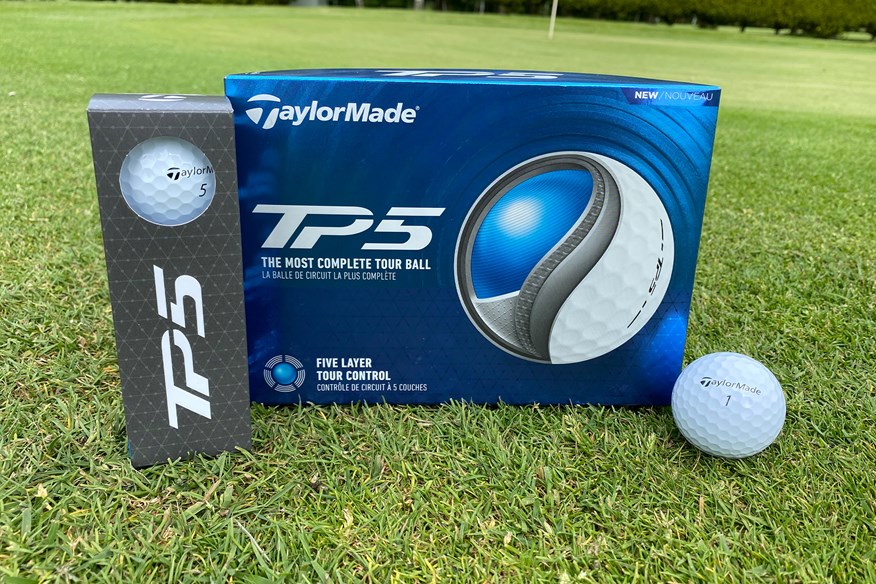

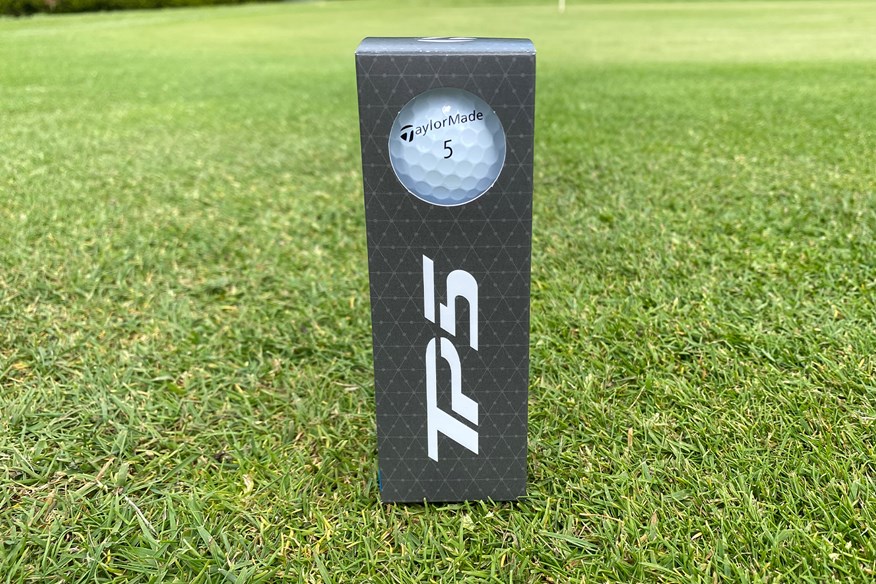
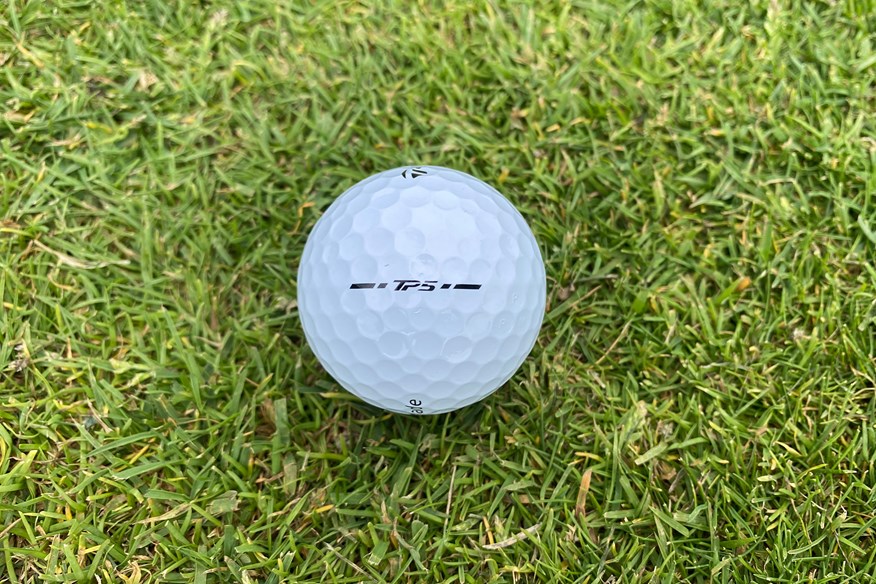
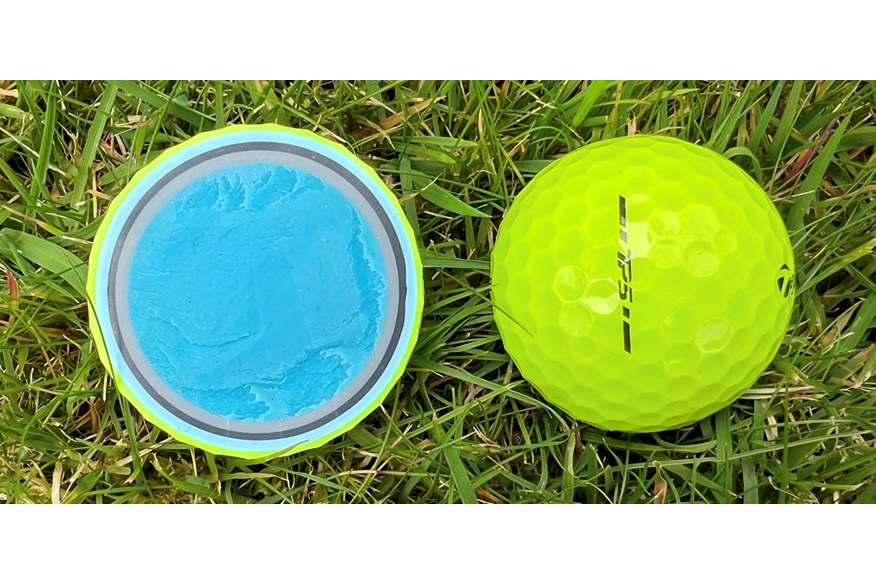
A new Speed Wrapped Core decouples speed from sound and feel, so golfers get a better-feeling golf ball without giving up the speed associated with switching to a lower compression ball.
Compared to previous models the 2024 TP5 also has a new lower more competitive price.
Read our full TaylorMade TP5 golf ball review
Pros
- A good alternative to the Titleist Pro V1
- Good if you like to see some shot shape
- A new lower price makes the TP5 and TP5x the best-value tour ball
Cons
- You put performance on the line for a softer feel
| Construction | 5-Piece |
| Cover | Urethane |
| Cost per ball | $4.16 |
Test data and verdict: TaylorMade TP5
| Driver 85mph Swing | TaylorMade TP5 |
| Ball speed (MPH) / Launch angle (º) | 123.9 / 13.3 |
| Backspin (RPM) | 2,637 |
| Carry (YDS) | 191.1 |
| Driver 100mph Swing | |
| Ball speed (MPH) / Launch angle (º) | 144.9 / 13.3 |
| Backspin (RPM) | 2,703 |
| Carry (YDS) | 244.3 |
| Driver 115mph Swing | |
| Ball speed (MPH) / Launch angle (º) | 164.8 / 11.7 |
| Backspin (RPM) | 2,080 |
| Carry (YDS) | 278.3 |
| 7-Iron | |
| Ball speed (MPH) / Launch angle (º) | 107.7 / 20.7 |
| Backspin (RPM) | 5,672 |
| Height (YDS) | 31.4 |
| Descent angle (º) | 45 |
| Carry (YDS) | 152.9 |
| Wedge | |
| Backspin (RPM) | 7,617 |
| Shot area (SQ YDS) | 6 |
| Carry (YDS) | 105.7 |
| Average Shot Area | |
| Averaged over driver, 7-iron and PW | 28.2 SQ YDS |
VERDICT: TaylorMade TP5 (2024)
TaylorMade makes no secret at all about the TP5x being their fastest and longest golf ball if those happen to be the traits you’re looking for in a tour-level option, where the TP5 fits in by offering a softer feel for extra control, especially from the greenside. So, it’s unfair to blindly study the numbers on our test spreadsheet without considering this particular ball is designed to perform within 60 yards of the green for golfers who prefer a softer feel.
Bar outpowering the Pro V1 by 4.5 yards at 100 mph with the driver the TP5 produced virtually identical data to the Titleist across lots of our test metrics. With the model being designed to offer up a little more shot shape potential than the straighter-focused TP5x it’s not too surprising the model served up a shot area bang on our test average, but bigger than the TP5x.
With such similar performance to the Pro V1 cost inevitably has to come into any choice between the pair, if you’re buying 6 dozen for the season the TP5 will save you $38.18, almost enough to squeeze out an extra dozen balls for absolutely zero trade-off in performance.
If you’re trying to choose between the TaylorMade balls the firmer TP5x offered up 0.8 yds additional carry distance when averaged over the 100 and 115 mph swing speeds with a driver. With 7-iron the TP5x upped carry distance by 1.3 yards, where the TP5 was fractionally higher spinning with both the iron (204 rpm) and wedge (11 rpm). My gut feeling is unless you have very specific requirements the majority of golfers would get better results from the slightly faster and longer TP5x.
Price per ball $4.16 / 0.22c per yard
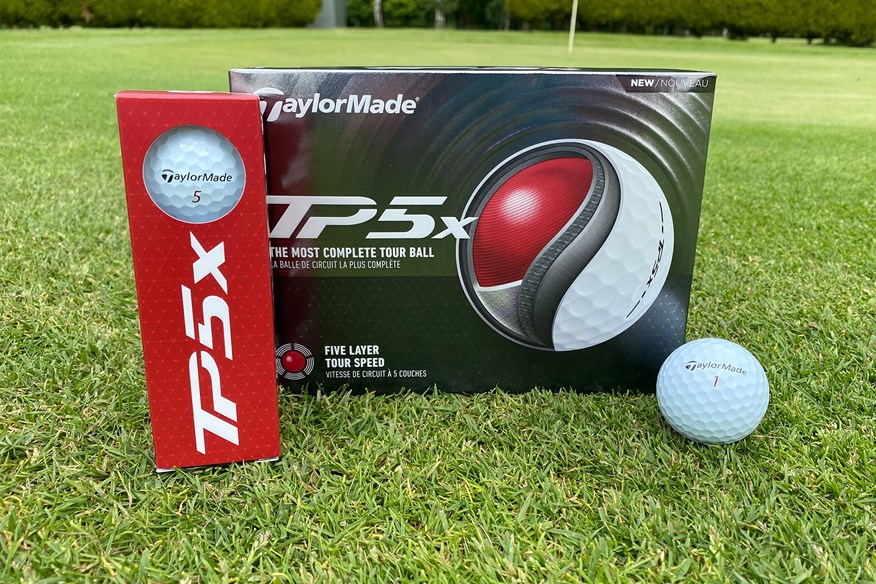

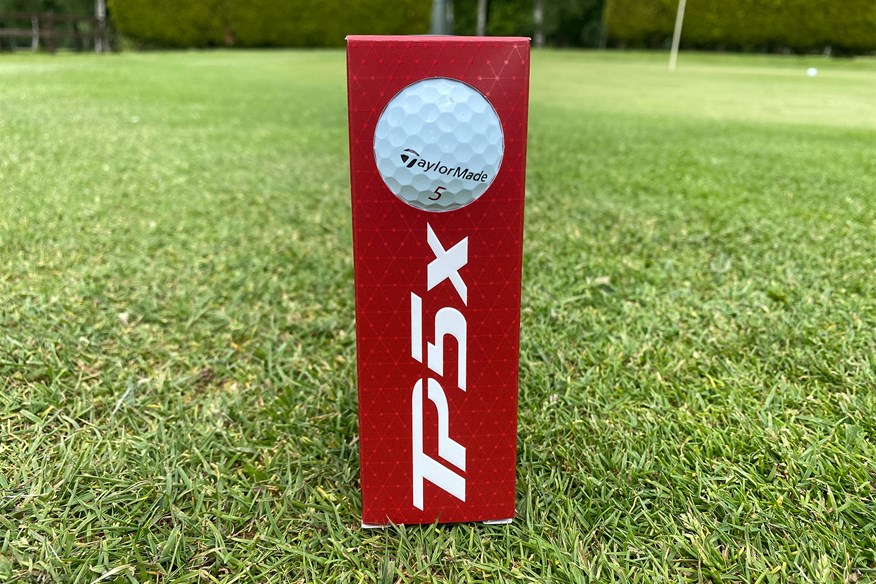
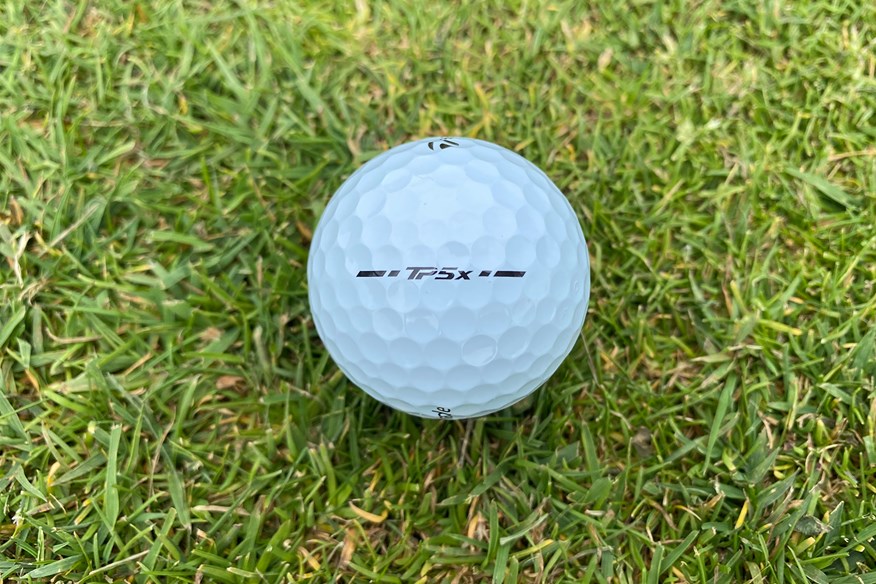
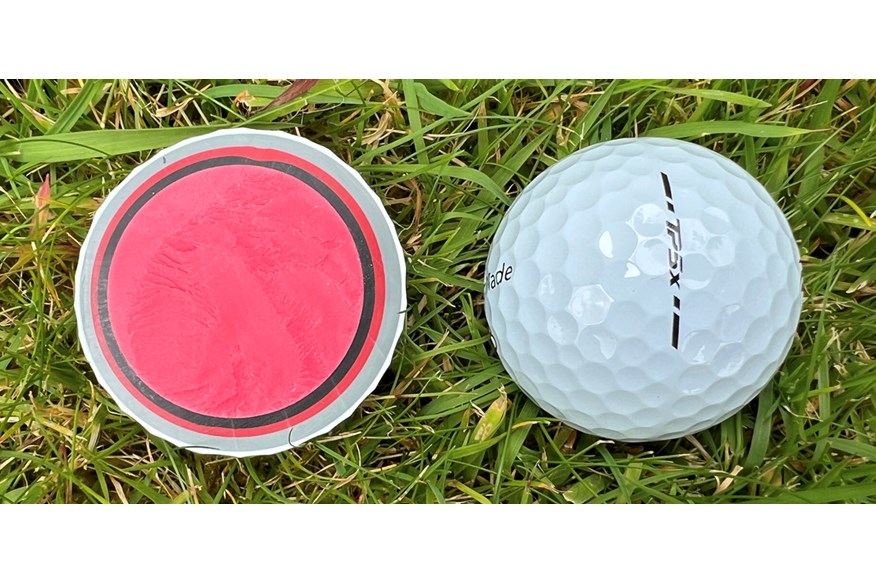
The 2024 TP5x reduces driver and long iron spin (over the previous model) so there’s a focus on distance while maintaining greenside control. This would be the perfect ball choice for golfers seeking less driver spin and wanting to hit shots a fraction higher through the bag.
Rory McIlroy, Tommy Fleetwood, Rickie Fowler, and Nelly Korda all play this ball out on tour.
Read our full TaylorMade TP5x golf ball review.
Pros
- Low spin and long at higher speeds
- Less expensive than most tour-level balls
- Good iron and wedge spin
- A favorite on tour
Cons
- The Callaway Chrome Tour X is slightly longer with the driver and higher spin with an iron and wedge. It's also more pricey.
| Construction | 5-Piece |
| Cover | Urethane |
| Cost per ball | $4.16 |
Test data and verdict: TaylorMade TP5x
| Driver 85mph Swing | TaylorMade TP5x |
| Ball speed (MPH) / Launch angle (º) | 124.1 / 13.3 |
| Backspin (RPM) | 2,565 |
| Carry (YDS) | 190.9 |
| Driver 100mph Swing | |
| Ball speed (MPH) / Launch angle (º) | 145.1 / 13.5 (T3) |
| Backspin (RPM) | 2,506 |
| Carry (YDS) | 244 |
| Driver 115mph Swing | |
| Ball speed (MPH) / Launch angle (º) | 167 / 11.1 (3) |
| Backspin (RPM) | 2,073 |
| Carry (YDS) | 280.2 |
| 7-Iron | |
| Ball speed (MPH) / Launch angle (º) | 108 / 20.7 |
| Backspin (RPM) | 5,468 |
| Height (YDS) | 31.6 |
| Descent angle (º) | 44.8 |
| Carry (YDS) | 154.2 |
| Wedge | |
| Backspin (RPM) | 7,606 |
| Shot area (SQ YDS) | 8.1 |
| Carry (YDS) | 105.7 |
| Average Shot Area | |
| Averaged over driver, 7-iron and PW | 20 SQ YDS |
VERDICT: TaylorMade TP5x (2024)
This time last year I harped on about the brilliance of the Wilson Staff Model ball within our 2023 robot golf ball test as not only did it produce excellent launch monitor numbers it was also the least expensive tour-level ball. In 2024 the situation has changed somewhat as Wilson has upped the price of their new Staff Model ball by $8.96 a dozen, whereas TaylorMade has dropped theirs by $6 a box, it’s a masterstroke that means the TP5x now becomes a serious value for money option.
If cutting driver spin is your goal the TP5x was our lowest spin premium tour level model. The X also tied 3rd for producing the fastest ball speed in both the 100 mph and 115 mph driver categories so it’s absolutely no slouch when it comes to speed and power, even though it didn’t quite feature among the three longest balls in any category. TaylorMade tour-level balls are famed for being longer than the competition in the long irons, we saw 2.2 yards of extra carry distance over the Pro V1 with a 7-iron, a number TaylorMade would only expect to increase moving into the 5 and 4 iron.
An average shot area just 0.8 yards wider than our 3rd placed ball (and 8.2 sq yds tighter than the TP5) reinforces the TP5x as a credible tour-level ball for accuracy, consistency, and reliability. If I were spending my own money in 2025 on premium tour-level balls the choice would come down to the TP5x and Callaway Chrome Tour X. The Callaway on paper is fractionally longer with the driver and higher spin with 7-iron and wedge whereas the TaylorMade is a little less pricey. Both can do an excellent job for you.
Price per ball $2.08 / 0.11c per yard
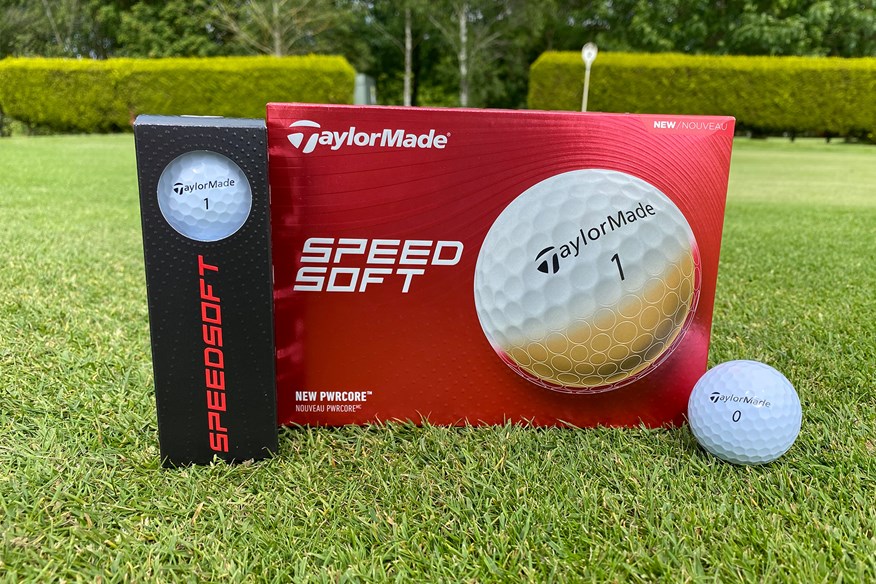

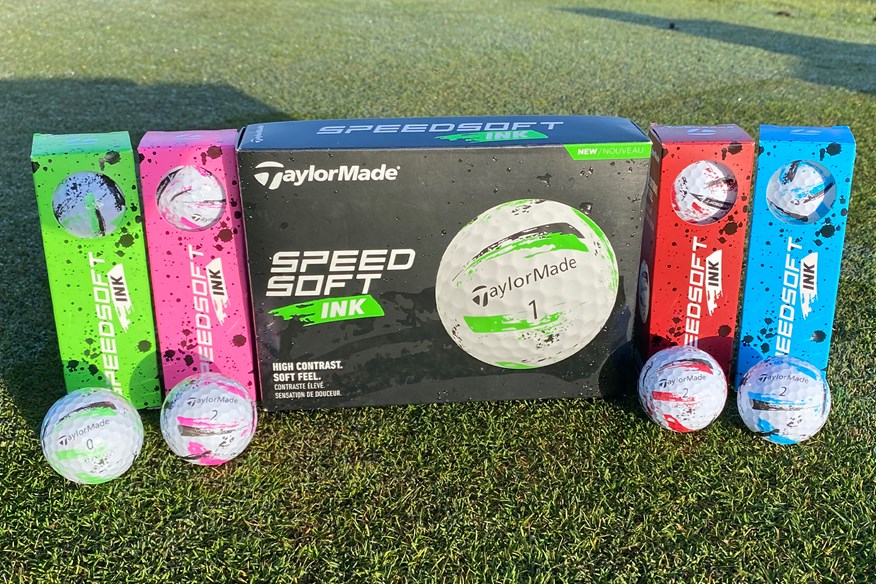
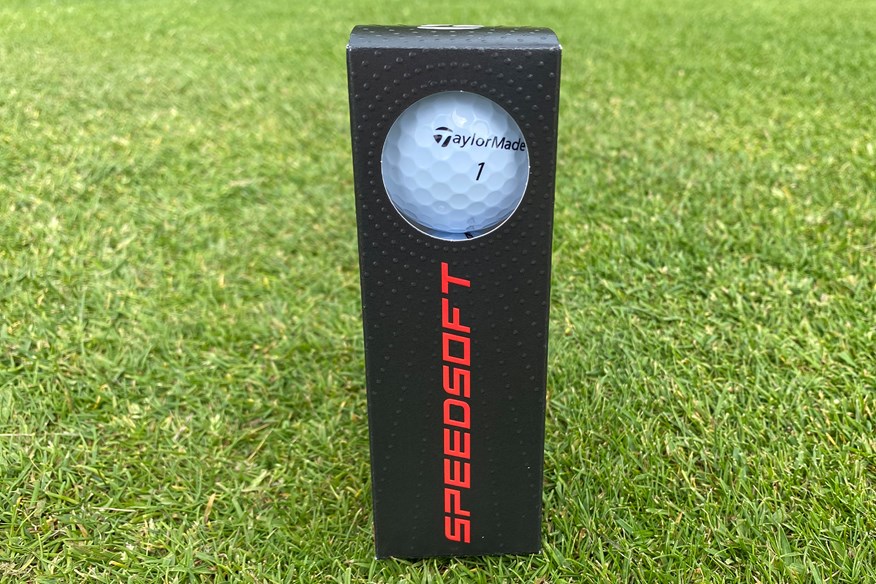
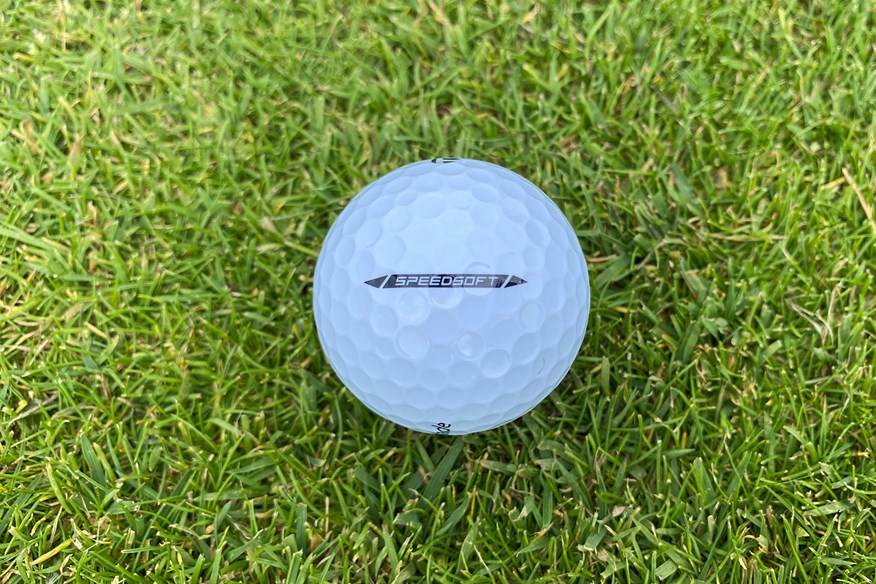
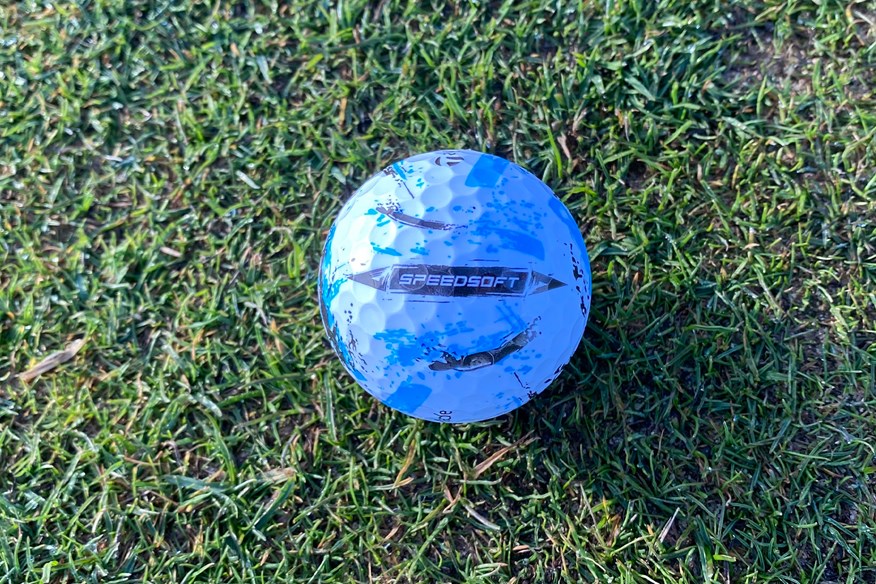
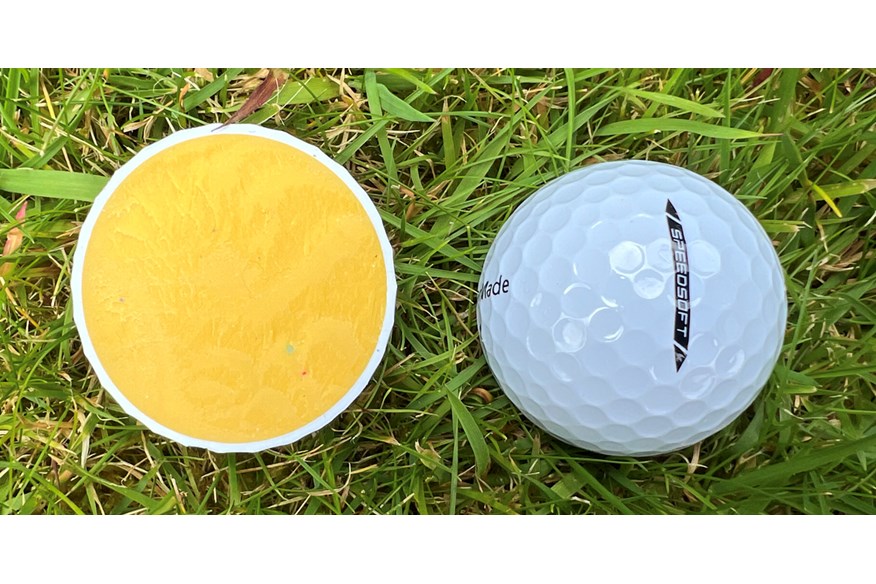
It would be easy to write the 2-piece SpeedSoft off as just another budget golf ball, but TaylorMade reckons it hits the value and performance sweet spot that lots of club golfers shop within.
The SpeedSoft is a great option if you don’t feel there’s value to buying premium golf balls, and you’re happy with accepting your choice of ball will perform nicely across the board without helping optimize any particular area.
If I were spending my own money I’d definitely look at the high contrast and colourful SpeedSoft Ink. You won’t need to mark them to personalize them and the bigger side stamp is really useful when lining up on the tee and dancefloor.
Read our full TaylorMade SpeedSoft golf ball review.
Pros
- A reasonable performer in the 2-piece category
- A very low spinner with the driver
Cons
- You will need reasonable speed to launch this model to a decent peak height and descent angle
| Construction | 2-Piece |
| Cover | Ionomer |
| Cost per ball | $2.08 |
Test data and verdict: TaylorMade SpeedSoft
| Driver 85mph Swing | TaylorMade SpeedSoft |
| Ball speed (MPH) / Launch angle (º) | 123 / 13.6 |
| Backspin (RPM) | 2,236 |
| Carry (YDS) | 185.7 |
| Driver 100mph Swing | |
| Ball speed (MPH) / Launch angle (º) | 142 / 13.6 |
| Backspin (RPM) | 2,267 (Lowest) |
| Carry (YDS) | 234.8 |
| Driver 115mph Swing | |
| Ball speed (MPH) / Launch angle (º) | 161.7 / 11.7 |
| Backspin (RPM) | 1,984 (Lowest) |
| Carry (YDS) | 269.1 |
| 7-Iron | |
| Ball speed (MPH) / Launch angle (º) | 107.2 / 21.2 |
| Backspin (RPM) | 5,185 |
| Height (YDS) | 31.5 |
| Descent angle (º) | 44.7 |
| Carry (YDS) | 154.1 |
| Wedge | |
| Backspin (RPM) | 7,420 |
| Shot area (SQ YDS) | 6 |
| Carry (YDS) | 104.8 |
| Average Shot Area | |
| Averaged over driver, 7-iron and PW | 25.5 SQ YDS |
VERDICT: TaylorMade SpeedSoft
It would be really easy to cast an eye over our data and completely ignore the SpeedSoft as it is not flying high in any of our charts, but for a true performance picture, we have to look at the model in the context of the 2-piece balls it goes up against.
Our data shows at 85mph and 100mph with the driver (the players who’ll most likely use this golf ball), the model gives up just 1.9 yds, and 2.7 yds respectively to the very longest, which in the big scheme of things is absolutely nothing. Throw in the longest carry distance with the 7-iron (a yard longer than any other ball) and a picture starts to emerge of the SpeedSoft being able to hold its own.
But you have to understand distance comes to this model through reducing spin. This is the lowest spin driver ball within the whole of this test, which translates to producing the least amount of 7-iron spin within the 2-piece ball category too. The saving grace though is it miraculously produced bang on test average levels of stopping power on our wedge approaches, so don’t write the model off as being too low spin for approaches to drop, hop, and stop on the dancefloor.
With a price tag of $24.99 a dozen, it should come as no surprise the SpeedSoft is for budget-conscious golfers. At this price, we surely wouldn’t expect it to be the fastest, longest, most consistent, or most accurate but so long as you have reasonable levels of speed to launch the ball to a good peak height it can do a job for you.
Just be aware you don’t want to be searching for speed and putting this model into play with a set of strong lofted irons, that combination would create the perfect storm for not being able to stop shots on the dancefloor.
Titleist
Price per ball $4.58 / 0.24c per yard
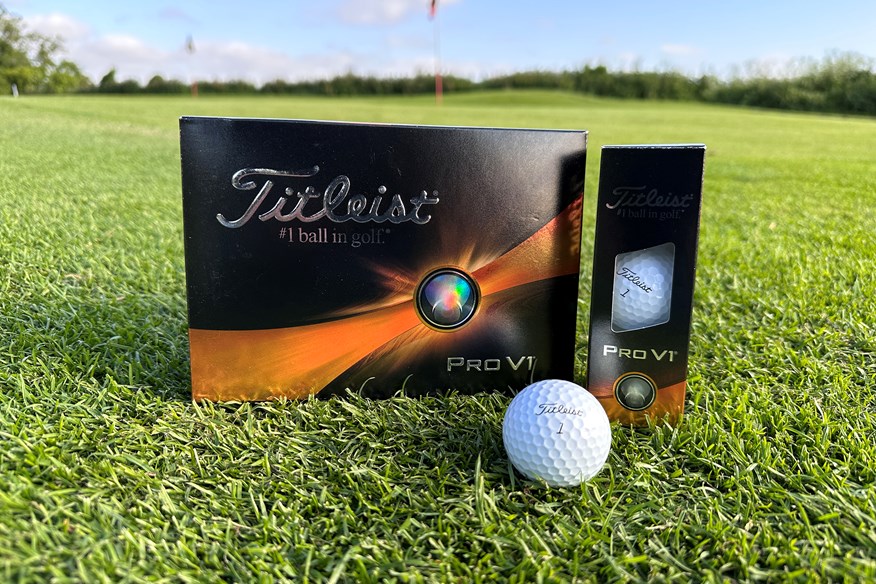

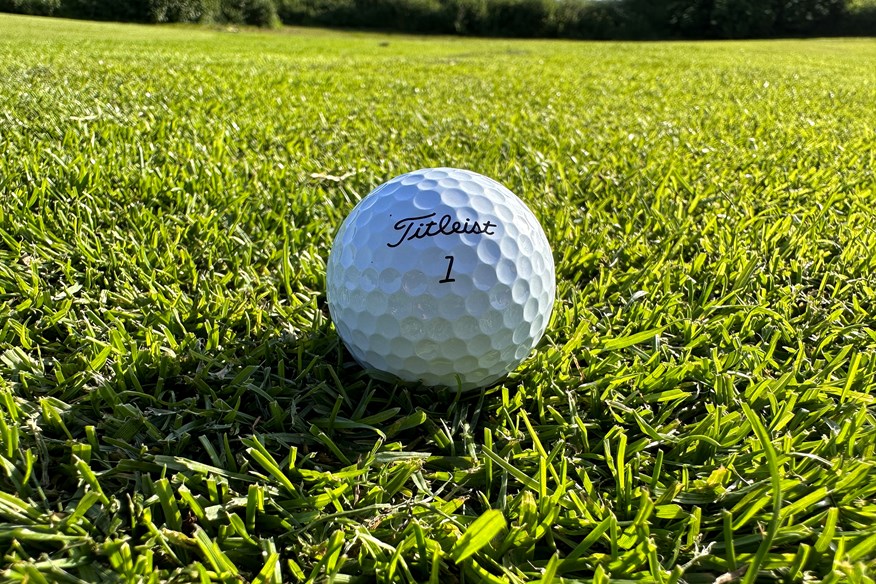
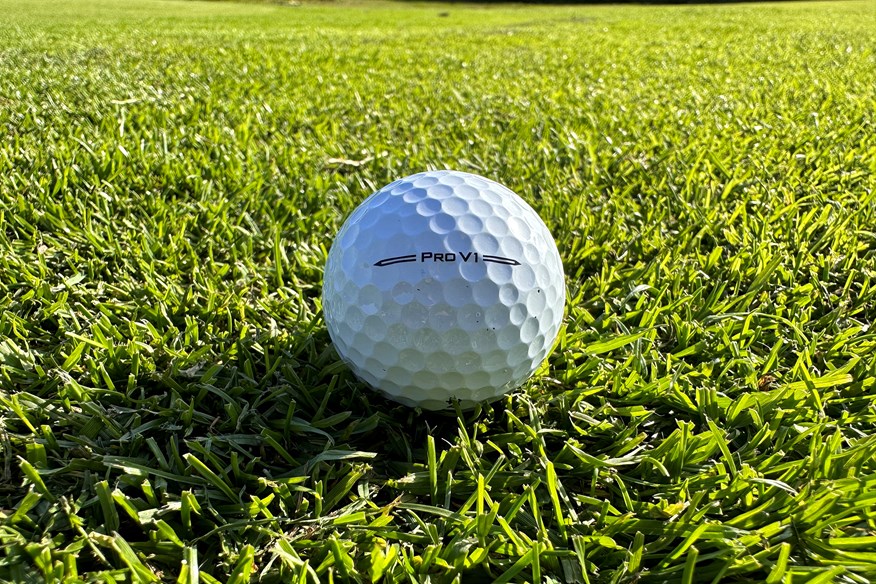
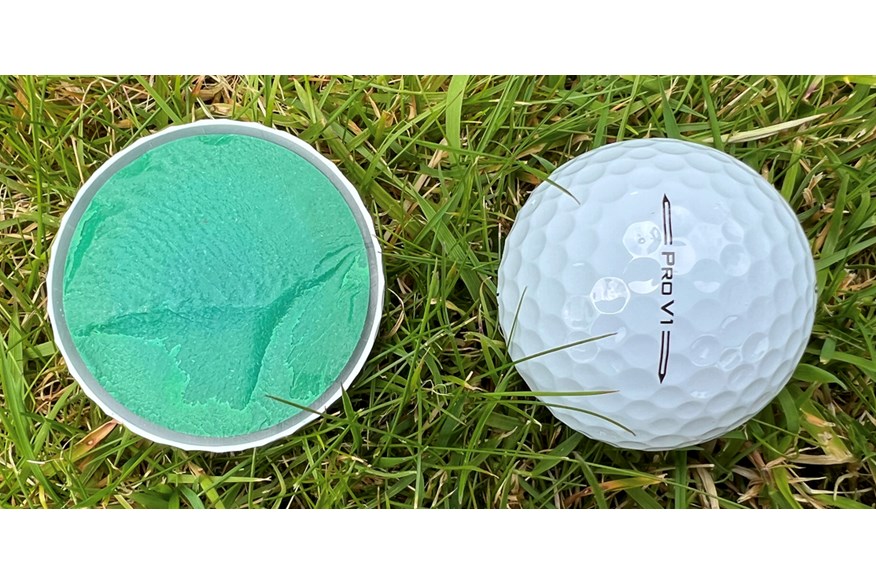
Expect a softer feel (than the Pro V1x), along with Drop-and-Stop greenside control. If you don’t specifically want a higher ball flight and long game spin, this is Titleist’s best ball for you. The ball of choice for Scottie Scheffler, Viktor Hovland, and Tony Finau.
Read our full Titleist Pro V1 (2023) golf ball review.
Pros
- This is the market-leading golf ball
- A firm favorite on tour
- You get a softer feel
Cons
- The Titleist Pro V1x is longer and spins more with an iron and wedge
| Construction | 3-Piece |
| Cover | Urethane |
| Cost per ball | $4.58 |
Test data and verdict: Titleist Pro V1
| Driver 85mph Swing | Titleist Pro V1 |
| Ball speed (MPH) / Launch angle (º) | 123.8 / 13.5 |
| Backspin (RPM) | 2,513 |
| Carry (YDS) | 191.2 |
| Driver 100mph Swing | |
| Ball speed (MPH) / Launch angle (º) | 144.8 / 12.4 |
| Backspin (RPM) | 2,519 |
| Carry (YDS) | 239.8 |
| Driver 115mph Swing | |
| Ball speed (MPH) / Launch angle (º) | 165.9 / 11.2 |
| Backspin (RPM) | 2,066 |
| Carry (YDS) | 278.1 |
| 7-Iron | |
| Ball speed (MPH) / Launch angle (º) | 107.5 / 20.7 |
| Backspin (RPM) | 5,594 |
| Height (YDS) | 31.2 |
| Descent angle (º) | 44.8 |
| Carry (YDS) | 152 |
| Wedge | |
| Backspin (RPM) | 7,691 |
| Shot area (SQ YDS) | 10.1 |
| Carry (YDS) | 104 |
| Average Shot Area | |
| Averaged over driver, 7-iron and PW | 17.6 SQ YDS (2) |
VERDICT: Titleist Pro V1 (2023)
The Pro V1 and Pro V1x are the balls every direct-to-consumer brand started out to grab market share from, as thanks to the huge marketing budgets and player sponsorship deals involved competitors knew there was a massive opportunity for comparable urethane-covered balls to steal market share at half the cost. This year’s results (we didn’t test direct-to-consumer models last year) show it’s perfectly possible for direct-to-consumer brands to make rival balls the Pro V1, but very few truly outperform it.
The Pro V1 is no longer the most expensive ball we’ve tested, it always has been before, but at 24c per yard (and $4.58 per ball) that title goes to the 2024 Callaway Chrome Tour/Tour X and Chrome Soft, where the Pro V1 is ever so slightly cheaper at 23c a yard. Averaged over all five test situations the Pro V1 was our 2nd most accurate ball, interestingly though the shot area with the wedge was bigger than average, with only four other balls producing a larger dispersion area. In terms of consistency of ball speed, backspin, and carry distance the Pro V1 on average ranked 14th out of 24, whereas the Pro V1x was positioned 8th,
You’ll need to put a real premium on a softer feel or lower more penetrating ball flight to choose this model as your favorite Titleist ball. Our data shows the Pro V1x is faster, longer (at the 100 and 115 mph driver speeds it’s designed for), and spins more with both a wedge (4.6%) and iron (4.3%), all traits that most club golfers would want from their premium golf ball choice.
Price per ball $4.58 / 0.24c per yard
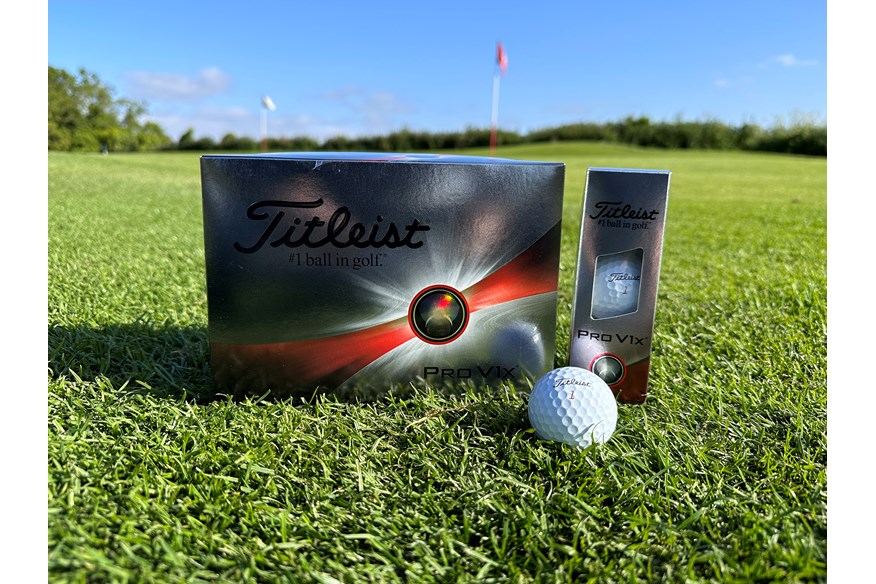

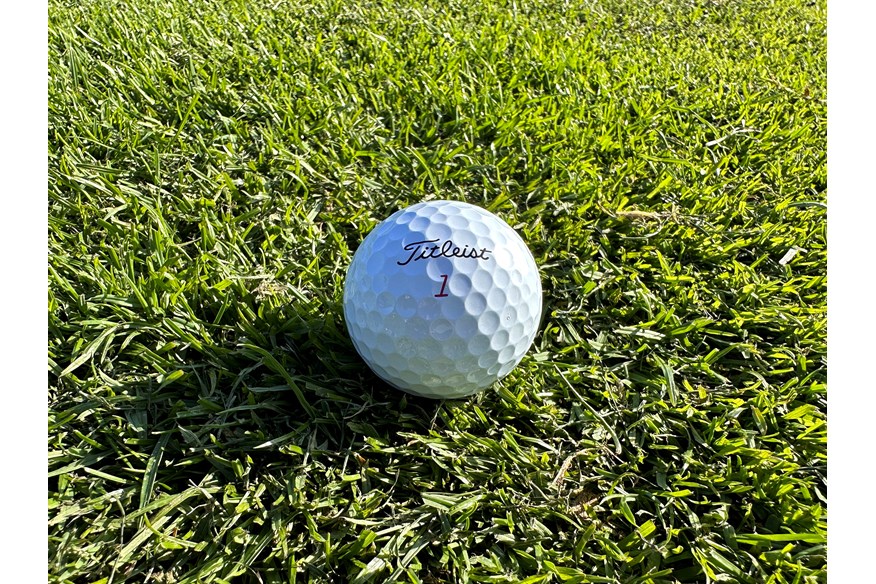
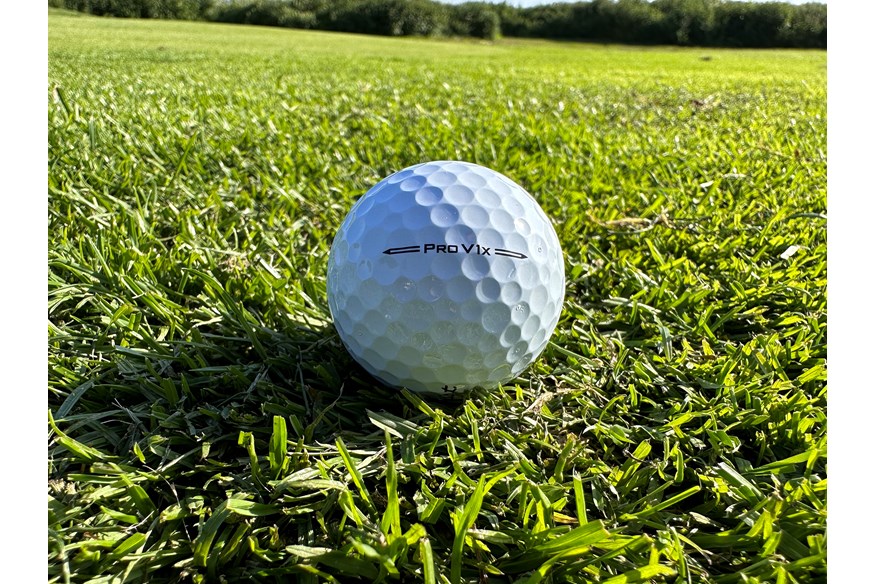
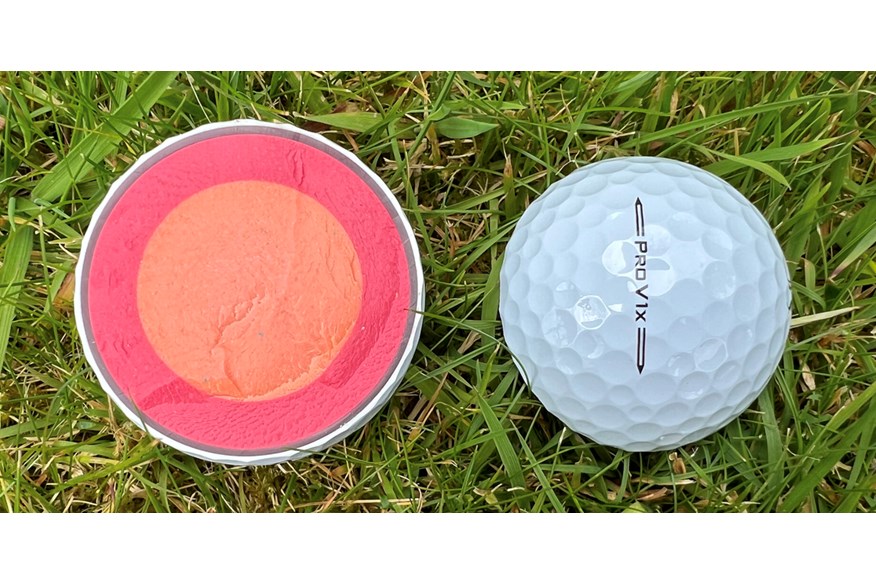
Typically, the Pro V1x offers golfers a little more ball speed, Justin Thomas, Jordan Spieth, and Matt Fitzpatrick all play the model out on tour.
Read our full Titleist Pro V1x (2023) golf ball review.
Pros
- You get more spin where you need it over the Pro V1
- The firmer compression offers up more ball speed than the Pro V1
- A very solid performer for accuracy and consistency
Cons
- Bar the hefty price the Pro V1x is hard to fault
| Construction | 4-Piece |
| Cover | Urethane |
| Cost per ball | $4.58 |
Test data and verdict: Titleist Pro V1x
| Driver 85mph Swing | Titleist Pro V1x |
| Ball speed (MPH) / Launch angle (º) | 123.5 / 13.3 |
| Backspin (RPM) | 2,646 |
| Carry (YDS) | 190 |
| Driver 100mph Swing | |
| Ball speed (MPH) / Launch angle (º) | 145.1 / 12.4 (T3) |
| Backspin (RPM) | 2,539 |
| Carry (YDS) | 240.6 |
| Driver 115mph Swing | |
| Ball speed (MPH) / Launch angle (º) | 166.7 / 11.1 |
| Backspin (RPM) | 2,048 |
| Carry (YDS) | 277.9 |
| 7-Iron | |
| Ball speed (MPH) / Launch angle (º) | 107.1 / 20.4 |
| Backspin (RPM) | 5,835 |
| Height (YDS) | 31 |
| Descent angle (º) | 44.7 |
| Carry (YDS) | 151 |
| Wedge | |
| Backspin (RPM) | 8,046 (2) |
| Shot area (SQ YDS) | 4.7 |
| Carry (YDS) | 104.3 |
| Average Shot Area | |
| Averaged over driver, 7-iron and PW | 25.4 SQ YDS |
VERDICT: Titleist Pro V1x (2023)
In all the robot golf ball testing we’ve ever completed the Pro V1x has come out as a more favorable choice than the Pro V1, as unless you put a hefty premium on a softer feel or lower ball flight it’s really hard to ignore how the X is generally faster, longer and higher spin with the irons and wedges (not from the greenside), so it’s hard to argue it’s not a better choice across the bag on a spreadsheet.
If you like the feeling of firmer X style balls then you really should pay attention to how the Pro V1x compares to the Callaway Chrome Tour X and TaylorMade TP5x. Compared to Callaway’s Tour X the Pro V1x was 4.87 yards shorter, when averaged over our 100 and 115 mph driver speeds. It also produced less iron spin (358rpm) and missed out (to the Chrome Tour X) on maxing out wedge spin (34rpm) too. With an average shot area of 25.4 sq yards, the Pro V1x as you’d expect was well within our test average for accuracy but there’s no escaping the Callaway with an average of 19.2sq yds was 24.4% tighter.
You can save a decent chunk of change by playing the TP5x over the Pro V1x and our data has the TP5x out-gunning the Pro V1x at 100 and 115mph driver swing speeds, and it’s also 3.2 yards longer with a 7-iron. The Pro V1x is higher spinning with the iron (367rpm) and wedge (440rpm), whereas the TP5x flies higher and has a steeper descent angle, so essentially you will see similar results but shots reach their destination in slightly different ways.
Vice
Price per ball $2.83 / 0.15c per yard
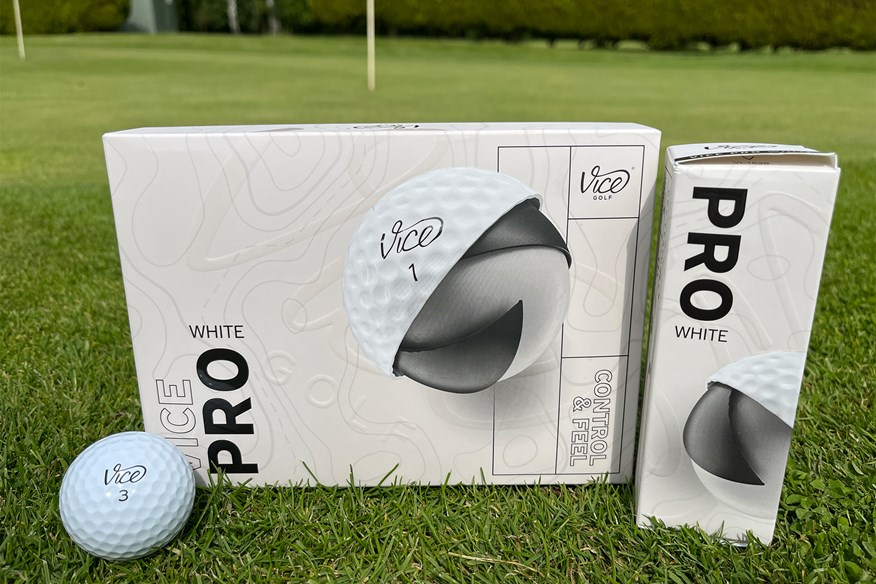

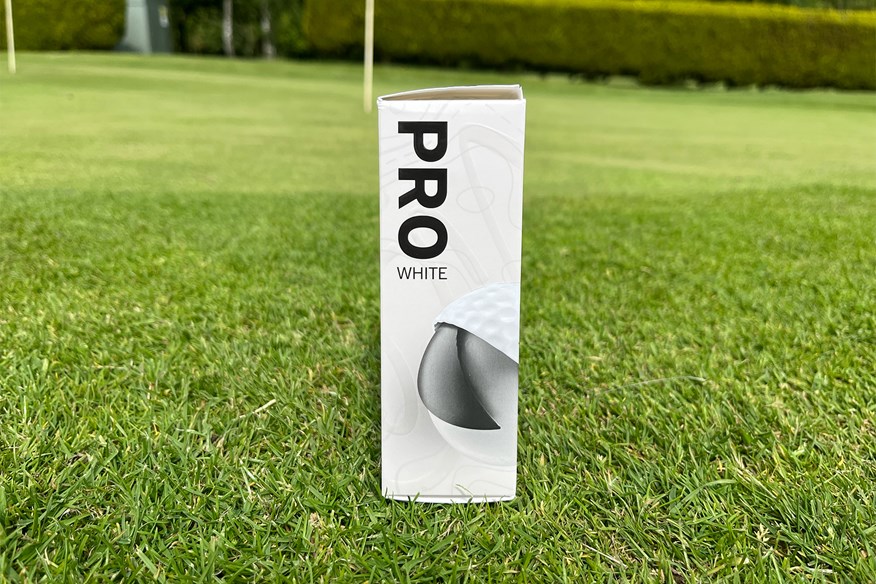
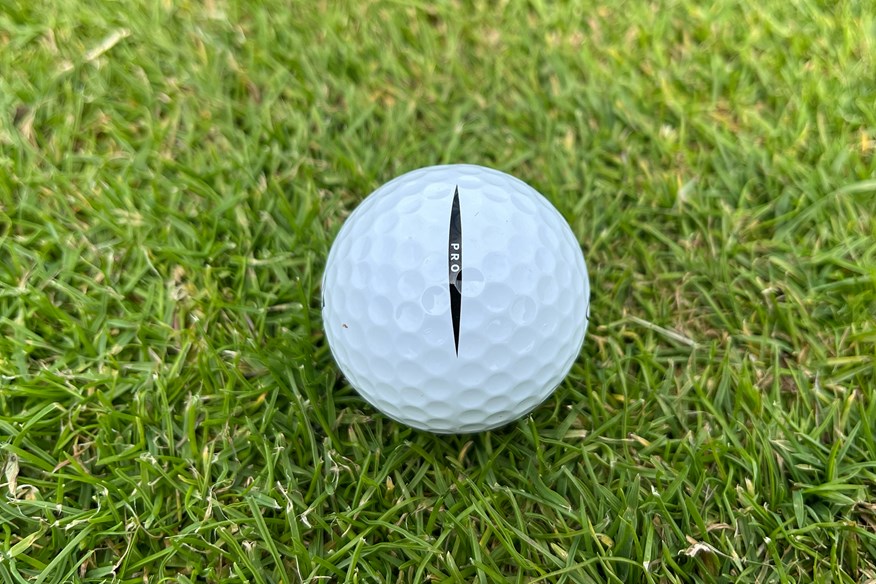
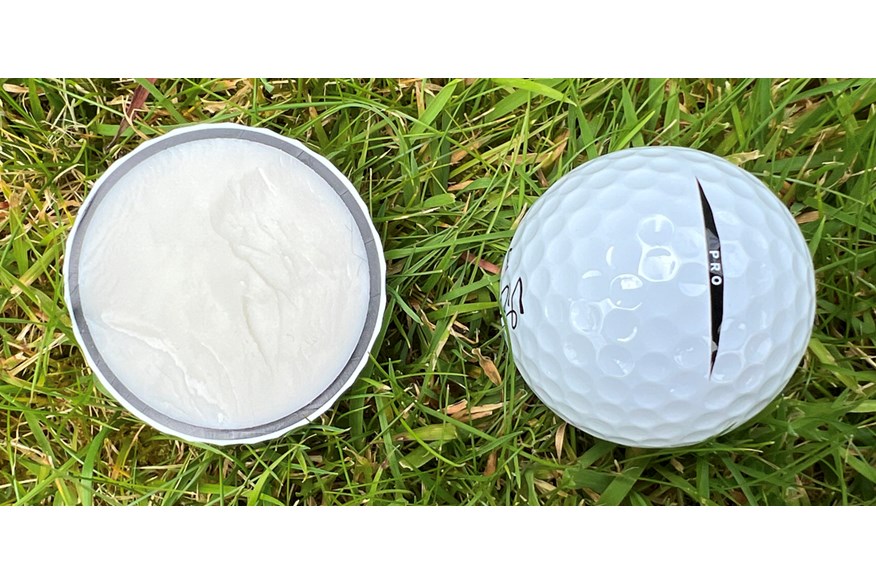
With a 90 compression, the Pro is optimized for medium swing speed players, compared to the brand's firmer Pro Plus design you get more feel, but slightly less spin in the short game. Make no mistake though this is a good option for a wide audience of golfers.
To buy at $33.98 a dozen you will need to factor in spending $164.95 in one go on golf balls and buy five dozen, but if that’s tough to stomach a single dozen will set you back $39.99 plus $4.99 postage (which will vary on location) which then makes the balls a similar price to the TaylorMade TP5 – a ball that’s actually played on tour.
Pros
- Our most consistent golf ball
- Decent accuracy numbers
- A softer feel
Cons
- Expect less iron and wedge spin than a Titleist Pro V1
| Construction | 3-Piece |
| Cover | Urethane |
| Cost per ball | $3.25 |
Test data and verdict: Vice Pro
| Driver 85mph Swing | Vice Pro |
| Ball speed (MPH) / Launch angle (º) | 123.4 / 13.3 |
| Backspin (RPM) | 2,548 |
| Carry (YDS) | 189.4 |
| Driver 100mph Swing | |
| Ball speed (MPH) / Launch angle (º) | 144.3 / 13.6 |
| Backspin (RPM) | 2,501 |
| Carry (YDS) | 242.5 |
| Driver 115mph Swing | |
| Ball speed (MPH) / Launch angle (º) | 165.8 / 11.4 |
| Backspin (RPM) | 2,103 |
| Carry (YDS) | 279.5 |
| 7-Iron | |
| Ball speed (MPH) / Launch angle (º) | 107.7 / 21.1 |
| Backspin (RPM) | 5,103 |
| Height (YDS) | 31.7 |
| Descent angle (º) | 44.7 |
| Carry (YDS) | 155.2 |
| Wedge | |
| Backspin (RPM) | 7,159 |
| Shot area (SQ YDS) | 4.7 |
| Carry (YDS) | 106.1 |
| Average Shot Area | |
| Averaged over driver, 7-iron and PW | 21 SQ YDS |
VERDICT: Vice Pro
The Pro’s 90 compression will give a slightly softer feel compared to the 100 compression of the Vice Pro Plus, but just like the Titleist Pro V1 vs Pro V1x debate, you put a lot on the line to get that feel. The Pro Plus was slightly longer at all three driver swing speeds than the Vice Pro and Titleist Pro V1, which you’d sort of expect as it’s a firmer ball. Although the Pro added 3.2 yards of 7-iron carry distance over the Titleist just remember the extra distance comes with a consequence.
The trade-off on this occasion is 491 rpm and 532 rpm of iron and wedge spin respectively. To some that won’t be a deal breaker as they’ll still feel capable of stopping approaches into a hard-baked green, they’ll likely be golfers who’ll happily accept a fraction more carry distance in return for a slight trade-off in stopping power.
Interestingly both the Vice Pro (1st) and Vice Pro Plus (3rd) ranked among our three most consistent golf balls, which says something about the brand’s reliability and predictability as both models were comfortably inside our test average for shot area too.
If I were spending my own money I’d have my head swayed by the Vice Pro Plus, that’s the model that dials spin up a fraction which will increase the playability where lots of golfers need a little extra help with iron lofts generally being so strong today.
This means so long as you know how fast you shift it there shouldn’t be too much confusion around which model will best complement your game.
As the firmest in the Vice line-up, the Plus is also the brand's highest spin ball, which the company says is especially noticeable in the short game. With a 100 compression, you will need to enjoy a slightly firmer feel and more responsive feedback to get the best out of this model.
Pros
- The best DTC 4-piece ball to rival the Titleist Pro V1x
- Long with the driver and irons
- So long as you buy in bulk they are good value for money
Cons
- Less iron and wedge spin than the brilliant Callaway Chrome Tour X
| Construction | 4-Piece |
| Cover | Urethane |
| Cost per ball | $3.25 |
Test data and verdict: Vice Pro Plus
| Driver 85mph Swing | Vice Pro Plus |
| Ball speed (MPH) / Launch angle (º) | 124.2 / 13.3 (T3) |
| Backspin (RPM) | 2,670 |
| Carry (YDS) | 192.4 (2) |
| Driver 100mph Swing | |
| Ball speed (MPH) / Launch angle (º) | 144.3 / 13.5 |
| Backspin (RPM) | 2,608 |
| Carry (YDS) | 242.8 |
| Driver 115mph Swing | |
| Ball speed (MPH) / Launch angle (º) | 166.3 / 11.5 |
| Backspin (RPM) | 2,064 |
| Carry (YDS) | 280.3 |
| 7-Iron | |
| Ball speed (MPH) / Launch angle (º) | 108.2 / 21 (T3) |
| Backspin (RPM) | 5,379 |
| Height (YDS) | 31.7 |
| Descent angle (º) | 45.1 |
| Carry (YDS) | 154.9 |
| Wedge | |
| Backspin (RPM) | 7,258 |
| Shot area (SQ YDS) | 5 |
| Carry (YDS) | 105.8 |
| Average Shot Area | |
| Averaged over driver, 7-iron and PW | 19.4 SQ YDS |
VERDICT: Vice Pro Plus
There’s a reason why Titleist have been at the top of the golf ball tree for decades, and that’s because they know a thing or two about making incredibly good golf balls. The company is very protective over its market share within the golf ball category, and it must hurt that a few factories in the Far East churn out urethane golf balls (for multiple companies) that can compete with models they’ve spent decades perfecting.
To be fair to Titleist there isn’t a better 4-piece golf ball out there from any Direct-To-Consumer brand than the Pro V1x, if you’re looking though, for a model to rival it without paying a premium price the Vice Pro Plus has to be it.
When averaged over our fastest two-driver speeds the Vice Pro Plus outguns the Pro V1x by 2.3 yards, which when added to the additional 3.9 yards with a 7-iron means you realistically could expect to hit half a club less into greens using this model. But where spin took a nosedive with the Seed SD-02, the Vice Pro Plus persevered slightly more stopping power with the 7-iron (3.7%) and wedge (1.2%) which will be of real benefit to decent players.
I wouldn’t be doing my job if I didn’t also mention how the Pro Plus compares against the Callaway Chrome Tour X, which essentially our data highlights as the best 4-piece X-style golf ball out there. In return for the lower DTC price (the Pro Plus is $15.96 cheaper per dozen than the Callaway Chrome Tour X) you get 2.6 yds less driver distance (averaged over our two fastest speeds), 4.4 yds more 7-iron distance, but 814 rpm less iron spin and 822 rpm less wedge spin, so the pair would be noticeably different on the golf course.
Price per ball $3.33 / 0.17c per yard
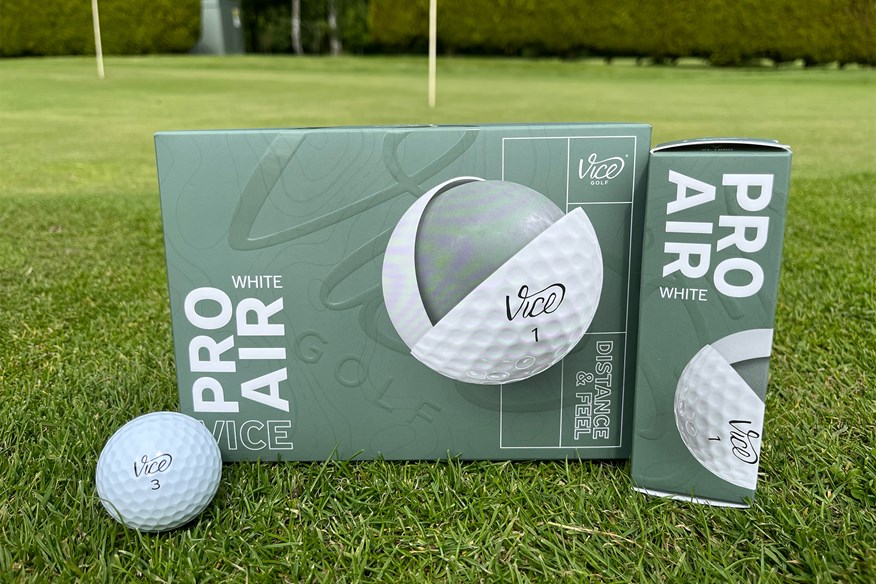

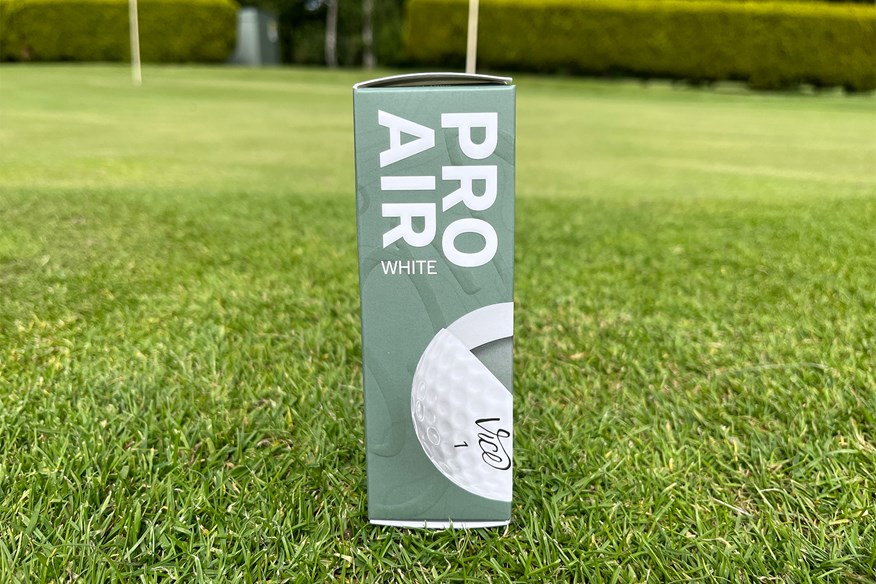
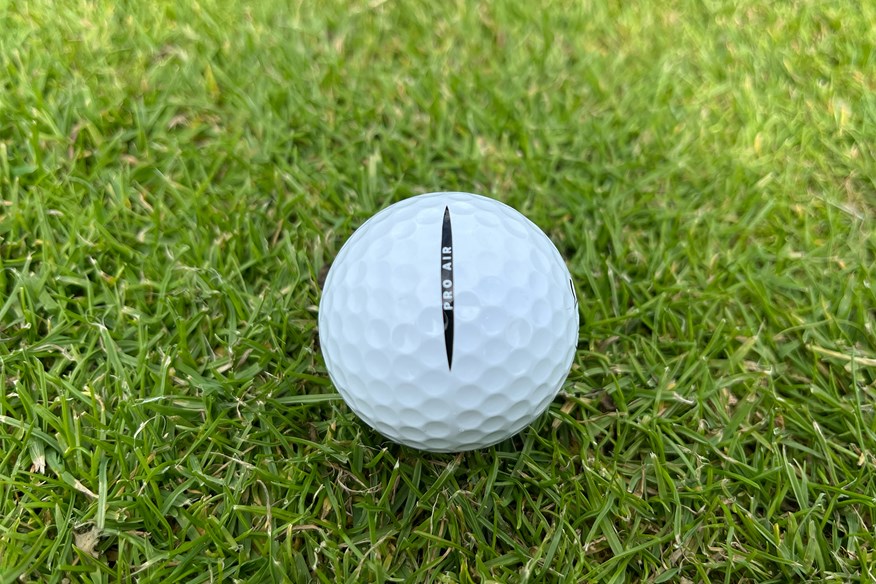
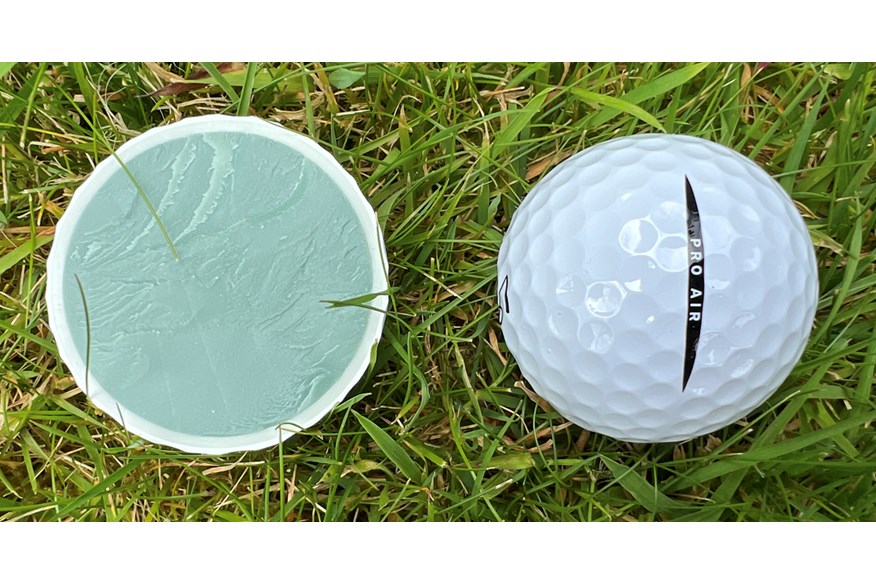
The Pro Air has a compression of 75 (so it’s the softest feeling ball Vice creates) which isn’t too dissimilar to a TaylorMade Tour Response, or Callaway Chrome Soft, although Vice insists the model is a great choice for slower and mid-speed players, it will still deliver for faster players too.
No matter what your speed thanks to being the lowest spin ball in the Vice portfolio this is also the model for maxing out distance, should that be a premium in your own game.
Pros
- Other than low compression balls being bang on trend I'm struggling to find one.
Cons
- It's just too low spin with the irons and wedges
| Construction | 3-Piece |
| Cover | Urethane |
| Cost per ball | $3.33 |
Test data and verdict: Vice Pro Air
| Driver 85mph Swing | Vice Pro Air |
| Ball speed (MPH) / Launch angle (º) | 123 / 13.7 |
| Backspin (RPM) | 2,477 |
| Carry (YDS) | 189.2 |
| Driver 100mph Swing | |
| Ball speed (MPH) / Launch angle (º) | 142.8 / 13.7 |
| Backspin (RPM) | 2,530 |
| Carry (YDS) | 239.3 |
| Driver 115mph Swing | |
| Ball speed (MPH) / Launch angle (º) | 163.8 / 11.6 |
| Backspin (RPM) | 2,082 |
| Carry (YDS) | 275.2 |
| 7-Iron | |
| Ball speed (MPH) / Launch angle (º) | 107.6 / 21.5 |
| Backspin (RPM) | 4,788 (Lowest) |
| Height (YDS) | 31.8 |
| Descent angle (º) | 44.6 |
| Carry (YDS) | 156.5 (T1) |
| Wedge | |
| Backspin (RPM) | 6,614 |
| Shot area (SQ YDS) | 3.1 (T3) |
| Carry (YDS) | 106.4 |
| Average Shot Area | |
| Averaged over driver, 7-iron and PW | 27.8 SQ YDS |
VERDICT: Vice Pro Air
Softer compression golf balls with urethane covers are all the rage right now in the world of golf, but our data shows you have to understand what’s put on the line by buying purely on feel to truly make the best decision for your game and wallet.
Very few golfers would ever want to play a ball that offers up the least amount of iron and wedge spin and pay more for the privilege than going for a 2-piece ball that could have done a better job for less cash. Our data spells out how the Vice Pro Air is just that ball.
The model offered up the least amount of iron and wedge spin of all the 24 balls tested and apart from being joint longest with the iron, thanks to being so low spin, it brings little other than a soft feel to the table.
For $10 per dozen less you could buy the 3-piece Vice Tour instead which ok thanks to its surlyn cover won’t spin or offer up as much control from the greenside. But you could expect an additional 179 rpm of iron and a further 1,312 rpm of wedge spin on approaches, which for many will have a direct impact on scoring in the area you want to be at your most accurate. To my mind, there shouldn’t be a golfer out there who’d favor a softer feel over these economics and shot-making capabilities.
The interesting thing for club golfers then is if you trade the urethane cover for a cheaper material like Ionomer or Surlyn, and reduce the cost from $55 a dozen to $27.99, but keep a 3-piece construction (like a Titleist Pro V1) what’s the impact on performance? Are the results any better than switching to a less expensive 2-piece construction?
Our results below spell out the differences loud and clear. Just remember the Tour isn’t Vice’s least expensive ball as that honor falls to the 2-piece Vice Drive, which will set you back from $14.99 a dozen (if you buy five boxes).
Pros
- Exceptionally good value for money
- Impressive results compared to the biggest brands
- More wedge spin than a Titleist Pro V1
Cons
- Iron spin just dips below the 5K threshold
| Construction | 3-Piece |
| Cover | Surlyn |
| Cost per ball | $2.33 |
Test data and verdict: Vice Tour
| Driver 85mph Swing | Vice Tour |
| Ball speed (MPH) / Launch angle (º) | 123.9 / 13.6 |
| Backspin (RPM) | 2,428 |
| Carry (YDS) | 190.3 |
| Driver 100mph Swing | |
| Ball speed (MPH) / Launch angle (º) | 144.1 / 13.7 |
| Backspin (RPM) | 2,365 |
| Carry (YDS) | 241.1 |
| Driver 115mph Swing | |
| Ball speed (MPH) / Launch angle (º) | 165.5 / 11.5 |
| Backspin (RPM) | 2,072 |
| Carry (YDS) | 278.9 |
| 7-Iron | |
| Ball speed (MPH) / Launch angle (º) | 107.9 / 21.4 |
| Backspin (RPM) | 4,967 |
| Height (YDS) | 31.9 |
| Descent angle (º) | 44.9 |
| Carry (YDS) | 156.3 |
| Wedge | |
| Backspin (RPM) | 7,926 |
| Shot area (SQ YDS) | 3.1 (T3) |
| Carry (YDS) | 104.9 |
| Average Shot Area | |
| Averaged over driver, 7-iron and PW | 29.8 SQ YDS |
VERDICT: Vice Tour
Getting a 3-piece ball to market at this price is a serious achievement as most around this price point come with a 2-piece construction, however unlike most 3-piece balls the Vice Tour comes with a surlyn not urethane cover like the competition. It’s the stiffer cover material though that probably brings an extra degree of performance to this particular 3-piece club golfer ball.
In a sector of the market that’s tough to understand as brands go at it in very different ways I believe Vice has just about nailed the Tour. Where the Srixon Q-Star Tour and Vice Pro Air go for distance through lower spin in the 3-piece club golfer category, the Kirkland Signature offers up tons of wedge and iron spin which costs valuable distance. Where the Vice Tour just about manages to hit the middle ground.
I say that as the Vice Tour at 85 mph and 100 mph with the driver is longer than the Srixon Q-Star Tour, Snell Prime 3.0, Vice Pro Air, Kirkland Signature V3, and Callaway Chrome Soft all of which reside in the 3-piece club golfer category and will set you back more money.
But unlike other balls that are long with the driver, the Vice Tour ranks 5th overall (of the 24 balls tested) for wedge spin which is really impressive considering the surlyn cover. With 7926 rpm of wedge spin incredibly the Vice Tour also out spins the Titleist Pro V1, TaylorMade TP5, and Callaway Chrome Tour, all of which are tour-level golf balls.
If there’s one small fly in the ointment it’s how iron spin drops just below the 5K rpm mark (4967 rpm). But in way of compensation, the Tour was our 4th longest iron ball (missing out on the top spot by just 0.2 yds), it flighted shots higher than our test average with a steeper descent. So, for the price of a budget ball this is a very strong performer.
Wilson Staff
See the standard Staff Model as an alternative to the Titleist Pro V1, and you’ll be thinking exactly along the right lines. The 2024 model has a compression of 95 which is 8.7% softer than the Staff Model X, so expect 100 RPM less driver and 300 RPM less iron spin plus a lower more penetrating ball flight.
Read our full Wilson Staff Model (2024) golf ball review.
Pros
- An impressive alternative to the Titleist Pro V1, Callaway Chrome Tour and TaylorMade TP5
- An accurate and consistent choice
Cons
- The Wilson Staff Model X offers more wedge and iron spin
| Construction | 4-Piece |
| Cover | Urethane |
| Cost per ball | $4.16 |
Test data and verdict: Wilson Staff Model
| Driver 85mph Swing | Wilson Staff Model |
| Ball speed (MPH) / Launch angle (º) | 124.6 / 13.4 (1) |
| Backspin (RPM) | 2,657 |
| Carry (YDS) | 193.6 (1) |
| Driver 100mph Swing | |
| Ball speed (MPH) / Launch angle (º) | 144.8 / 13.6 |
| Backspin (RPM) | 2,585 |
| Carry (YDS) | 244.3 |
| Driver 115mph Swing | |
| Ball speed (MPH) / Launch angle (º) | 167.1 / 11.4 (2) |
| Backspin (RPM) | 2,079 |
| Carry (YDS) | 282 (2) |
| 7-Iron | |
| Ball speed (MPH) / Launch angle (º) | 108.7 / 21.1 (1) |
| Backspin (RPM) | 5,256 |
| Height (YDS) | 32.1 |
| Descent angle (º) | 45.2 |
| Carry (YDS) | 156.4 (3) |
| Wedge | |
| Backspin (RPM) | 7,329 |
| Shot area (SQ YDS) | 3.7 |
| Carry (YDS) | 105.8 |
| Average Shot Area | |
| Averaged over driver, 7-iron and PW | 21.8 SQ YDS |
VERDICT: Wilson Staff Model (2024)
Last year our accuracy results highlighted how Wilson golf balls were super accurate as not only were the tour level Staff Model super tight on dispersion, but the Triad and Duo Soft followed suit in the 3-piece club golfer and 2-piece budget categories too. That trend really hasn’t changed much in 2025, even though the Staff Model and Staff Model X are brand-new models for this year.
Both the Staff Model and Staff Model X posted accuracy numbers inside our test average, yet this time around our consistency data highlights the pair’s credentials with a ranking inside the top four for shot-to-shot reliability (with the Staff Model averaging 2nd and the Staff Model X tied 3rd), which is seriously impressive.
Throw that sort of performance together with being longest at 85 mph, 5th longest at 100mph and 2nd longest at 115mph when hit with the driver, and 3rd longest with the 7-iron and you quickly get the picture that this model is well-equipped to rival the Titleist Pro V1 it was designed to compete with.
To get all that power the Staff Model does give up 338rpm (6%) and 362rpm (4.7%) of backspin with the iron and wedge respectively versus the Titleist Pro V1.
Where last year I went all in with the Staff Model as one of our best-performing tour-level balls of the year I’m slightly less enthusiastic this time around, especially as the price has risen. The new price puts the model right in the territory of a Pro V1, and despite the strong performance, I feel the new Staff Model X (which essentially is the model most like the previous Staff Model) is an even better choice.
Price per ball $4.16 / 2.16c per yard
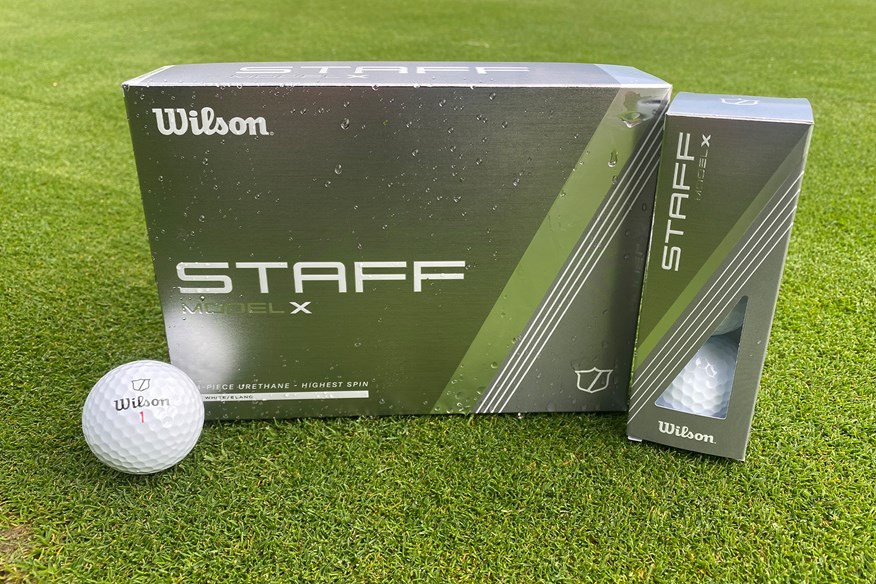

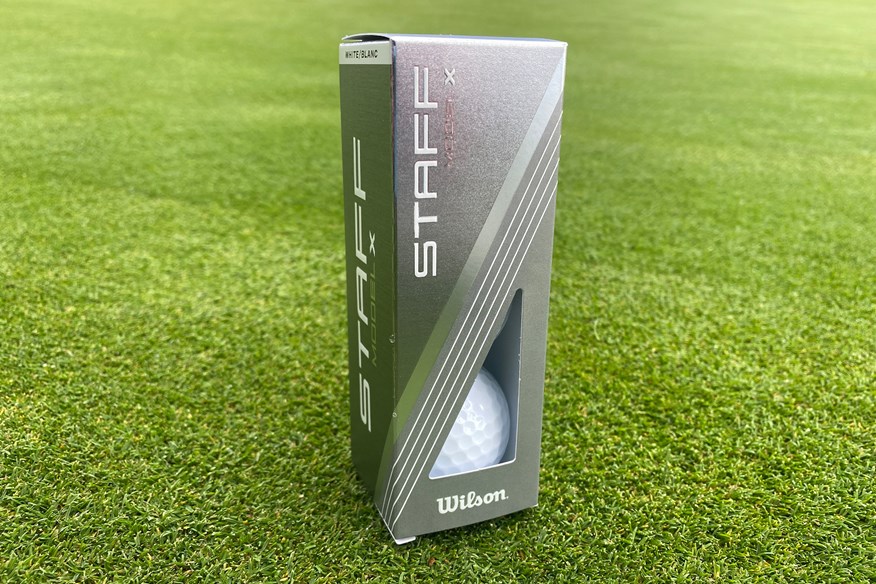
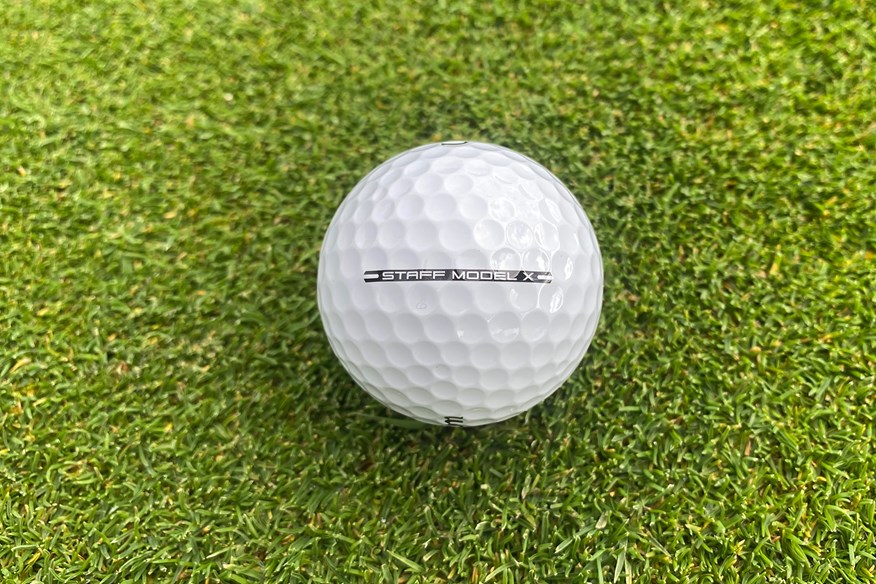
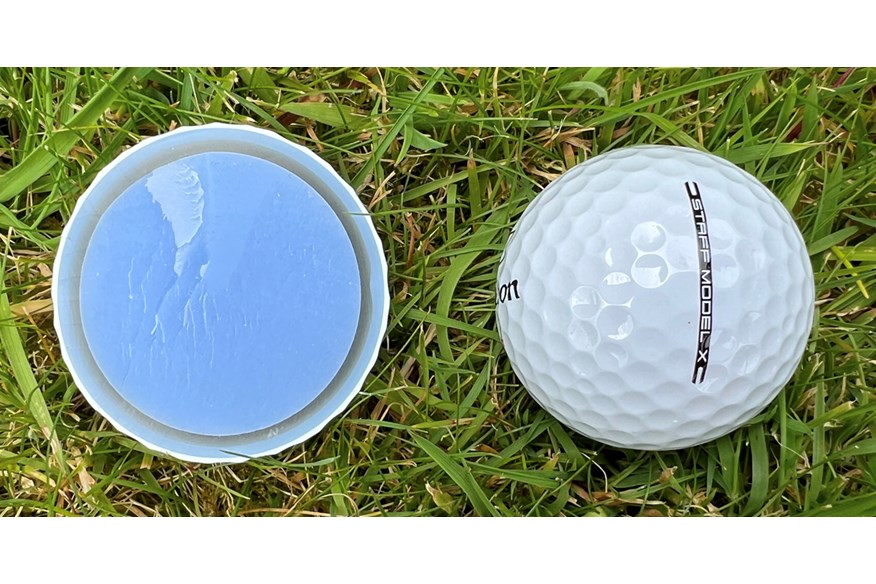
Expect a higher launch and ball flight than the standard Staff Model ball you’ll also get maximum shot shape potential from this offering. See the X as an alternative to the Titleist Pro V1x, TaylorMade TP5x, and Callaway Chrome Tour X and you’ll be thinking along exactly the right lines.
Read our full Wilson Staff Model X (2024) golf ball review.
Pros
- A very fast golf ball option
- Faster and longer than a Titleist Pro V1 and Pro V1x
- An accurate and consistent golf ball choice
Cons
- It's a shame about the price hike for 2024
| Construction | 4-Piece |
| Cover | Urethane |
| Cost per ball | $4.16 |
Test data and verdict: Wilson Staff Model X
| Driver 85mph Swing | Wilson Staff Model X |
| Ball speed (MPH) / Launch angle (º) | 124.5 / 12.8 (2) |
| Backspin (RPM) | 2,722 |
| Carry (YDS) | 191.8 |
| Driver 100mph Swing | |
| Ball speed (MPH) / Launch angle (º) | 145.7 / 13.1 (1) |
| Backspin (RPM) | 2,652 |
| Carry (YDS) | 245.4 (1) |
| Driver 115mph Swing | |
| Ball speed (MPH) / Launch angle (º) | 167.2 / 11.3 (1) |
| Backspin (RPM) | 2,084 |
| Carry (YDS) | 281.7 (3) |
| 7-Iron | |
| Ball speed (MPH) / Launch angle (º) | 108.1 / 20.3 |
| Backspin (RPM) | 6,084 |
| Height (YDS) | 31.3 |
| Descent angle (º) | 45.2 |
| Carry (YDS) | 151.8 |
| Wedge | |
| Backspin (RPM) | 7,982 |
| Shot area (SQ YDS) | 3 (2) |
| Carry (YDS) | 105.4 |
| Average Shot Area | |
| Averaged over driver, 7-iron and PW | 20.1 SQ YDS |
VERDICT: Wilson Staff Model X (2024)
If you’ve blindly played a Titleist Pro V1 or 1x ball for years there couldn’t be a better time to stop and reassess your options as there are some seriously credible alternatives out there that could add an extra dimension to your game. If you’re interested in exploring despite the 2024 price increase the new Staff Model X should definitely be on your ‘to try’ shortlist.
The Staff Model X is a very fast golf ball option. It produced the fastest ball speed at both 100 and 115 mph with the driver and was 2nd only to the standard Staff Model at 85mph. If fast and long are what you desire from a tour-level ball our data supports that only the Callaway Chrome Tour X can play at this sort of level.
If you swing driver at 100mph and play the Pro V1 you could add 5.6 yards of carry distance just by switching to this ball (you could also gain 4.8 yards if you play the firmer Pro V1x). Yet, amazingly a single yard covers off the carry distance difference of all three balls with a 7-iron.
With a wedge, the Titleist Pro 1x just has the upper hand in terms of spin but with just 64rpm separating both models, you really won’t see any distinguishable difference on the golf course. Whereas compared to the standard Staff Model ball the X’s additional 653rpm of wedge spin and 828rpm of iron spin is highly likely to help in terms of hitting and holding shots on the level of the green you’re aiming for, hence why I believe for many this is a better option.
Robot golf ball test: The best performers
The best premium tour balls
Callaway Chrome Tour X
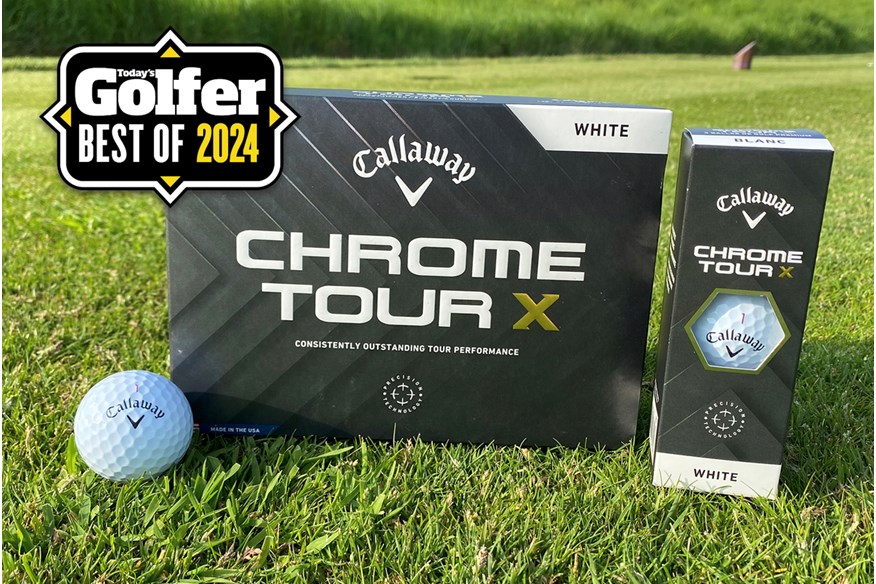
In many instances a first, second, and third-placed ranking for carry distance across our three driver speeds would tell you everything you need to know about the new Chrome Tour X. But this ball is so much more than just a firm, fast, and long-driving model.
The X was either highest or tied highest for shot height across the three driver speeds (and somehow posted a lower-than-average ball flight with the 7-iron). It did so while also producing more iron spin (which means it’s not the longest) and wedge stopping power than any other ball on test. That’s some serious performance across the board, yet it still wasn’t finished there.
Callaway golf balls have taken some stick for manufacturing inconsistencies before, which has led to significant investment in their ball plant. So by posting our third smallest shot area (averaged across five test situations) as well as a minuscule shot area (2 sq yards, the smallest on test) with a wedge, our data is a ringing endorsement that that investment has paid off. This is a seriously impressive tour-level golf ball.
If there is a slight fly in the ointment, it has to be the new 2024 $54.99-a-dozen price tag, which now makes Callaway the most expensive mass-market tour ball out there.
Wilson Staff Model X (2024)
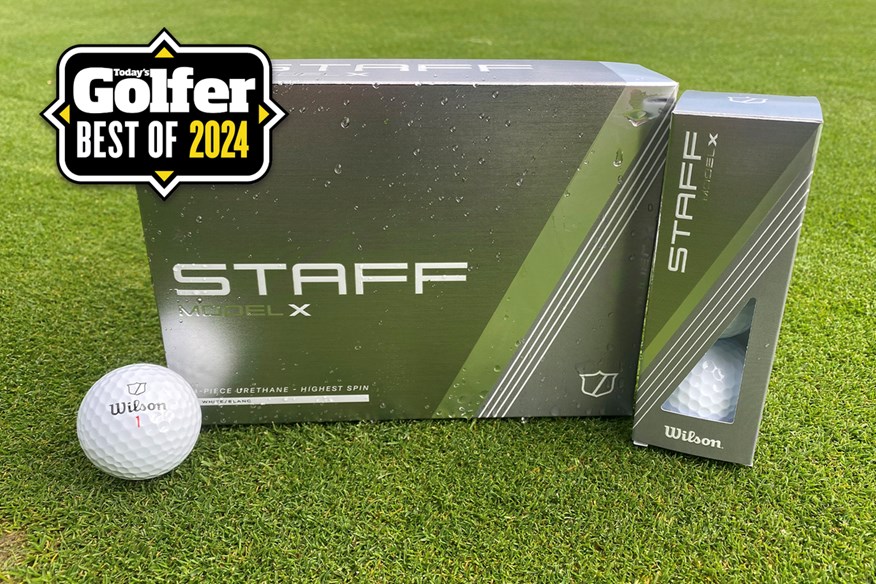
In 2025, there are some very credible alternatives to the Pro V1 and Pro V1x. And despite its price increase, Wilson’s new Staff Model X should definitely be on your shortlist.
This is a very fast golf ball. It produced the fastest ball speed at both 100 and 115mph with a driver and was second only to the standard Staff Model at 85mph. If fast and long are what you require, our data confirms that only the Callaway Chrome Tour X can rival these sort of numbers.
If you swing driver at 100mph and play the Pro V1, you could add 5.6 yards of carry just by switching to this ball (or gain 4.8 yards if you play the firmer Pro V1x). Yet, amazingly, just a single yard covers off the carry distance difference of all three balls with a 7-iron.
With a wedge, the Pro 1x just has the upper hand in terms of spin. But with just 64rpm separating balls, you really won’t see any distinguishable difference on the course.
Compared to the standard Staff Model, the X’s additional 653rpm of wedge spin and 828rpm of iron spin are highly likely to help in terms of hitting and holding shots on the level of the green you’re aiming for, hence why I believe that for many, this is a better option.
TaylorMade TP5x (2024)
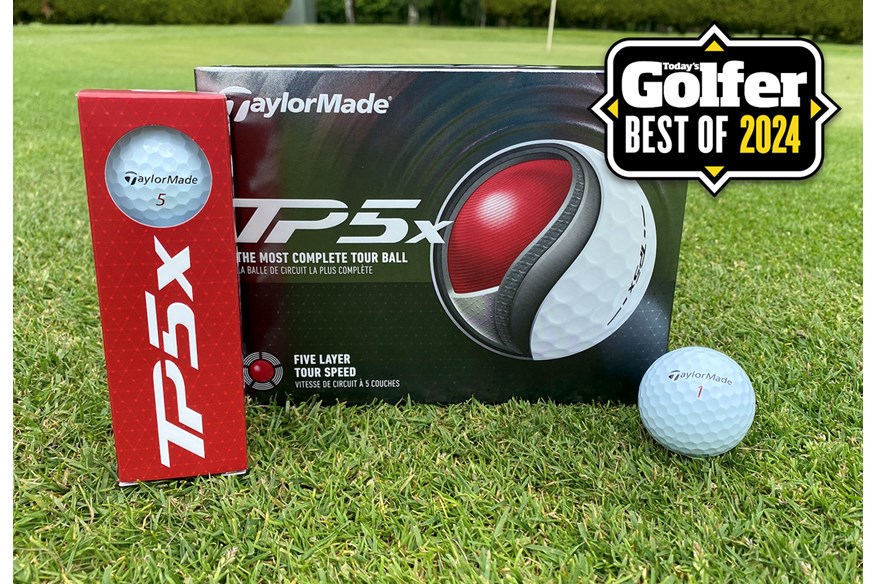
This time last year, I harped on about the brilliance of the Wilson Staff Model ball as not only did it produce excellent launch monitor numbers, it was also the easiest tour-level ball on your wallet. In 2024 the situation has changed somewhat as Wilson have upped the price of their new Staff Model ball , whereas TaylorMade have dropped theirs. It’s a masterstroke that means the TP5x now becomes a seriously good value-for-money option.
If cutting driver spin is your goal, the TP5x was our lowest-spin premium tour ball. The X also tied third for producing the fastest ball speed in both the 100mph and 115mph driver categories, so it’s no slouch when it comes to speed and power, even though it didn’t quite feature among the three longest balls in any category.
TaylorMade’s tour balls are famed for being longer than the competition in the long irons, and we saw 2.2 yards of extra carry over the Pro V1 with a 7-iron, a number TaylorMade would only expect to increase moving into the 5- and 4-iron.
An average shot area just 0.8 yards wider than our third-placed ball (and 8.2 sq yards tighter then the TP5) reinforces the TP5x performance for accuracy, consistency and reliability.
If I was spending my own money in 2025 on premium tour balls, the choice would come down to the TP5x or the Callaway Chrome Tour X. Whereas on paper the Callaway is fractionally longer with the driver and higher spinning with 7-iron and wedge, the TP5x is a little less pricey. Both can do an excellent job for you.
Titleist Pro V1x
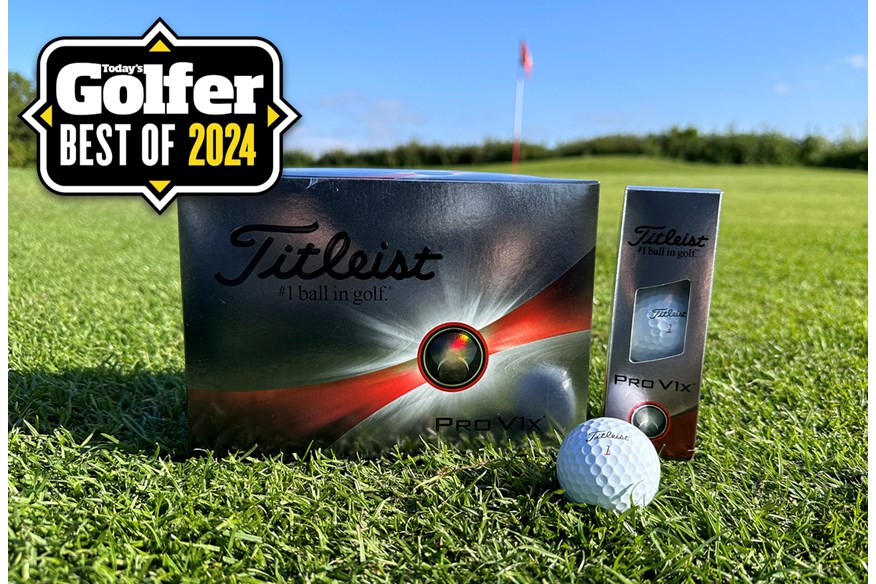
In all the robot ball testing we’ve ever done, the Pro V1x has come out as a more favourable choice than the Pro V1. Unless you put a hefty premium on a softer feel or lower ball flight, it’s really hard to ignore that the X is generally faster, longer, and higher-spinning with the irons and wedges (not from the greenside), so it’s hard to argue that it’s not a better choice across the bag on a spreadsheet.
If you like the feeling of firmer X-style balls then you really should pay attention to how the Pro V1x compares to the Callaway Chrome Tour X and TaylorMade TP5x. Compared to Callaway’s Tour X, the Pro V1x was 4.87 yards shorter when averaged over our 100 and 115 mph driver speeds. It also produced less iron spin (358rpm) and missed out to the Chrome Tour X on maxing out wedge spin (34 rpm).
With an average shot area of 25.4 sq yards, as you’d expect, the Pro V1x was well within our test average for accuracy, but the Callaway was an average 19.2sq yards (24.4%) tighter.
The TP5 comes in quite a bit cheaper than the Pro V1x, and our data has the TP5x out-gunning the Pro V1x at 100 and 115mph driver swing speeds, while it’s also 3.2 yards longer with a 7-iron. The Pro V1x is higher spinning with the iron (367rpm) and wedge (440rpm), where the TP5x flies higher and has a steeper descent angle. So you’re essentially seeing similar results, but shots reach their destination in slightly different ways.
The best Direct to Consumer tour balls
Vice Pro Plus
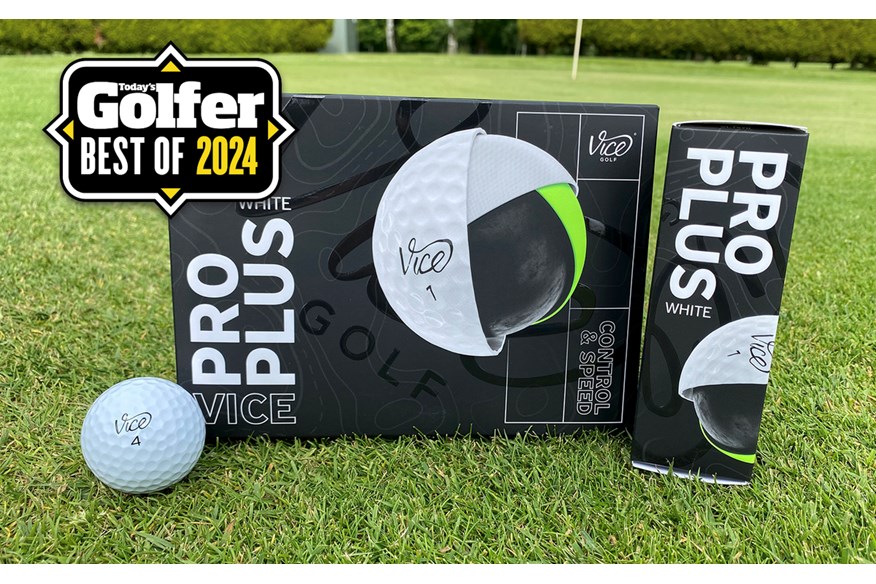
There’s a good reason why Titleist have been at the top of the ball business for decades: they know a thing or two about making incredibly impressive golf balls. The company are very protective over their dominance within the golf ball category, so it must hurt that a few factories in the Far East churn out urethane golf balls (for multiple companies) that can now compete with models they’ve spent decades perfecting.
To be fair to Titleist, there isn’t a better four-piece golf ball than the Pro V1x to be had from any direct-to-consumer brand. But if you’re looking for a ball to rival it without having to pay the premium price, the Vice Pro Plus is it.
When averaged over our fastest two driver speeds, the Vice Pro Plus outguns the Pro V1x by 2.3 yards, which when added to the additional 3.9 yards with a 7-iron, means you could realistically expect to hit a half-club less into greens. But where spin took a nosedive with the Seed SD-02, the Vice Pro Plus preserved slightly more stopping power with the 7-iron (3.7%) and wedge (1.2%), and that will be of real benefit to decent players.
I wouldn’t be doing our job if we didn’t also mention how the Pro Plus compares against the Callaway Chrome Tour X, which our data highlights as being the best four-piece X-style ball out there. In return for the lower DTC price (the Pro Plus is $15-22 cheaper per dozen than the Callaway Chrome Tour X, depending on whether you buy in bulk), you get 2.6 yards less driver distance (averaged over our two fastest speeds), 4.4 yards more 7-iron distance, but 814rpm less iron spin and 822rpm less wedge spin. As a result, the pair would be noticeably different out on the course.
Seed SD-01
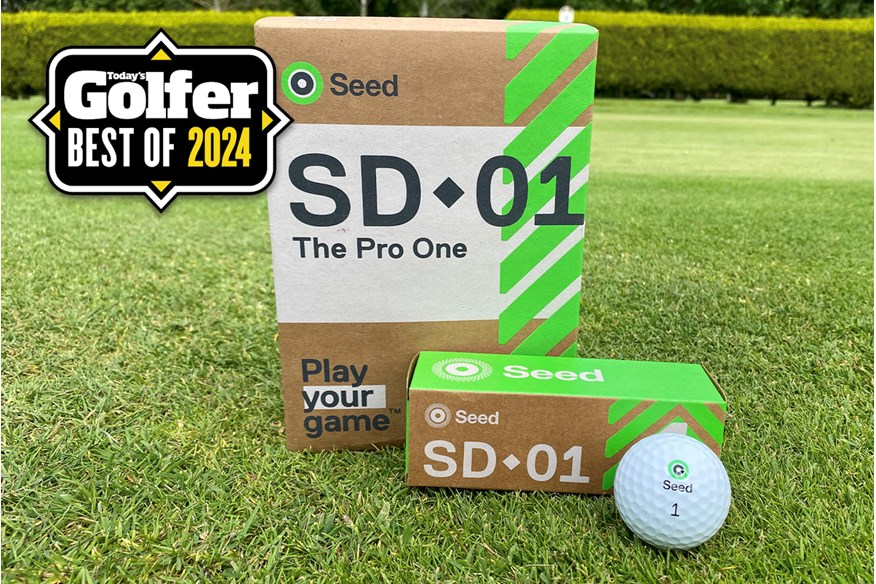
The goal of the SD-01 was always to compete against the Titleist Pro V1 on performance and beat it on price, and our data illustrates that it does a great job of delivering on each of those key objectives.
Across the board the SD-01 was longer than the Pro V1 in all five test situations, albeit with minuscule margins, which in anyone’s book has to be a great start against the market leader. With a 7-iron the Seed was faster (1mph) and longer (3.8 yards, the biggest difference from any situation) while giving up just 5% backspin (280rpm), which should in no way be a deal breaker. In wedge play the SD-01 spun 5.4% (416rpm) less than the Pro V1, but we’re talking levels that will have a negligible impact out on the course. And the SD-01 story doesn’t quite finish there.
By tracking shot area for accuracy and drop-offs for consistency, we can see the SD-01 is also an impressively consistent ball. Averaged across all five test situations, it produced our smallest shot area, 15.5 sq yards, which is 12.7 sq yards tighter than the test average and 2.1 sq yards smaller than the second-placed Pro V1.
Some might argue that we just happened to test five dozen Seed SD-01 balls which were particularly well made, hence the small dispersion figures, but that’s where our consistency data becomes really useful in backing up reliability and predictability from shot to shot out on the course.
Incredibly, the SD-01 produced the smallest amount of carry distance drop-off of any of the balls tested. It also ranked 11th for ball speed variation and seventh for backspin difference, giving an average consistency ranking of fifth from a field of 24.
All in, that’s a really impressive overall performance. If you decide to buy in, just make sure you buy on Seed’s keenest terms to get the best possible price.
The best club golfer balls
Vice Tour
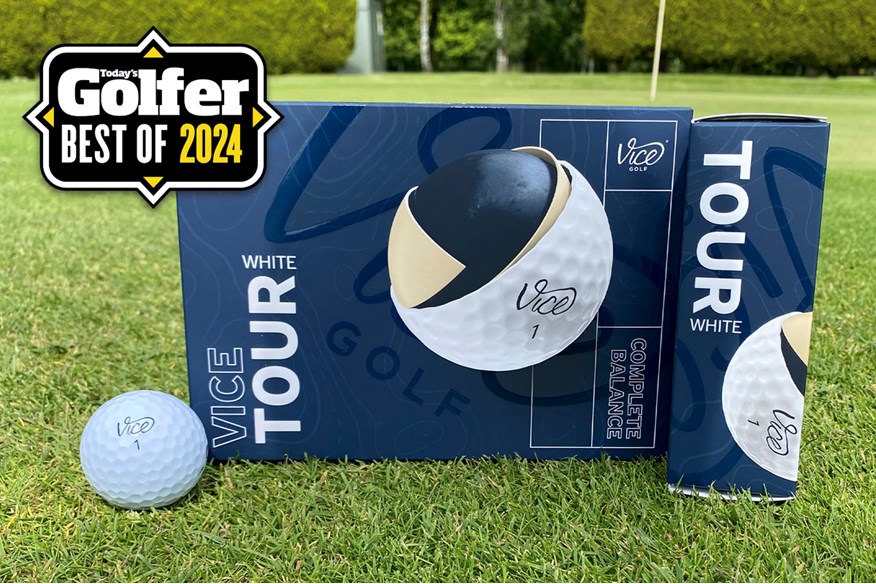
Getting a three-piece ball to market at this price is a serious achievement as most balls around this price point have a two-piece construction.
However, unlike most three-piece balls, the Vice Tour comes with a less expensive Surlyn cover rather than the urethane of most competitors. That stiffer cover probably brings an extra degree of performance to this particular three-piece club golfer ball.
Vice have just about nailed the Tour. Where the Srixon Q-Star Tour and Vice Pro Air go for distance through lower spin in the three-piece club golfer category, and the Kirkland offers up tons of wedge and iron spin at the expensive of distance, the Vice Tour aims for the middle ground.
We say that because at 85mph and 100mph with the driver, it’s longer than the Q-Star Tour, the Pro Air, Snell Prime 3.0, Kirkland Signature and Callaway Chrome Soft, all of which reside in the three-piece club golfer category and will set you back more money.
But unlike other balls that are long with the driver, the Vice Tour ranks fifth out of 24 overall for wedge spin, which is really impressive considering the cover material. With 7,926rpm of wedge spin, the Vice Tour also – incredibly – outspins the Titleist Pro V1, TaylorMade TP5, and Callaway Chrome Tour, all of which are tour-level balls.
If there’s one small fly in the ointment, it’s how iron spin drops just below the 5k rpm mark (4,967rpm). But by way of compensation, the Tour was our fourth longest iron ball (beaten to the top spot by just 0.2 yards), and it flighted shots higher than our test average with a steeper descent. For the price of a budget ball, this is a very strong performer.
Kirkland Signature V3
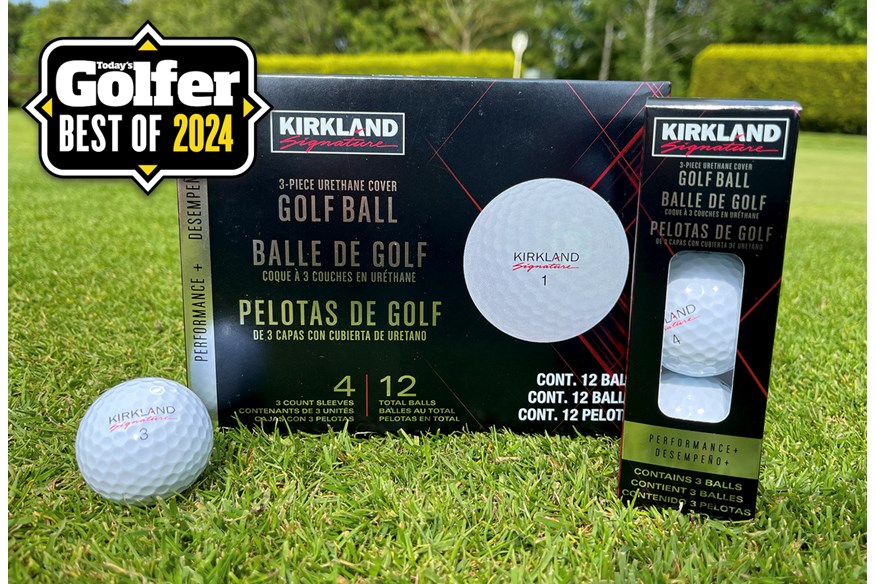
Kirkland has really upset the urethane ball applecart since entering the market in 2016, though their simple single-ball approach has also caused some serious confusion. With many YouTubers and influencers referring to the Kirkland as a ‘Pro V1 killer’, many golfers believe this model is a direct alternative to the Titleist, but our data shows that isn’t really the case.
I completely understand why golfers have flocked to this bargain ball. It’s the cheapest golf ball in this entire test, which is amazing considering it comes with a urethane cover. Golfers love being able to spin and stop approaches with wedges and irons, and more so than with any other ball in the test, they can do exactly that with the Kirkland.
But as a ball that ranked second best for iron and third best for wedge spin, you have to accept it is not set up for optimal distance; a point reinforced when you see it was also our highest- spin driver ball, averaging over 100 mph and 115 mph speeds.
Compared to the Pro V1, our data shows the V3 giving up an average of 2.2 yards across three driver speeds to the market leader. That extends to 4.3 yards with the 7-iron, which for many will mean needing half a club extra for approaches.
That said, by generating so much stopping power, it outspins the Pro V1 by 515 rpm with an iron and 352 rpm with a wedge, so you’ll never have an issue nestling shots down on the greens with a longer iron.
I’m not saying you shouldn’t buy this ball as it’s too high spin. We understand many golfers love its high spin traits. But you do have to understand where this ball’s strengths and weaknesses lie, as few of us like leaving distance on the table.
If you don’t mind the trade and your game benefits from the ball’s high-spin traits, our accuracy and consistency data suggest it won’t let you down. And it will save you a bundle of money in the process.
The best budget golf balls
Snell Prime 2.0
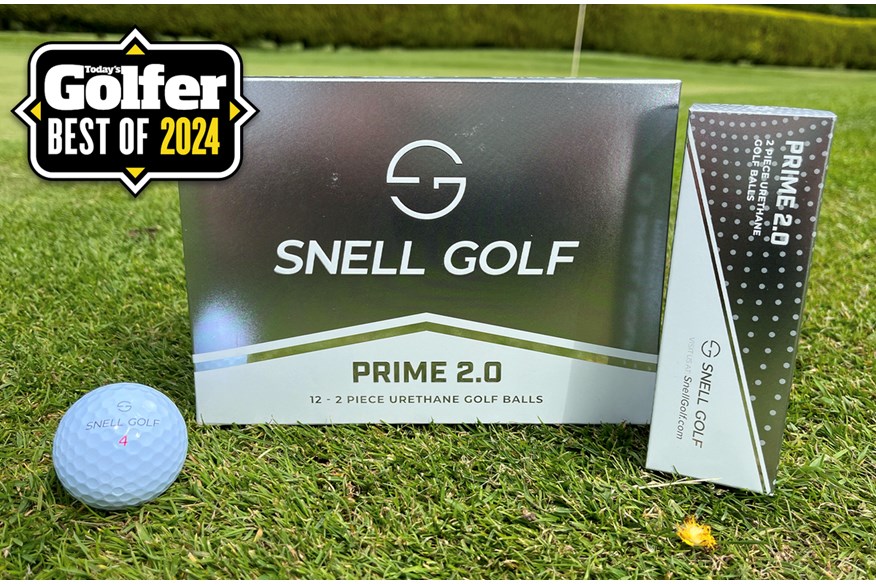
There isn’t a ball in this test we were more excited to see the results from than the Prime 2.0 – it’s virtually unheard of to put a urethane cover on a two-piece ball and sell it for $24.99 a dozen. The idea is genius, setting a competitive price in an area of the market where masses of golfers shop, then delivering the short game zip and control that golfers would typically expect from a much more premium ball.
Averaged over the 85mph and 100mph driver speeds, the 2.0’s 212.2 yards was the joint longest carrying ball (tied with the Srixon Distance) in the two-piece ball category. OK, with the 7-iron it dropped 2.7 yards against the longest (TaylorMade Speedsoft), but crucially it produced more iron spin than any other two-piece ball and was only bettered by 19rpm for wedge spin by the Srixon Distance. Both are really attractive traits to club golfers.
In my mind the Prime 2.0 is well worth considering outside the two-piece ball market, too. Up against the lower compression urethane club golfer balls that are so popular today, the Snell’s premium cover and keen price point bring together so many of the qualities golfers look for in one great package.
Our data has the model giving up between 0.7 and 3.5 yards of driver carry (averaged over the 85mph and 100mph speeds) and no more than 5.1 yards with the 7-iron against the likes of the Srixon Q-Star Tour and Callaway Chrome Soft. But unlike those balls, the 2.0 doesn’t drop iron and wedge spin.
In fact, bar the high-spin but shorter Kirkland Signature V3, the 2.0 produced more iron spin than any urethane club golfer ball in this test. It pulled off a similar feat with the wedge, outspinning four of the six balls in the club golfer category, all of which are significantly more expensive.If value for money and the ability to score well come higher up your list of golf ball priorities than squeezing out every last yard you possibly can, then the Prime 2.0 is a fantastic choice. With this construction offering just 133rpm less iron and 74rpm less wedge spin than a Pro V1, it can surely only be a matter of time before other brands start introducing urethane covers to their own two-piece golf balls.
Srixon Distance
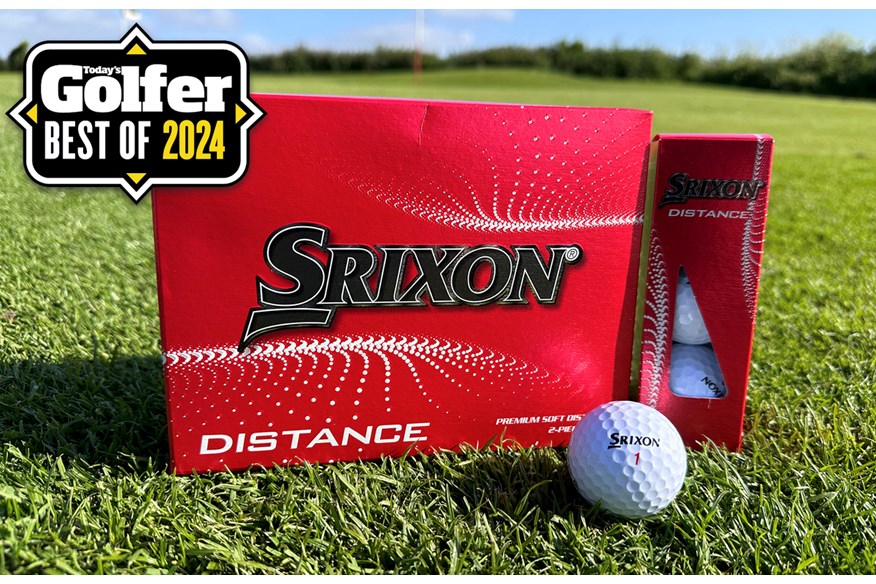
At just 0.09p a yard (averaged over three driver swing speeds) the Srixon Distance is the third cheapest golf ball within this test. It’s not too difficult, then, to understand why this model is so popular with regular club golfers who just don’t want to buy a more costly premium ball.
In the four-model, two-piece category, the Distance ranked longest at 85mph, second at 100 mph, second at 115mph and second longest with the 7-iron. So, if distance and budget are important to you, the Srixon Distance really is a very solid choice.
Interestingly, all that power doesn’t come at the expense of spin with the irons and wedges, as it does with some of the three-piece club golfer balls. By registering backspin of 5,306rpm and 7,636rpm with a 7-iron and wedge (second for each in the two-piece category), this ball doesn’t drop to dangerously low levels of backspin just to help golfers hit shots further.
To put things into perspective, against the much more expensive Titleist Pro V1, the Srixon Distance spun 288 rpm less with the 7-iron and 55 rpm less with the wedge. Many golfers will consider that a fair trade-off when they can buy 24 Srixon Distance for the price of 12 Pro V1s… and still have some cash left over for a couple of beers after the round.
The key numbers compared:
Driver Distance and Shot Area (averaged over three driver speeds)
Average Distance: 236.2 yards
Average Shot Area: 38.9 sq yards
Whether you’re Rory or Roy, we all want to play the longest, most accurate golf ball. But make sure you don’t just look at that data exclusively; it’s important to factor in iron and wedge performance to properly optimize a ball across all areas of your game. Interestingly, our shot area grew from 19.7 sq yards at 85 mph, to 34.7 sq yards at 100 mph, and 62.3 sq yards at 115 mph, which really highlights the impact speed has on accuracy and tolerances.
Don’t instantly write off balls with a bigger shot area; some are specifically designed to be easier to shape, whereas lower spin balls often claim to improve accuracy by cutting spin. Our data highlights Seed, Titleist, and Callaway among the top performers for accuracy. Our test averages of 236.2 yards and shot area of 38.9 sq yards give a great indication of which balls are punching above their weight in the data chart below.
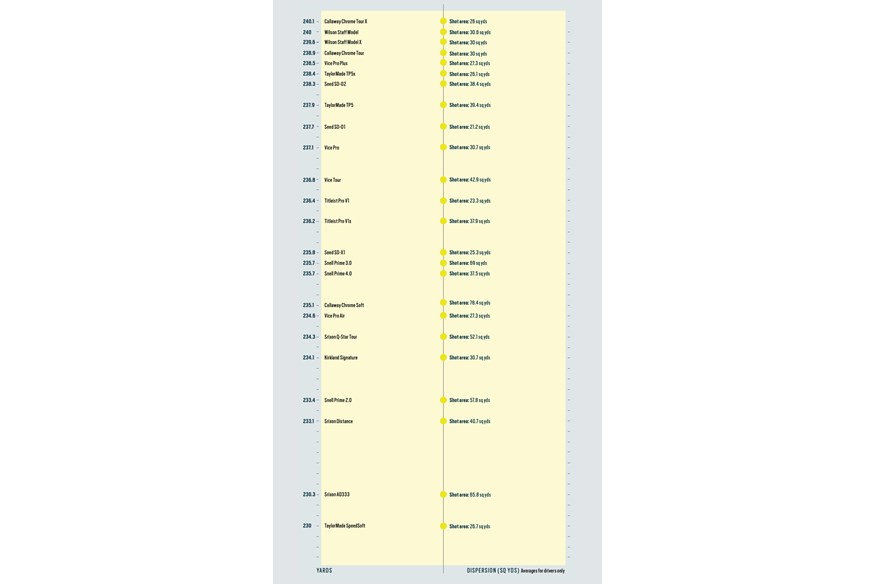
7-Iron Backspin
It’s no surprise that the balls which spin the least with a 7-iron have gone the furthest. Predominantly. it’s the balls aimed at club golfers that are very low-spin with irons, which isn’t ideal as you need approach shots to drop and stop quickly on the green; so choose wisely in the club golfer category. The highest spin balls cost you distance (unless distance isn’t a concern for you) whereas the lower spin balls cost you stopping power and control.
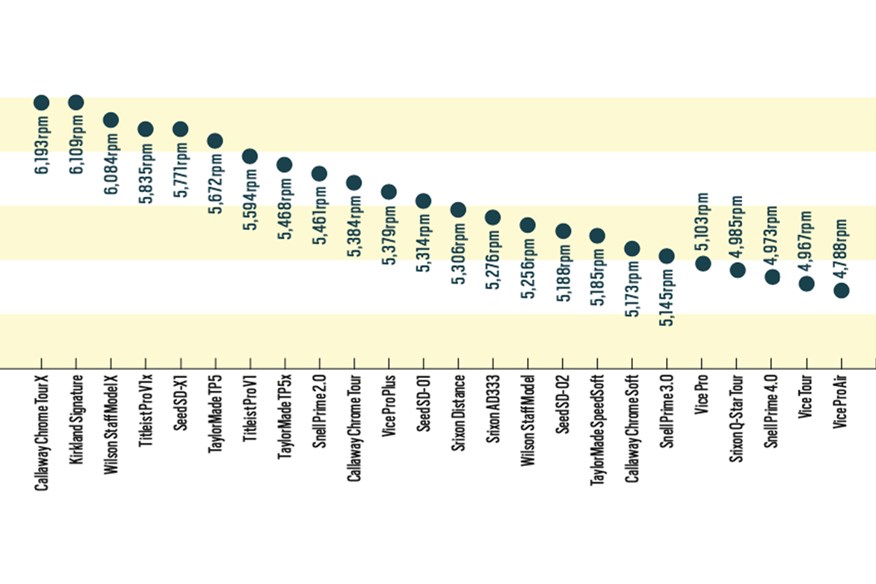
Golf ball constructions compared
With two-, three-, four-, and five-piece balls available, the debate over the best construction method is not going away. Here’s a breakdown across driver (averaged over all three speeds), iron, and wedge. If you’re anything like me, your eyes will be drawn to the difference between 2-piece and 3-piece club golfer balls, as the extra iron and wedge spin of 2-piece models will be really useful to many golfers, and they’re less expensive.
| 2-PIECE | 3-PIECE CLUB GOLFER | 3-PIECE TOUR | 4-PIECE TOUR | 5-PIECE TOUR | |
| Driver | Driver | Driver | Driver | Driver | |
| Ball Speed | 142.8 mph | 143.6 mph | 144.4 mph | 145.1 mph | 145 mph |
| Launch Angle | 12.7° | 12.8° | 12.6° | 12.6° | 12.7° |
| Backspin | 2,300 rpm | 2,400 rpm | 2,422 rpm | 2,453 rpm | 2,427 rpm |
| Height | 47.5 yds | 48.5 yds | 48.9 yds | 49.4 yds | 49.3 yds |
| Descent Angle | 30.2° | 31.2° | 31.2° | 31.6° | 31.6° |
| Carry | 231.7 yds | 235.1 yds | 236.8 yds | 238 yds | 238.1 yds |
| Shot Area | 47.7 sq yds | 52.2 sq yds | 25.1 sq yds | 32.8 sq yds | 32.8 sq yds |
| 7-Iron | 7-Iron | 7-Iron | 7-Iron | 7-Iron | |
| Ball Speed | 106.9 mph | 107.3 mph | 107.7 mph | 107.9 mph | 107.9 mph |
| Launch Angle | 21° | 21° | 20.8° | 20.7° | 20.7° |
| Backspin | 5,461 rpm | 5,195 rpm | 5,446 rpm | 5,537 rpm | 5,570 rpm |
| Height | 31.2 yds | 31.5 yds | 31.5 yds | 31.5 yds | 31.5 yds |
| Descent Angle | 44.6° | 44.6° | 44.8° | 44.9° | 44.9° |
| Carry | 152.9 yds | 154.1 yds | 153.6 yds | 153.7 yds | 153.6 yds |
| Shot Area | 29.5 sq yds | 16.6 sq yds | 10.5 sq yds | 14.1 sq yds | 15 sq yds |
| Wedge | Wedge | Wedge | Wedge | Wedge | |
| Ball Speed | 84 mph | 84.3 mph | 84.6 mph | 84.7 mph | 84.9 mph |
| Launch Angle | 28.9° | 29.2° | 29° | 28.9° | 29° |
| Backspin | 7,496 rpm | 7,230 rpm | 7,454 rpm | 7,505 rpm | 7,612 rpm |
| Height | 20.3 yds | 20.5 yds | 20.6 yds | 20.6 yds | 20.6 yds |
| Descent Angle | 47.7° | 48.1° | 48° | 48° | 48.2° |
| Carry | 104.3 yds | 105.4 yds | 105.5 yds | 105.5 yds | 105.7 yds |
| Shot Area | 10 sq yds | 4.8 sq yds | 5.9 sq yds | 5.1 sq yds | 7.1 sq yds |
Wedge Spin
We would never recommend buying a golf ball based purely on wedge spin performance, yet we’ve heard lots of golfers over the years who say they do. With 1,466 rpm between our highest and lowest spinning models, it’s worth knowing where your prospective purchase sits in relation to the competition. Just remember – this IS NOT greenside spin, which is where a urethane cover ball grabs and grips a wedge’s grooves for the shortest, most delicate shots around the green.
Interestingly a number of 2-piece balls have spun more than 3-piece models.
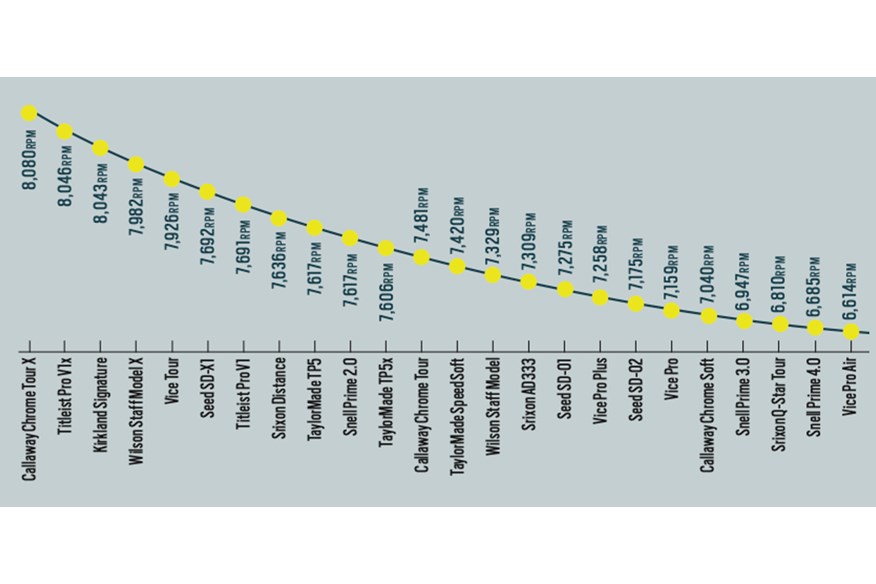
Cost per yard
Golfers often buy golf balls based on what they can afford, which isn’t the worst decision as long as you commit to playing one ball and don’t keep switching. Based on the average amount of yards racked up at our three driver speeds, this is a cost per yard for all 24 balls tested.
Balls that grabbed our attention include the Kirkland Signature V3, the cheapest ball tested (and the cheapest urethane ball on test), and the surlyn cover Vice Tour. Interestingly both the cheapest balls had 3-piece constructions rather than the perceived lower-value 2-piece models.
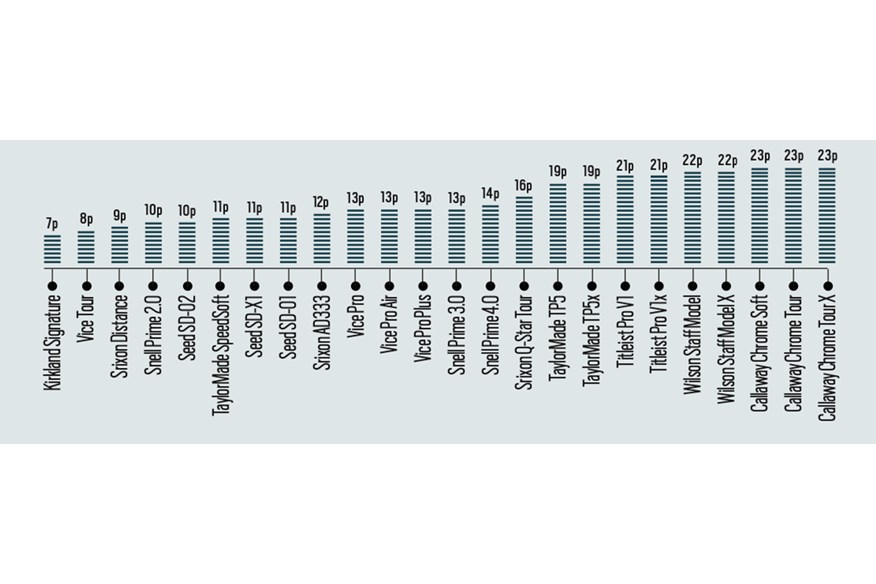
Lowest/Highest Driver Spin
We’d never recommend just buying the lowest spin driver ball you can get your hands on, as lower spin with the driver typically means low spin through the bag. That’s far from ideal for most golfers when hitting iron approach shots into greens, especially if you use strong lofted irons or swing at a moderate pace.
However, it is no secret low-spin balls add distance where higher-spin models rob you of it. If you’re looking to identify the lowest-spinning driver ball in any category, the chart below shows backspin averaged over our 100 mph and 115 mph driver speeds, as it tends to be higher-speed players who want lower-spinning golf balls.
Unsurprisingly, 2-piece balls that target distance (through low spin) for average golfers rise to the top as brands know at this end of the market people buy predominantly on distance. My advice is not to just look at driver spin and distance. Factor in iron and wedge performance, as very often a middle-of-the-road performer might well be a better option. Sometimes you might need to accept slightly higher or lower driver spin to help in areas of your game you put more emphasis on.
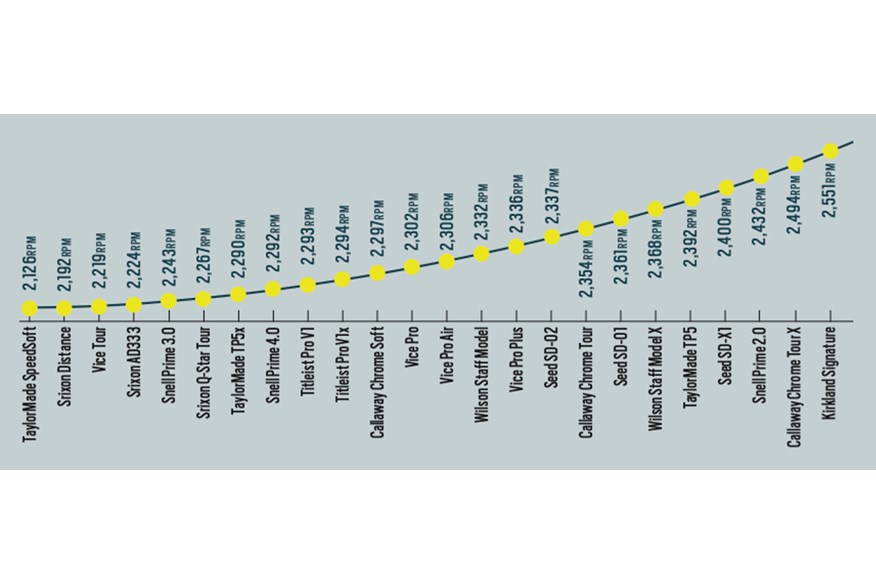
The most consistent golf ball
Consistency is a measure of how tightly the results of each variable are grouped together and should not be confused with the actual measures of ball speed, backspin, and carry distance reported above. As we hit 12 shots with each ball from each situation we were able to look at the amount of variation that occurred across each 12-shot set. By focusing on the differences in ball speed, backspin, and carry distance we can see which balls will offer up the most consistent shot-to-shot results.
We found the Vice Pro to be the most consistent ball overall, ranking first for ball speed consistency, fourth for backspin consistency, and third for carry distance consistency, providing an average rank of 2.7. Conversely, the Srixon AD333 produced the least tightly grouped set of results for all three metrics, hence finishing as our least consistent golf ball on test. Once again, this does not mean the AD333 was the slowest, lowest spinning, and shortest ball, we just found the 12-shot set to be the most variable.
Our hosts at Loughborough University believe this is a fairer way to look at accuracy than just considering shot area. Consistency scores are not something we would recommend basing your buying decision on alone, but if you are between two balls that you feel suit your requirements, perhaps these results may help steer your thinking.
| Ball Speed Consistency Rank | Backspin Consistency Rank | Carry Distance Consistency Rank | Average Rank | |
| Vice Pro | 1 | 4 | 3 | 2.7 |
| Wilson Staff Model | 3 | 3 | 4 | 3.3 |
| Vice Pro Plus | 10 | 1 | 2 | 4.3 |
| Wilson Staff Model X | 2 | 6 | 5 | 4.3 |
| Seed SD-01 | 11 | 7 | 1 | 6.3 |
| Callaway Chrome Tour | 9 | 5 | 7 | 7.0 |
| Vice Pro Air | 5 | 8 | 9 | 7.3 |
| Titleist Pro V1x | 4 | 11 | 8 | 7.7 |
| Snell Prime 2.0 | 19 | 2 | 11 | 10.7 |
| Vice Tour | 6 | 17 | 12 | 11.7 |
| Srixon Q-Star Tour | 15 | 9 | 13 | 12.3 |
| Seed SD-X1 | 12 | 20 | 6 | 12.7 |
| Callaway Chrome Tour X | 8 | 16 | 16 | 13.3 |
| Titleist Pro V1 | 18 | 10 | 14 | 14 |
| TaylorMade TP5 | 7 | 19 | 18 | 14.7 |
| Kirkland Signature V3 | 16 | 12 | 17 | 15 |
| Snell Prime 4.0 | 13 | 13 | 19 | 15 |
| TaylorMade TP5x | 17 | 18 | 10 | 15 |
| Seed SD-02 | 20 | 15 | 15 | 16.7 |
| Callaway Chrome Soft | 14 | 21 | 21 | 18.7 |
| Snell Prime 3.0 | 22 | 14 | 20 | 18.7 |
| TaylorMade SpeedSoft | 21 | 23 | 22 | 22 |
| Srixon Distance | 23 | 22 | 23 | 22.7 |
| Srixon AD333 | 24 | 24 | 24 | 24 |
Most accurate golf ball
Averaged over three driver speeds, 7-iron, and pitching wedge
| Ball | Shot Area (SQ YDS) |
| Seed SD 01 | 15.5 (1) |
| Titleist Pro V1 | 17.6 (2) |
| Callaway Chrome Tour X | 19.2 (3) |
| Seed SD X1 | 19.3 |
| Vice Pro Plus | 19.4 |
| TaylorMade TP5x | 20 |
| Wilson Staff Model X | 20.1 |
| Vice Pro | 21 |
| Wilson Staff Model | 21.8 |
| Kirkland Signature V3 | 22.7 |
| Callaway Chrome Tour | 24.4 |
| Titleist Pro V1x | 25.4 |
| TaylorMade SpeedSoft | 25.5 |
| Snell Prime 4.0 | 26.2 |
| Vice Pro Air | 27.8 |
| TaylorMade TP5 | 28.2 |
| Vice Tour | 29.8 |
| Srixon Q-Star Tour | 33.3 |
| Srixon Distance | 34.5 |
| Snell Prime 2.0 | 38.8 |
| Seed SD 02 | 39.8 |
| Srixon AD333 | 47.3 |
| Snell Prime 3.0 | 48.7 |
| Callaway Chrome Soft | 51.4 |
| AVERAGE | 28.2 |
What did we learn from this test?
There’s a new 2-piece ball on the block
We’ve included 2-piece golf balls in every robot test session we’ve ever run, partly because we want to showcase how they compare to more expensive balls but also because if there’s a difference between models in this category we want you to know about it. This time around however the new 2-piece Snell Prime 2.0 offers up a choice we’ve never seen in the market before.
By combining a cracking $24.99 a dozen price point with a urethane cover this particular ball offers up something completely new. We’ve championed club golfer balls like the TaylorMade Tour Response ($42.99 per dozen), Callaway ERC Soft ($39.99 per dozen), and Srixon Q-Star Tour ($39.99 per dozen) before but even though it may be a fraction shorter, the new Snell Prime 2.0 will happily punch above its weight in terms of iron/wedge spin, price point and additional control from the greenside.
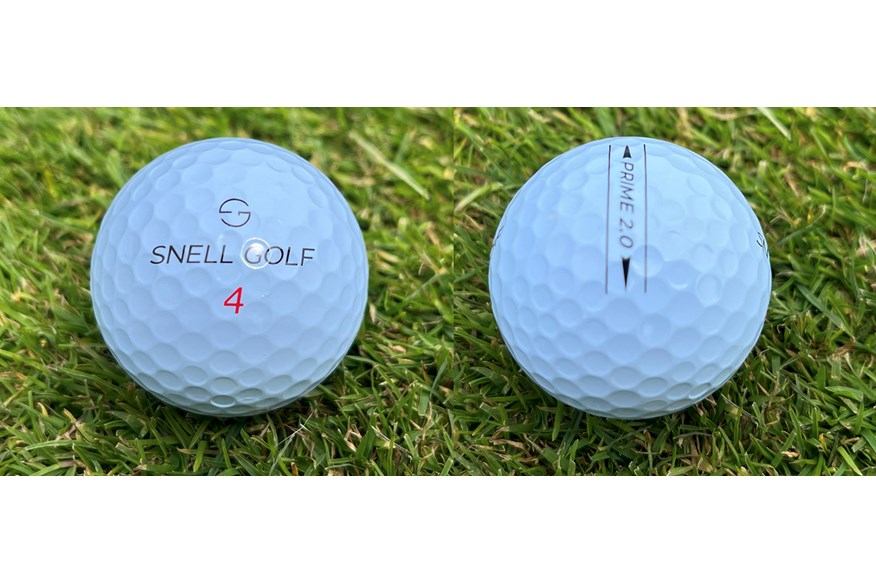
If you’ve already been sold on the benefits of urethane club golfer balls the Vice Prime 2.0 could well be a fantastic alternative, one that if you buy 6 dozen a season could save you over $120 a year versus the Callaway ERC Soft, a ball that will also produce you less iron and wedge spin. My bet is other brands will already be working on their own version of a 2-piece urethane cover ball for 2025.
Don’t compare this data to last year
Thanks to the costs involved in renting a robot and a test engineer it’s just not possible to test every single ball on the market. With time at a premium, there didn’t seem too much point in retesting the balls that have carried over into 2024 especially as we already had results for them.
The temptation will be to see how this year’s balls compare to the models they replaced from 2023, but I would seriously urge you not to make that comparison.
As much as we wanted the Titleist Pro V1 and Pro V1x (the only balls to be retested) to be our control and benchmark balls, so we could replicate their launch and flight characteristics, our data in 2024 has been run through Ping’s data capture software rather than the Foresight set-up we used in 2023. Obviously, that means slight differences in numbers between each system which makes the two tests standalone features that shouldn’t be mixed.
Low spin and long, or high spin and short?
This year more so than ever as the club golfer golf ball market matures there are some distinct choices to make within the category, almost like choosing between the softer feel of a Pro V1x or the faster, higher spin Pro V1x in the tour level category.
I can’t say that either direction is wrong but from my experience, I believe a lot of club golfers, especially those round and about an average speed of 92/93mph with the driver, won’t feel the benefits of going super low spin to chase distance at the expense of stopping power. Realistically that’s not an equation that’s likely to equal scoring lower more often.
Likewise, as much as golfers love to see approach shots zipping back across a green in reality a ball that lands, hops and stops will be a much more predictable and consistent option for scoring.
Unless your game specifically needs low spin distance or extreme levels of stopping power I’d urge restraint for anyone buying within the club golfer category. A ball like the Vice Tour that gives up very little at either end of the bag is actually a really strong option this year.
Go X or go home
Time and again our robot tests highlight the difference between regular tour and firmer X style golf balls, and every time I’m left scratching my head as to why golfers choose anything other than an X style ball. Many golfers like a softer feel, but my gut tells me if shop assistants told you by playing the X you’d give up nothing in terms of distance but gain iron and wedge-stopping power very few golfers would ever choose the softer model.
If you play a softer tour-level ball I’d urge you to try a firmer model and ask yourself if you can sense the difference. If you can and feel there’s a benefit to going softer then fair play to you. If not our data spells out firmer X style balls are highly likely to give your game an extra degree of score-ability.
Urethane doesn’t guarantee you most wedge spin
We’ve seen it before with balls like the Srixon AD333 and Pinnacle Rush (in last years test) models that don’t have a urethane cover can still spin with the best of them. This time around the Vice Tour and Srixon Distance are incredibly good spinners with a wedge too.
So, to say you have to have a urethane cover to get maximum control with a wedge is utterly untrue. However, you should be left in no doubt at all there will be a difference between how urethane and cheaper surlyn or ionomer covers spin in the short game. When you’re close to the greens surface and only able to use a partial swing soft urethane will bite into the grooves of a wedge to a greater degree, which can only improve control.
Like, but not better
Direct-to-consumer brands love using the “like a Pro V1” label within their marketing materials, but as of yet no one has been brave enough to commit to saying “better than a Pro V1’. Our test results highlight while there are some good alternatives out there to the Pro V1 and Pro V1x from DTC brands there’s always a little compromise somewhere along the line. That isn’t the case with the Callaway Chrome Tour X and Wilson Staff Model X, as it could genuinely be argued based on our test results these are better choices than the Pro V1x.
Of course, it’s entirely down to you as to how much emphasis you put on cost, but based on data no DTC ball in my opinion can say it beats the Pro V1 or Pro V1x.
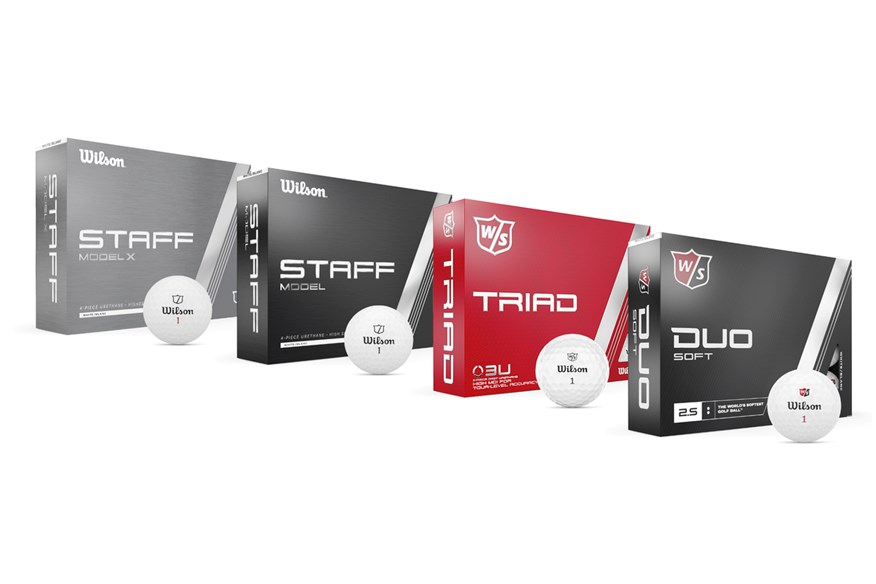
Wilson makes consistent golf balls
It was a real surprise last year when Wilson golf balls bossed our shot area charts, of course, this year we’ve tested new versions of the Staff Model and Staff Model X but once again the brand has come up smelling of roses in both our accuracy and consistency metrics.
The Staff Model and Staff Model X produced a shot area 22.7% and 28.7% tighter than the test average and incredibly ranked 2nd and 4th out of 24 for consistency which is an incredibly strong performance. If you hit bad shots with a Wilson you really can’t blame the ball.
Commit, commit, commit
We’re all guilty from time to time of finding a golf ball and just playing it, but I can’t stress enough the importance of buying into a ball and committing to using it for the season. This test shows some wild differences between models which will have an impact on performance on the golf course. Just imagine in the space of a single hole going from playing the highest spin golf ball to the lowest, that would mean 1,405 rpm of iron and 1,466 rpm of wedge spin variation which would make the game incredibly hard to predict.
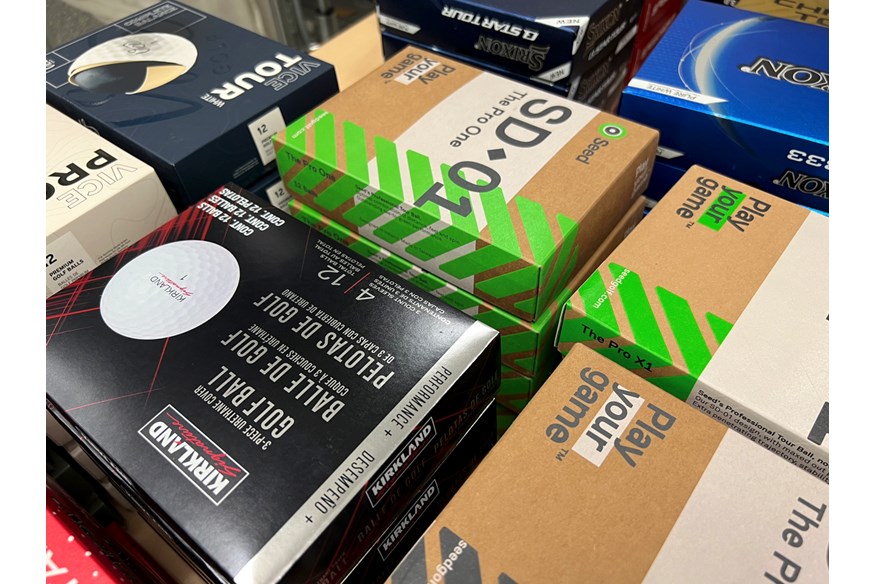
Buy in bulk
As hard as it may be, if you’re ever to see the benefit of playing DTC golf balls you have to commit to either buying in bulk or signing up to a subscription scheme (where they’ll send you balls on a regular basis). If you don’t DTC balls aren’t really going to save you any money over their premium rivals.
I completely appreciate for many committing $164.95 to buying five dozen Vice Pro Plus golf balls will be a daunting experience, but one dozen will set you back $39.99 plus postage. At that price, the model is in the ballpark of the TaylorMade TP5 and TP5x, which is a battle only TaylorMade can win.
85 MPH Driver
| Ball Speed (MPH) | Launch Angle (DEG) | Backspin (RPM) | Height (YDS) | Descent Angle (DEG) | Carry Distance (YDS) | Shot Area (SQ YDS) | |
| Wilson Staff Model | 124.6 (1) | 13.4 | 2657 | 39 | 29.4 | 193.6 (1) | 21 |
| Vice Pro Plus | 124.2 (T3) | 13.3 | 2670 | 38.7 | 29.1 | 192.4 (2) | 15.9 |
| Callaway Chrome Tour X | 124.2 (T3) | 13 | 2838 (Highest) | 39 | 29.6 | 192.1 (3) | 15.4 |
| Wilson Staff Model X | 124.5 (2) | 12.8 | 2722 | 38.7 | 28.6 | 191.8 | 17.9 |
| Seed SD 02 | 124.2 (T3) | 13.3 | 2615 | 38.5 | 28.7 | 191.8 | 10.8 (3) |
| Seed SD 01 | 123.9 | 13.5 | 2583 | 38.4 | 28.9 | 191.7 | 9.2 (1) |
| Titleist Pro V1 | 123.8 | 13.5 | 2513 | 38 | 28.4 | 191.2 | 13.6 |
| TaylorMade TP5 | 123.9 | 13.3 | 2637 | 38.4 | 28.7 | 191.1 | 14.3 |
| TaylorMade TP5x | 124.1 | 13.3 | 2565 | 38.2 | 28.3 | 190.9 | 17.8 |
| Callaway Chrome Tour | 123.9 | 13.2 | 2633 | 38.3 | 28.6 | 190.8 | 10 (2) |
| Vice Tour | 123.9 | 13.6 | 2428 | 37.8 | 28.1 | 190.3 | 19.4 |
| Titleist Pro V1x | 123.5 | 13.3 | 2646 | 38.2 | 28.5 | 190 | 15.5 |
| Vice Pro | 123.4 | 13.3 | 2548 | 37.8 | 28.2 | 189.4 | 22.4 |
| Snell Prime 3.0 | 123.2 | 13.2 | 2644 | 37.9 | 28.5 | 189.2 | 36.6 (Largest) |
| Vice Pro Air | 123 | 13.7 | 2477 | 37.6 | 28.3 | 189.2 | 30.8 |
| Srixon Q-Star Tour | 123.4 | 13.6 | 2442 | 37.6 | 28 | 189 | 26.6 |
| Callaway Chrome Soft | 123.3 | 13.2 | 2623 | 37.9 | 28.3 | 189 | 29.3 |
| Seed SD X1 | 123.3 | 12.9 | 2707 | 38 | 28.3 | 188.9 | 16.7 |
| Srixon Distance | 123.1 | 13.6 | 2352 | 37.1 | 27.5 | 187.6 | 29.1 |
| Snell Prime 4.0 | 122.9 | 13.3 | 2476 | 37.2 | 27.6 | 187.4 | 30.1 |
| Snell Prime 2.0 | 122.3 | 13.2 | 2671 | 37.4 | 28.3 | 186.9 | 12 |
| Kirkland Signature V3 | 122.3 | 12.9 | 2822 | 37.7 | 28.8 | 186.9 | 12.6 |
| TaylorMade SpeedSoft | 123 | 13.6 | 2236 (Lowest) | 36.5 | 26.7 | 185.7 | 14.8 |
| Srixon AD333 | 122.7 | 13.2 | 2398 | 36.6 | 26.8 | 185 | 30.9 |
| AVERAGE | 123.5 | 13.3 | 2579 | 37.9 | 28.3 | 189.7 | 19.7 |
100 MPH Driver
| Ball Speed (MPH) | Launch Angle (DEG) | Backspin (RPM) | Height (YDS) | Descent Angle (DEG) | Carry Distance (YDS) | Shot Area (SQ YDS) | |
| Wilson Staff Model X | 145.7 (1) | 13.1 | 2652 | 51.3 | 34.5 | 245.4 (1) | 33.3 |
| Callaway Chrome Tour X | 145.4 (2) | 13 | 2832 (Highest) | 51.7 | 35.6 | 245.1 (2) | 31.3 |
| Callaway Chrome Tour | 145.1 (T3) | 13.6 | 2567 | 50.9 | 34.6 | 244.8 (3) | 41.3 |
| TaylorMade TP5 | 144.9 | 13.3 | 2703 | 51.1 | 35.1 | 244.3 | 17.9 (1) |
| Wilson Staff Model | 144.8 | 13.6 | 2585 | 50.8 | 34.6 | 244.3 | 20.3 |
| TaylorMade TP5x | 145.1 (T3) | 13.5 | 2506 | 50.6 | 34 | 244 | 27.4 |
| Vice Pro Plus | 144.3 | 13.5 | 2608 | 50.5 | 34.4 | 242.8 | 30.7 |
| Seed SD 02 | 144.3 | 13.6 | 2536 | 50.3 | 34.1 | 242.7 | 44.1 |
| Vice Pro | 144.3 | 13.6 | 2501 | 50.3 | 33.9 | 242.5 | 29.7 |
| Seed SD 01 | 143.8 | 13.6 | 2597 | 50.3 | 34.4 | 241.9 | 24.4 |
| Snell Prime 4.0 | 144 | 13.7 | 2473 | 50 | 33.8 | 241.8 | 18.9 (3) |
| Seed SD X1 | 144.1 | 13.1 | 2675 | 50.5 | 34.1 | 241.7 | 18.1 (2) |
| Vice Tour | 144.1 | 13.7 | 2365 | 49.6 | 33 | 241.1 | 56.9 |
| Titleist Pro V1x | 145.1 (T3) | 12.4 | 2539 | 50 | 32.1 | 240.6 | 23.7 |
| Snell Prime 3.0 | 143.4 | 13.8 | 2462 | 49.6 | 33.7 | 240.4 | 59.2 |
| Callaway Chrome Soft | 143.7 | 13.3 | 2514 | 49.8 | 33.4 | 240.3 | 31 |
| Titleist Pro V1 | 144.8 | 12.4 | 2519 | 49.8 | 31.9 | 239.8 | 26.7 |
| Vice Pro Air | 142.8 | 13.7 | 2530 | 49.5 | 34 | 239.3 | 29.8 |
| Kirkland Signature V3 | 142.7 | 13.2 | 2806 | 50 | 34.9 | 238.9 | 34.6 |
| Srixon Q-Star Tour | 142.9 | 13.6 | 2457 | 49.2 | 33.3 | 238.7 | 60.3 |
| Snell Prime 2.0 | 141.9 | 13.5 | 2638 | 49.3 | 34.2 | 237.5 | 30.8 |
| Srixon Distance | 143.7 | 12.7 | 2383 | 48.8 | 31.3 | 236.8 | 28.5 |
| Srixon AD333 | 142.6 | 13 | 2400 | 48.3 | 31.6 | 235 | 81.3 (Largest) |
| TaylorMade SpeedSoft | 142.1 | 13.6 | 2267 (Lowest) | 47.9 | 31.6 | 234.8 | 31.9 |
| AVERAGE | 144 | 13.3 | 2546 | 50 | 33.7 | 241 | 34.7 |
115 MPH Driver
| Ball Speed (MPH) | Launch Angle (DEG) | Backspin (RPM) | Height (YDS) | Descent Angle (DEG) | Carry Distance (YDS) | Shot Area (SQ YDS) | |
| Callaway Chrome Tour X | 166.6 | 11.6 | 2155 | 59.7 (Highest) | 32.8 | 283.2 (1) | 31.2 (3) |
| Wilson Staff Model | 167.1 (2) | 11.4 | 2079 | 59.3 | 31.9 | 282 (2) | 50.5 |
| Wilson Staff Model X | 167.2 (1) | 11.3 | 2084 | 59.3 | 31.7 | 281.7 (3) | 38.6 |
| Callaway Chrome Tour | 166.5 | 11.3 | 2140 | 59.2 | 31.9 | 281 | 54.2 |
| Seed SD 02 | 165.8 | 11.4 | 2137 | 59 | 32.1 | 280.4 | 60.3 |
| Vice Pro Plus | 166.3 | 11.5 | 2064 | 58.8 | 31.7 | 280.3 | 35.4 |
| TaylorMade TP5x | 167 (3) | 11.1 | 2073 | 59 | 31.2 | 280.2 | 33.1 |
| Vice Pro | 165.8 | 11.4 | 2103 | 58.7 | 31.8 | 279.5 | 40 |
| Seed SD 01 | 165.4 | 11.5 | 2125 | 58.8 | 32.1 | 279.5 | 30 (2) |
| Vice Tour | 165.5 | 11.5 | 2072 | 58.4 | 31.8 | 278.9 | 52.4 |
| TaylorMade TP5 | 164.8 | 11.7 | 2080 | 58.3 | 32.1 | 278.3 | 86 |
| Titleist Pro V1 | 165.9 | 11.2 | 2066 | 58.3 | 31.1 | 278.1 | 29.5 (1) |
| Titleist Pro V1x | 166.7 | 11.1 | 2048 | 58.3 | 30.1 | 277.9 | 74.6 |
| Snell Prime 4.0 | 165.3 | 11.3 | 2111 | 58.3 | 31.4 | 277.8 | 63.4 |
| Snell Prime 3.0 | 165.4 | 11.5 | 2024 | 58.1 | 31.3 | 277.5 | 111.3 |
| Seed SD X1 | 164.7 | 11.3 | 2124 | 58.1 | 31.5 | 277 | 41.1 |
| Kirkland Signature V3 | 164.8 | 10.5 | 2296 (Highest) | 58.6 | 31.3 | 276.6 | 45.1 |
| Callaway Chrome Soft | 163.9 | 11.8 | 2079 | 57.7 | 31.9 | 276 | 174.8 (Largest) |
| Snell Prime 2.0 | 163.5 | 11.3 | 2226 | 58 | 32 | 275.7 | 130.5 |
| Vice Pro Air | 163.6 | 11.6 | 2082 | 57.5 | 31.6 | 275.2 | 60.3 |
| Srixon Q-Star Tour | 163.6 | 11.7 | 2077 | 57.5 | 31.6 | 275.1 | 69.4 |
| Srixon Distance | 164.7 | 11.4 | 2000 | 57.3 | 30.7 | 274.8 | 64.5 |
| Srixon AD333 | 162.7 | 11.4 | 2047 | 56.5 | 30.6 | 270.9 | 85.1 |
| TaylorMade SpeedSoft | 161.7 | 11.7 | 1984 (Lowest) | 55.8 | 30.5 | 269.1 | 33.3 |
| AVERAGE | 165.2 | 11.4 | 2095 | 58.3 | 31.5 | 277.8 | 62.3 |
7-Iron
| Ball Speed (MPH) | Launch Angle (DEG) | Backspin (RPM) | Height (YDS) | Descent Angle (DEG) | Carry Distance (YDS) | Shot Area (SQ YDS) | |
| Srixon Q-Star Tour | 108.1 | 21.3 | 4985 | 32 | 44.8 | 156.5 (T1) | 7.2 (1) |
| Vice Pro Air | 107.6 | 21.5 | 4788 (Lowest) | 31.8 | 44.6 | 156.5 (T1) | 15.1 |
| Wilson Staff Model | 108.7 (1) | 21.1 | 5256 | 32.1 | 45.2 | 156.4 (3) | 13.3 |
| Vice Tour | 107.9 | 21.4 | 4967 | 31.9 | 44.9 | 156.3 | 17.2 |
| Seed SD 01 | 108.5 (2) | 21 | 5314 | 31.9 | 45.1 | 155.8 | 9.5 |
| Seed SD 02 | 108.2 (T3) | 21.1 | 5188 | 31.9 | 45 | 155.8 | 37.1 |
| Vice Pro | 107.7 | 21.1 | 5103 | 31.7 | 44.7 | 155.2 | 8.4 |
| Vice Pro Plus | 108.2 (T3) | 21 | 5379 | 31.7 | 45.1 | 154.9 | 9.9 |
| Snell Prime 4.0 | 107.2 | 21.1 | 4973 | 31.6 | 44.3 | 154.8 | 10.5 |
| TaylorMade TP5x | 108 | 20.7 | 5468 | 31.6 | 44.8 | 154.2 | 13.4 |
| Callaway Chrome Soft | 107.2 | 21.2 | 5173 | 31.4 | 44.7 | 154.1 | 18.5 |
| TaylorMade SpeedSoft | 107.2 | 21.2 | 5185 | 31.5 | 44.7 | 154.1 | 41.4 (Largest) |
| Callaway Chrome Tour | 107.7 | 20.8 | 5384 | 31.5 | 44.7 | 154 | 10 |
| Snell Prime 3.0 | 106.9 | 21 | 5145 | 31.3 | 44.4 | 153.5 | 24.6 |
| Srixon Distance | 107 | 21 | 5306 | 31.3 | 44.6 | 153.1 | 38.7 |
| Srixon AD333 | 106.9 | 21.1 | 5276 | 31.3 | 44.7 | 153.1 | 29 |
| TaylorMade TP5 | 107.7 | 20.7 | 5672 | 31.4 | 45 | 152.9 | 16.6 |
| Titleist Pro V1 | 107.5 | 20.7 | 5594 | 31.2 | 44.8 | 152 | 8.2 (3) |
| Wilson Staff Model X | 108.1 | 20.3 | 6084 | 31.3 | 45.2 | 151.8 | 7.8 (2) |
| Snell Prime 2.0 | 106.5 | 20.7 | 5461 | 31 | 44.4 | 151.4 | 8.7 |
| Seed SD X1 | 107.1 | 20.4 | 5771 | 31.1 | 44.7 | 151.3 | 15.8 |
| Titleist Pro V1x | 107.1 | 20.4 | 5835 | 31 | 44.7 | 151 | 8.3 |
| Callaway Chrome Tour X | 107.6 | 20.1 | 6193 (Highest) | 31 | 44.9 | 150.5 | 16.2 |
| Kirkland Signature V3 | 106 | 19.7 | 6109 | 30.4 | 43.9 | 147.8 | 17.2 |
| AVERAGE | 107.5 | 20.9 | 5400 | 31.4 | 44.7 | 153.6 | 16.8 |
Pitching Wedge
| Ball Speed (MPH) | Launch Angle (DEG) | Backspin (RPM) | Descent Angle (DEG) | Carry Distance (YDS) | L – R Dispersion (YDS) | Shot Area (SQ YDS) | |
| Callaway Chrome Tour X | 84.8 | 28.1 | 8080 (1) | 47.5 | 104.9 | 1.3 | 2 (1) |
| Titleist Pro V1x | 84.3 | 27.9 | 8046 (2) | 47.2 | 104.3 | 2 | 4.7 |
| Kirkland Signature V3 | 83.8 | 27.7 | 8043 (3) | 46.8 | 103.4 | 1.8 | 4.1 |
| Wilson Staff Model X | 85.1 | 28.5 | 7982 | 47.9 | 105.4 | 1.9 | 3 (T2) |
| Vice Tour | 84.7 | 28.4 | 7926 | 47.7 | 104.9 | 1.6 | 3.1 |
| Seed SD X1 | 84.6 | 28.7 | 7692 | 47.8 | 105.2 | 1.6 | 4.6 |
| Titleist Pro V1 | 84 | 28.7 | 7691 | 47.6 | 104 | 2.6 | 10.1 |
| Srixon Distance | 83.6 | 28.7 | 7636 | 47.5 | 103.6 | 3.9 | 11.7 |
| TaylorMade TP5 | 84.9 | 29 | 7617 | 48.3 | 105.7 | 1.8 | 6 |
| Snell Prime 2.0 | 84 | 28.3 | 7617 | 47.3 | 104.3 | 2.6 | 12 (Largest) |
| TaylorMade TP5x | 84.9 | 28.9 | 7606 | 48.1 | 105.7 | 3 | 8.1 |
| Callaway Chrome Tour | 84.9 | 28.8 | 7481 | 47.9 | 106 | 1.8 | 6.4 |
| TaylorMade Speedsoft | 84.2 | 29.2 | 7420 | 48.1 | 104.8 | 1.9 | 6 |
| Wilson Staff Model | 84.8 | 29.4 | 7329 | 48.4 | 105.8 | 1.7 | 3.7 |
| Srixon AD333 | 84 | 29.3 | 7309 | 48 | 104.5 | 2.8 | 10.5 |
| Seed SD 01 | 85 | 29.4 | 7275 | 48.5 | 106.3 | 2.1 | 4.2 |
| Vice Pro Plus | 84.7 | 29.4 | 7258 | 48.3 | 105.8 | 2.2 | 5 |
| Seed SD 02 | 84.8 | 29.5 | 7175 | 48.4 | 106.1 | 3.9 | 8.2 |
| Vice Pro | 84.7 | 29.3 | 7159 | 48.3 | 106.1 | 2.6 | 4.7 |
| Callaway Chrome Soft | 84.6 | 29.6 | 7040 | 48.4 | 106.1 | 1.9 | 3.5 |
| Snell Prime 3.0 | 83.9 | 29.4 | 6947 | 48 | 105.1 | 3 | 11.7 |
| Srixon Q-Star Tour | 84.7 | 30 | 6810 | 48.7 | 106.5 | 1.1 | 3 (T2) |
| Snell Prime 4.0 | 84.1 | 29.8 | 6685 | 48.3 | 105.9 | 2.4 | 7.9 |
| Vice Pro Air | 84 | 30.2 | 6614 | 48.7 | 106.4 | 1.6 | 3.1 |
| AVERAGE | 84.5 | 29 | 7435 | 48 | 105.3 | 2.2 | 6.1 |
Most consistent golf ball
| Ball Speed Rank | Backspin Rank | Carry Distance Rank | Average Rank | |
| Vice Pro | 1 | 4 | 3 | 2.7 |
| Wilson Staff Model | 3 | 3 | 4 | 3.3 |
| Vice Pro Plus | 10 | 1 | 2 | 4.3 |
| Wilson Staff Model X | 2 | 6 | 5 | 4.3 |
| Seed SD 01 | 11 | 7 | 1 | 6.3 |
| Callaway Chrome Tour | 9 | 5 | 7 | 7 |
| Vice Pro Air | 5 | 8 | 9 | 7.3 |
| Titleist Pro V1x | 4 | 11 | 8 | 7.7 |
| Snell Prime 2.0 | 19 | 2 | 11 | 10.7 |
| Vice Tour | 6 | 17 | 12 | 11.7 |
| Srixon Q-Star Tour | 15 | 9 | 13 | 12.3 |
| Seed SD X1 | 12 | 20 | 6 | 12.7 |
| Callaway Chrome Tour X | 8 | 16 | 16 | 13.3 |
| Titleist Pro V1 | 18 | 10 | 14 | 14 |
| TaylorMade TP5 | 7 | 19 | 18 | 14.7 |
| Kirkland Signature V3 | 16 | 12 | 17 | 15 |
| Snell Prime 4.0 | 13 | 13 | 19 | 15 |
| TaylorMade TP5x | 17 | 18 | 10 | 15 |
| Seed SD 02 | 20 | 15 | 15 | 16.7 |
| Callaway Chrome Soft | 14 | 21 | 21 | 18.7 |
| Snell Prime 3.0 | 22 | 14 | 20 | 18.7 |
| TaylorMade SpeedSoft | 21 | 23 | 22 | 22 |
| Srixon Distance | 23 | 22 | 23 | 22.7 |
| Srixon AD333 | 24 | 24 | 24 | 24 |

